Top 100 NBA Players of 2016: Snubs
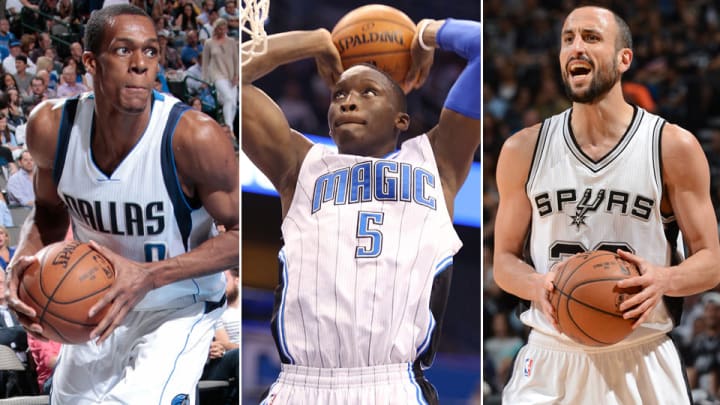
Creating a defined list inevitably leads to snubs, the likes of which run deep with our ranking of Top 100 NBA Players of 2016.
In some sense, stopping at 100 is an arbitrary end point. There isn't a dramatic difference between our final pick and those players who narrowly missed the cut, and one could make a compelling case for many of those omitted to claim one of the last spots. Beyond that, there are handfuls of relevant players who are well regarded but noticeably absent, unseated by the sheer number of qualified candidates. The list below is a combination of those two groups—a collection of 25 notable omissions, though not squarely a queue of those players next in line. In alphabetical order:
Tony Allen, Grizzlies
First Team All-Defense. When an NBA lifer like Kobe Bryant and a new-school statistic like Defensive Real-Plus Minus agree that you’re an elite defender, you’re an elite defender. Allen, the Grizzlies’ 33-year-old lockdown wing stopper, ranked No. 3 league-wide in DRPM in 2014–15, and he pulled in his fourth career All-Defensive selection after helping lead Memphis to the league’s No. 4 defensive efficiency ranking. A floor-cruncher on offense due to his lack of range and limited distribution ability, Allen had to be removed from the rotation during a second-round playoff series against the Warriors for matchup purposes. That, plus the fact he’s missed 48 games over the last two seasons, kept him outside SI’s Top 100. — B.G.
• MORE NBA: SI.com's Top 100 of 2016 | Biggest snubs | Process explained
Omer Asik, Pelicans
SI.com's Top 100 NBA Players of 2016
The past few seasons have seen Asik drift from from being a standout defensive big to just another quality defender among many. The rest of his game just couldn’t take that hit while maintaining top-100 performance. Asik offers defense, elite rebounding (he finished third in total rebound rate), and little else. Any kind of concession in those strengths makes his negative offensive game that much harder to bear, thus limiting how many minutes he can realistically play and curbing his overall utility. — R.M.
Harrison Barnes, Warriors
One of many players to benefit from Golden State dumping coach Mark Jackson for Steve Kerr, Harrison Barnes posted career highs in points, PER, Win Shares and True Shooting Percentage in 2014–15, his third NBA season. The 23-year-old former lottery pick rejoined the Warriors’ starting lineup, replacing Andre Iguodala, and he feasted on the many open looks generated by Stephen Curry and Klay Thompson. At 6’8”, Barnes has prototypical wing size, but he’s also effectively swung up to play a smallball four, further stretching the court for the space-obsessed Warriors. Although Barnes could be in line for a monster rookie contract extension, and maybe even a max offer sheet if he makes it to restricted free agency next summer, his middle-of-the-pack status in the Warriors’ pecking order contributed to his snubbing this year. — B.G.
• MORE NBA: Barnes adjusts to Warriors' small-ball, life among the trees
Jamal Crawford, Clippers
Although Jamal Crawford, 35, plays with a child-like joy and occasionally looks like he’s discovered the Fountain of Youth, it’s possible that age is finally creeping up on the shoot-first two guard. The 2014–15 season was his least productive since his disastrous one-year stop in Portland back in 2011–12, and he saw his playing time cut noticeably by coach Doc Rivers. The Seattle native remains perhaps the most entertaining ball-handler in the league and a four-point play magician, but he also had the dishonor of ranking dead last among 91 shooting guards in Defensive Real-Plus Minus. With J.J. Redick, Austin Rivers and off-season trade acquisitionLance Stephenson all vying for backcourt minutes alongside All-Star point guard Chris Paul, Crawford’s role is likely to further diminish, barring injuries. Rough shooting numbers in the 2015 playoffs, plus the fact that L.A. was significantly better on offense and defense without him last season, sealed his fate here. — B.G.
• MORE NBA: SI.com's top 100 NBA players of 2015 | Last year's snubs
Wilson Chandler, Nuggets
Chandler is a good player at as many as three positions—an attractive quality for the purposes of this kind of exercise. Cracking the top 100, however, all but requires the kind of specific strength that Chandler’s game lacks. He’s an NBA-caliber athlete but not especially explosive, a useful defender though not exactly notable, a serviceable shooter but ultimately not a reliable one, a good rebounder for his position but nothing more and a nice supporting part albeit with limited upside. There’s no doubt that Chandler is the kind of all-around contributor who would prove valuable to any number of systems. His case for the top 100 simply falls short amid talented players with higher ceilings and more established specialties. — R.M.
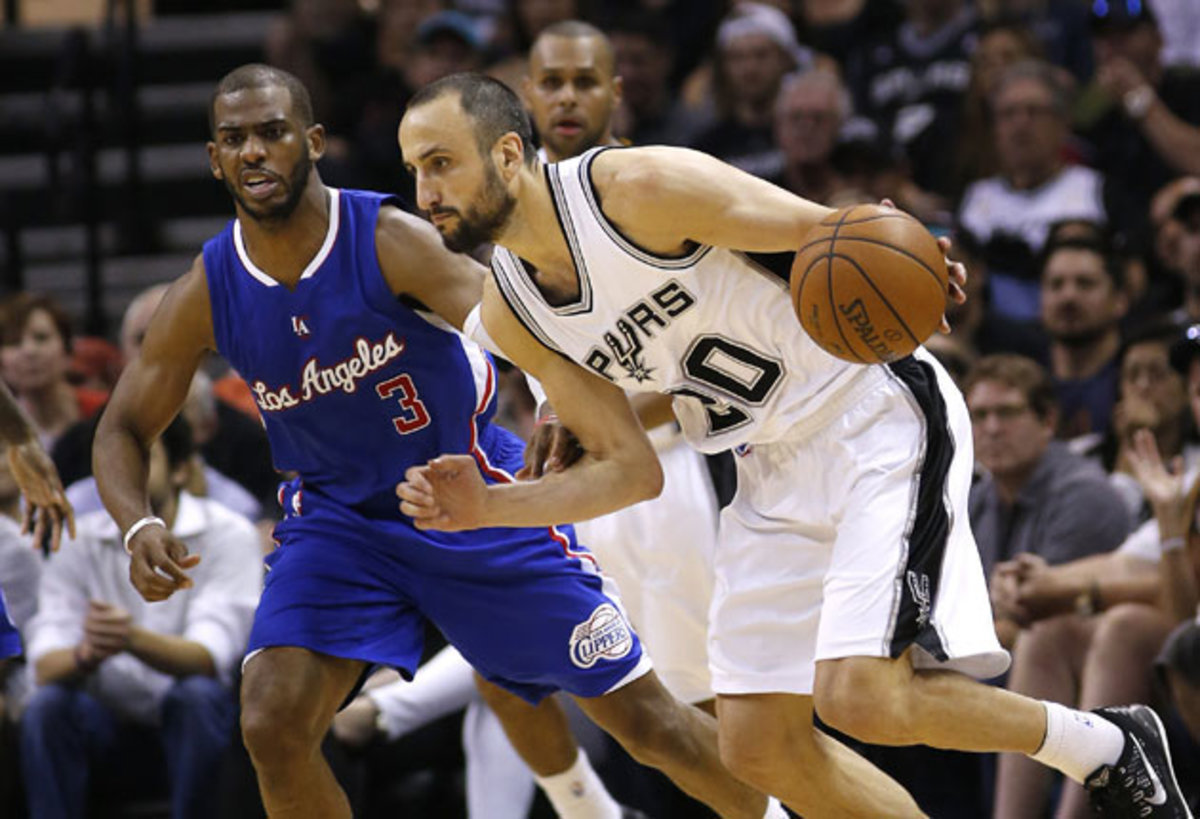
Without question, last season saw significant slippage from Manu Ginobili, 38, who never quite managed to be the same situational piece of dynamite that he was during San Antonio’s run to the 2014 title. The legendary Argentinean sixth man didn’t see his per-game numbers fall off a cliff, necessarily, but the eye test was less kind to him, particularly during the playoffs. Ginobili’s 16.2 PER was the lowest since his rookie campaign, his 3.7 Win Shares were the fewest of his career, and his eight points per game and 34.9% shooting in the playoffs represented career-lows. Try as he might to ignite the Spurs’ tough first-round series against the Clippers, he just couldn’t do it. If not for San Antonio’s monster summer, which included the re-signing of Tim Duncan and Kawhi Leonard plus the addition of All-Star forwardLaMarcus Aldridge, one wonders if Ginobili would have hung it up rather than re-up on a two-year, $5.7 million contract. — B.G.
• MORE NBA: Ginobili carrying the torch for best second-rounders in league
Eric Gordon, Pelicans
Gordon’s career, once promising enough for him to be the returning centerpiece of the Chris Paul blockbuster, has leveled out into starter-caliber mediocrity. He’s fine, really. Gordon was a terrific shooter for the Pelicans last season whenever he could get his feet set and decidedly less useful when called into greater creative responsibility. The pick-and-rolls he initiates don’t tend to go anywhere in particular, making his handle better used for attacking close-outs than initiating offense. Ultimately, he gets by. Gordon just doesn’t have enough to add defensively (where he’s competitive but undersized and not as agile as many of his positional peers) or on the game’s margins (where he rated as one of the worst rebounders in the league) to make up for his somewhat limited functionality. — R.M.
Brandon Jennings, Pistons
Only the basketball gods could be so cruel as to end the most fruitful stretch of Jennings’s career with a ruptured Achilles. The Jennings we saw at the turn of the calendar year had the makings of a top-100 player; for 13 magical January games, Jennings averaged 26.1 points and nine assists (on improved shooting percentages) to profoundly positive overall impact. That stretch proved inscrutable. We never were quite able to figure out how long the surge in Jennings’s play might last or how painfully he might have regressed to the mean. Now that concern comes secondary, as any expectations for Jennings must be reset relative to his injury. If the 25-year-old guard really is the player we last saw in January, he need only to prove it by picking up where he left off. — R.M.
• MORE NBA: Pistons trending up with Jennings back and Stan Van Gundy
Terrence Jones, Rockets
There are a number of reasons to believe that Rockets forward Terrence Jones could be in for a breakout season in 2015–16: he’s established himself as an NBA-caliber talent, he fell off the radar last year due to a nerve injury that cost him more than half the season, he should get more run this year following the off-season departure of Josh Smith to the Clippers, and he possesses the athleticism to keep up with Houston’s fast-paced approach and the inside/outside versatility that is en vogue among power forwards. Jones, 23, is a productive rebounder on both ends who does most of his scoring in the basket area, finding second-chance points, cutting into space behind the defense and serving as a release valve when teams load up on James Harden or Dwight Howard. The 2012 first-round pick looks like a strong bet to make future versions of this list. — B.G.
Enes Kanter, Thunder
The first time I played Laser Tag, I didn’t know the rules and wound up spending the entire session shooting my own team’s targets. That memory of self-inflicted failure comes to mind every time Enes Kanter’s defensive stats flash across the screen. Before Utah traded Kanter to Oklahoma City at the deadline, the 6’11” Turkish center made the Jazz’s defensive efficiency 4.1 points worse. After the trade, Kanter made Oklahoma City’s defensive efficiency 6.3 points worse. For the season, Kanter’s -3.87 Defensive Real Plus-Minus was the worst among all traditional fours and fives (including Andrea Bargnani). The slow-footed, late-to-react Kanter wasn’t actually scoring points on his own team’s hoop, but it sometimes felt that way. Although Kanter’s solid low-post scoring and high-volume rebounding proved sufficient to land him a four-year, $70 million offer sheet in free agency, which the Thunder felt compelled to match, there just wasn’t room for such a blatantly one-way profile in the Top 100. Perhaps a year surrounded by Oklahoma City’s embarrassment of riches back at full strength will help even out Kanter’s game. — B.G.
Kevin Martin, Wolves
Martin can shoot. That point has never really been up for debate since his rise with the Kings of the mid-2000s and it wasn’t in contention in the 39 games Martin played for the Timberwolves last season. More complicated is the calculus of how Martin’s all-around scoring game, which leverages his quick-firing ability to draw free throws and get to the basket, measures up against what he takes away from a team defense. Some matchups make Martin a bigger problems than others. Overall, he’s so flimsy in coverage he had to be bumped him down in our rankings and out of the top 100 for the sake of fitting players with more balanced games. — R.M.
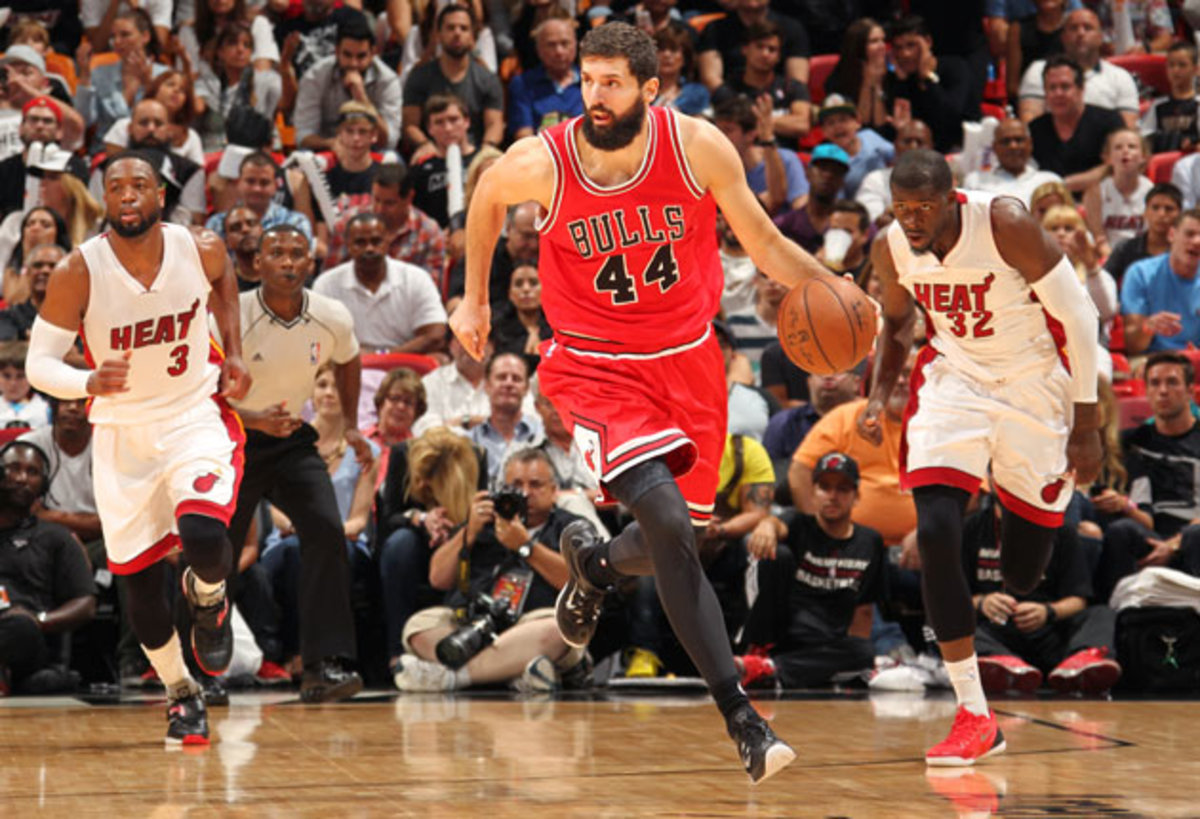
Mirotic’s game comes alive when he has the ball in his hands and an opportunity—any opportunity—to score. Sometimes his zeal for putting points on the board causes him to hold the ball too long or miss a teammate as they spring open. More generally, it imbues every move Mirotic makes with the kind of confidence-bordering-on-brashness that helps it to succeed. A power forward who doesn’t hesitate from the perimeter is a clear value in itself. When opponents have to cover bigs who are comfortable in making snap decisions on the perimeter, their defensive rotations have little room for error. Solid improvement would make Mirotic a compelling case for next season’s list. — R.M.
Nene, Wizards
“Maddening” is the watchword with Nene, a physical, athletic big who can do so much but often chooses not to. A player with his post-up skills and mid-range mobility shouldn’t be so inconsistent. Yet Nene ebbs and flows from an extreme of play-to-play dominance to one of near invisibility—a significant problem for a player likely to lose 15–20 games in any particular season to injury. Were Nene, whose defensive value is one important constant, either inconsistent or injury prone, he’d be an easy inclusion. That he qualifies as both makes him difficult to count on. — R.M.
• MORE NBA: Wizards' Brad Beal leads fourth-year players set to make jump
Josh McRoberts, Heat
McRoberts is a subtle contributor—so subtle, in fact, that his irrelevance by way of traditional counting stats (McRoberts holds career averages of 10.3 points and 7.4 rebounds per 36 minutes) is legitimately disconcerting. What reassures is the lingering trend that when McRoberts plays, his team improves. The offense of the 2013–14 Bobcats might have only been mediocre with McRoberts in the mix but it suffocated without him. In the 17 games he played last season for Miami after returning from a torn meniscus, McRoberts gave similar relief to the Heat’s scoring efforts.
That influence is an expression of the right set of skills applied in a purposefully unobtrusive way. McRoberts is most comfortable and effective as a facilitator. He’s a good enough shooter from distance (36.5% over the past two seasons) to give defenders pause in leaving him and so skilled with the ball as to break down a defense from the outside. Nothing in his game fits the big man prototype. Thankfully he came up as a player into an era of flexible, motion-oriented basketball that could enable his playmaking. — R.M.
Victor Oladipo, Magic
As with all of Orlando’s young prospects, it’s difficult to determine exactly how much credence to give Victor Oladipo’s numbers. At face value, 18/4/4 sounds great for a second-year combo guard still getting his feet wet, but there’s a nagging feeling of emptiness because the Magic failed to hit 30 wins in the East for the third straight year. Oladipo, 23, has yet to prove he does anything great, aside from 360 degree dunks, of course. While his explosiveness and defensive potential are alluring, he’s still stuck in the “prove it” stage for now. — B.G.
• MORE NBA: The Fundamentals–Oladipo | Scott Skiles Q&A: Magic's future
Jabari Parker, Bucks
This snubbing isn’t so much an apology for missing the cut as it is a head’s up that Jabari Parker, 20, is officially on the radar. The No. 2 overall pick in 2014, Parker has All-Star potential as an alpha scorer with an old-school polish to his offensive game. He looked headed for an entertaining Rookie of the Year run-off with Andrew Wiggins, the eventual winner, before he suffered a season-ending ACL injury last December. Although Milwaukee made due just fine without its prized rookie forward in 2014–15, there’s a very good chance that the Bucks will soon live and die by Parker’s contributions. — B.G.
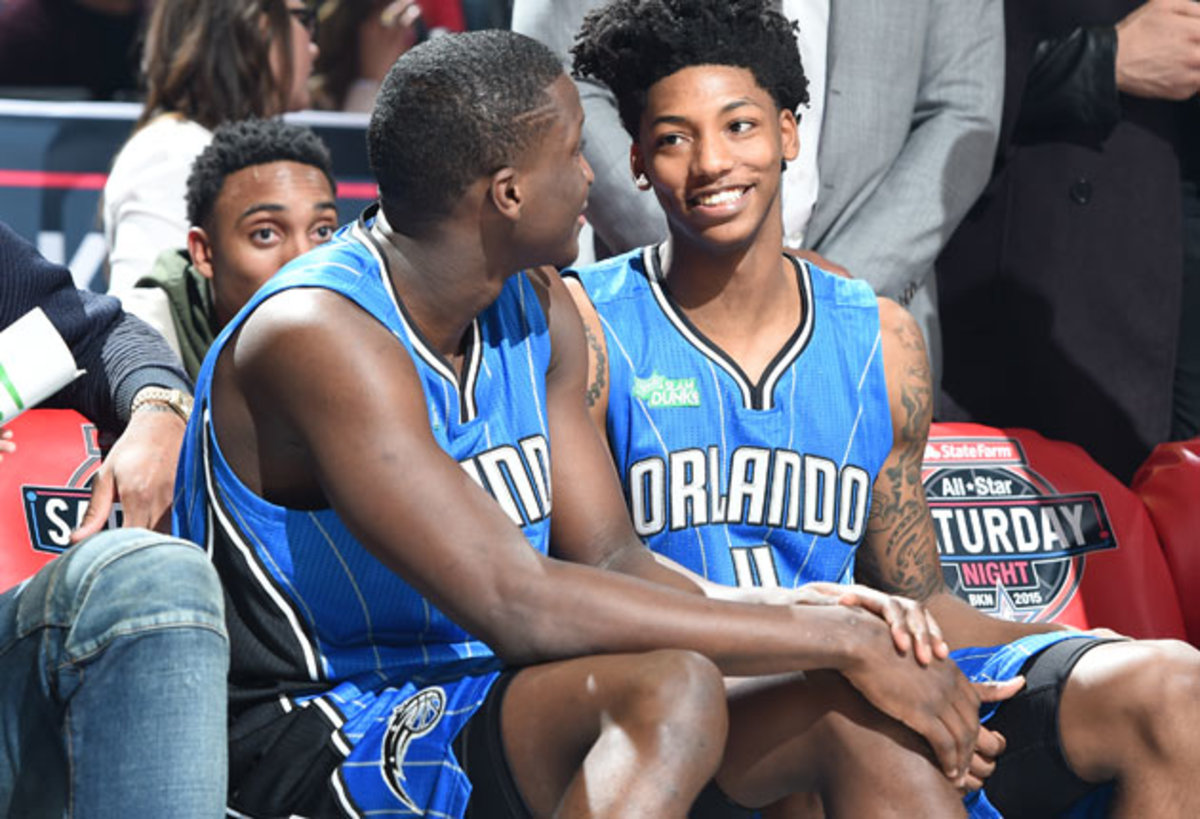
Opponents won’t guard Payton’s jumper until it toes respectability. In the meantime, his otherwise well-rounded play might still pave a way for Payton to join the top 100 in the near future. The 21-year-old guard showed off a certain gumption in his ball handling last season that allowed him to make creative use of tight driving lanes full of sagging defenders. Payton has the imagination and vision to see such plays through. A little more practical experience will only help in those efforts. Payton brings the passing, the rebounding, the ball handling and the defensive enthusiasm already. Now he needs only to bring it all together. — R.M.
Nikola Pekovic, Wolves
No center in the league wants to guard Pekovic, a 285-pound mammoth, when he’s healthy. Unfortunately, that never seems to be the case. Pekovic hasn’t played more than 62 games in a single campaign since his rookie season, and over the last two years he managed just 85 games combined. Burly, efficient post scorers present a unique challenge for modern NBA centers. It’s just a shame that Pekovic can’t ruin the night of his opponent more often than his body allows. — R.M.
Mason Plumlee, Blazers
One of the under-the-radar winners of the summer, Mason Plumlee enters 2015–16 with a new lease on life. Rather than backing up center Brook Lopez, a former All-Star, in Brooklyn, the 6’10” Plumlee now pencils in as Portland’s starter after a draft day trade. Rather than playing for a grumpy old-school disciplinarian in Lionel Hollins, Plumlee will now take directions from Terry Stotts, who should put his end-to-end agility and pick-and-roll finishing ability to better use. Rather than relying on the cast of also-rans who will replace Deron Williams at point guard, Plumlee will take his feeds from All-Star Damian Lillard, who has every reason to cultivate interior scoring options following the departure of LaMarcus Aldridge. This could all set up very nicely for Plumlee, 25, who was productive last season (14.8 points and 10.6 rebounds per 36 minutes) and will be extension-eligible next summer. — B.G.
Rajon Rondo, Kings
If it weren’t enough that Rondo has been in marked decline for years, that his reluctance to shoot has become a bigger problem than ever, that his finishing ability and free-throw shooting have fallen off a cliff, that his interest in playing defense comes and (mostly) goes, and that his attitude makes him a trying sort in any locker room, Rondo sealed his exclusion when he played such a poor, petulant half-season in Dallas that the team opted to finish its run without him. The Mavs didn’t trade or even release Rondo. They simply opted, in the middle of their first-round playoff series against the Rockets, that they would be better off without a player who had done everything possible to get himself removed from Game 2.
• MORE NBA: How Rondo fits after signing one-year, $10 million deal
Champion Rondo at your own risk. So many still get caught up in the idea of what Rondo was back when his difficult ways were more the quirk of a transcendent talent. His ACL tear may have been the breaking point. Rondo hasn’t at all been the same player since, which cost him many of those aspects of his flawed, remarkable game that had made him so effective in the first place. No one questions his playmaking—only how worthwhile a fantastic passer might be when the rest of his game is riddled in tradeoffs. — R.M.
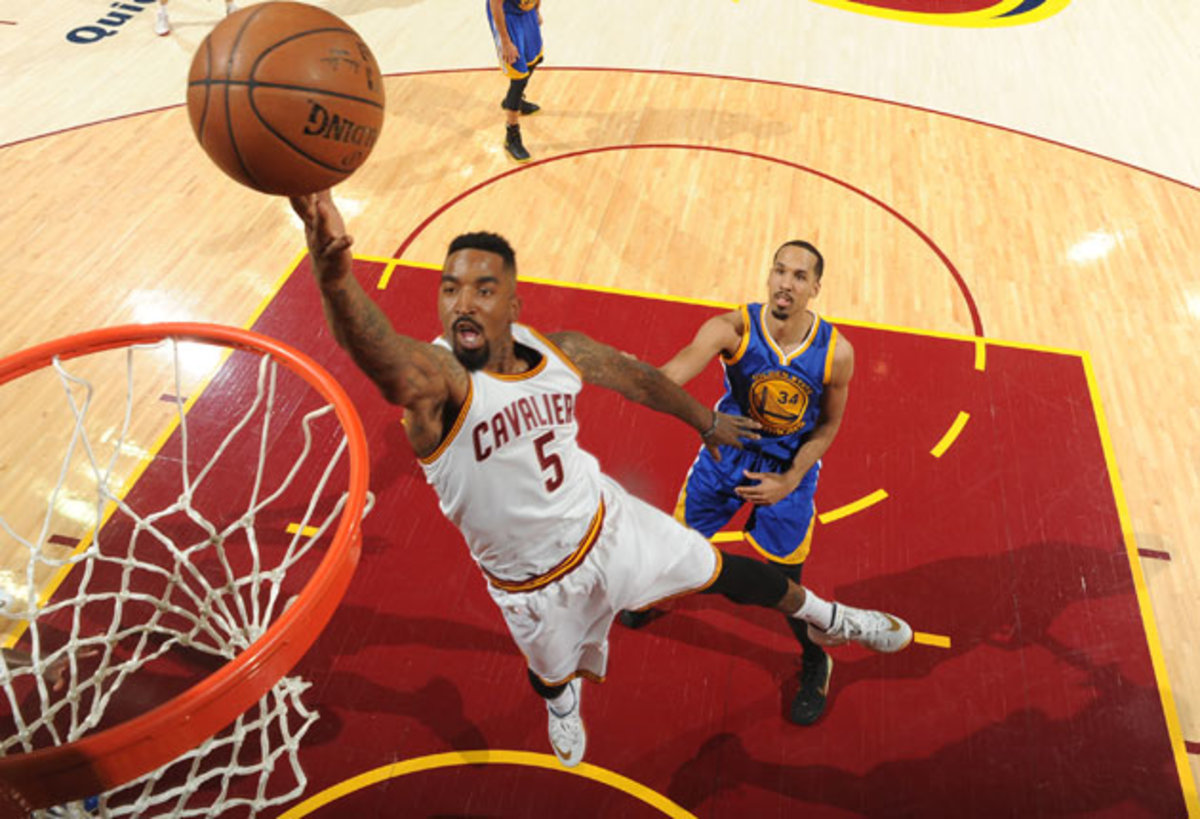
The tepid free-agent market that greeted J.R. Smith this summer was surely influenced by skepticism that his “best behavior” act in Cleveland was a legitimate transformation. Why should anyone believe that Smith, 29, was capable of sustaining reliable production after the quality of his play dropped so dramatically following his 2013 Sixth Man of the Year season in New York? After all, it’s quite a bit easier to walk the straight and narrow when LeBron James’s legacy and a Larry O’Brien trophy are at stake, but few organizations offer that type of persistent peer pressure and potential to win big. Even in Cleveland, Smith’s play was prone to wild swings in effectiveness, and he couldn’t resist drawing headlines and raising eyebrows. In the 2015 playoffs alone, he received a two-game suspension for delivering a cheap shot on Boston’s Jae Crowder, he rode a PhunkeeDuck to the locker room during the Finals, and he pulled out his cell phone to take a selfie with James during a postgame press conference. The flags are just a little bit too red here, even though Smith had a series-changing impact in the Eastern Conference finals. — B.G.
Lance Stephenson, Clippers
If it’s true what Tupac Shakur says—“for every dark night, there’s a brighter day”—then we better start up the “Lance Stephenson for NBA MVP” campaign right now. Nights don’t come much darker than Stephenson’s 2014–15 season, which saw him freefall from hyped free-agent signing to benched bit player. It was all bad: Stephenson, 24, never fit in with his new Charlotte teammates, he couldn’t hit a shot (especially from outside, where he shot an almost-unbelievable 17.1%), and he never earned the trust of coach Steve Clifford. After playing at a near All-Star level with the Pacers in 2013–14, Stephenson ranked outside the top 250 in PER and Win Shares, and outside the top 450 (!) in Real Plus-Minus and WARP during his one season with the Hornets. The whole episode would make a lot more sense if Stephenson had suffered a catastrophic injury he forgot to tell everyone about, but his midseason groin strain doesn’t seem significant enough to qualify, even if it did cost him nearly a month. Regardless, Hornets GM Rich Cho shipped him to the Clippers as soon as humanly possible this summer. L.A. will look to use its winning culture to help Stephenson rediscover his playmaking ability and high-energy defense. — B.G.
• MORE NBA: Clippers' gamble on Stephenson could help or implode team
Kemba Walker, Hornets
Before coming to the NBA, Walker had a lifetime of experience to confirm the idea that good things happened when the ball was in his hands. Life in the pros has offered no corroboration. In four years we’ve seen very little to suggest that Walker is a competent NBA scorer, his impressive averages more a product of volume attempts than bankable skill. We’re talking Nick Young levels of chucking at truly crummy efficiency. Of those players who took at least 15 shots from the field per game last season, the only one to post a lower true shooting percentage than Walker (48.6%) was Kobe Bryant (47.7%).
Walker just doesn’t give the ball up. He dances, he crosses, and he does everything necessary to set up a relatively clean jumper. The returns just aren’t good enough to justify his process, especially when it’s not as if he’s supplementing his case with high-level court vision or especially stingy defense. The only big-picture quality really working in Walker’s favor is his amazingly low turnover rate—the coincidental byproduct of his self-driven style. — R.M.
David West, Spurs
Selected to the Top 100 in each of the last two years, West falls off the list this year due to the one-two blow of age-related decline and a distinct change of scenery. West, 35, has seen his scoring and Player Efficiency drop in each of the last two seasons, and his somewhat surprising, angst-infused departure from Indiana signaled an end-of-career urgency to chase a ring. The 6’9” power forward will take up that cause with the Spurs, where he joins a frontcourt that is absolutely loaded with contributors: Tim Duncan, LaMarcus Aldridge, Kawhi Leonard, Boris Diaw and Matt Bonner, among them. How, exactly, West fits into the rotation puzzle remains to be seen, but his leadership, experience, toughness and willingness to sacrifice financially (he effectively took an $11 million pay cut in moving from Indiana to San Antonio) make him a natural addition to the Spurs’ team-first culture. — B.G.
Tyler Zeller, Celtics
Honestly, Celtics center Tyler Zeller doesn’t get much attention outside of Massachusetts, and that’s hardly a travesty. The skinny 7-footer was only a part-time starter for coach Brad Stevens last year, and he averaged just 21.1 minutes per game with modest numbers (10.2 PPG, 5.7 RPG). However, Zeller, is an advanced stats darling who rates in the top 100 by PER, Win Shares and WARP, and places just outside the Top 100 in Real Plus-Minus. The 25-year-old North Carolina product has scaled up his per-minute production in each of his three seasons, and he should continue to provide excellent value on his $2.6 million rookie contract this year. A durable, hard-working, disciplined center like Zeller is certainly worth keeping in the fold, even if his individual ceiling isn’t sky-high. — B.G.
GALLERY: Best NBA players by jersey number
Best NBA Players by Jersey Number
00 — Robert Parish
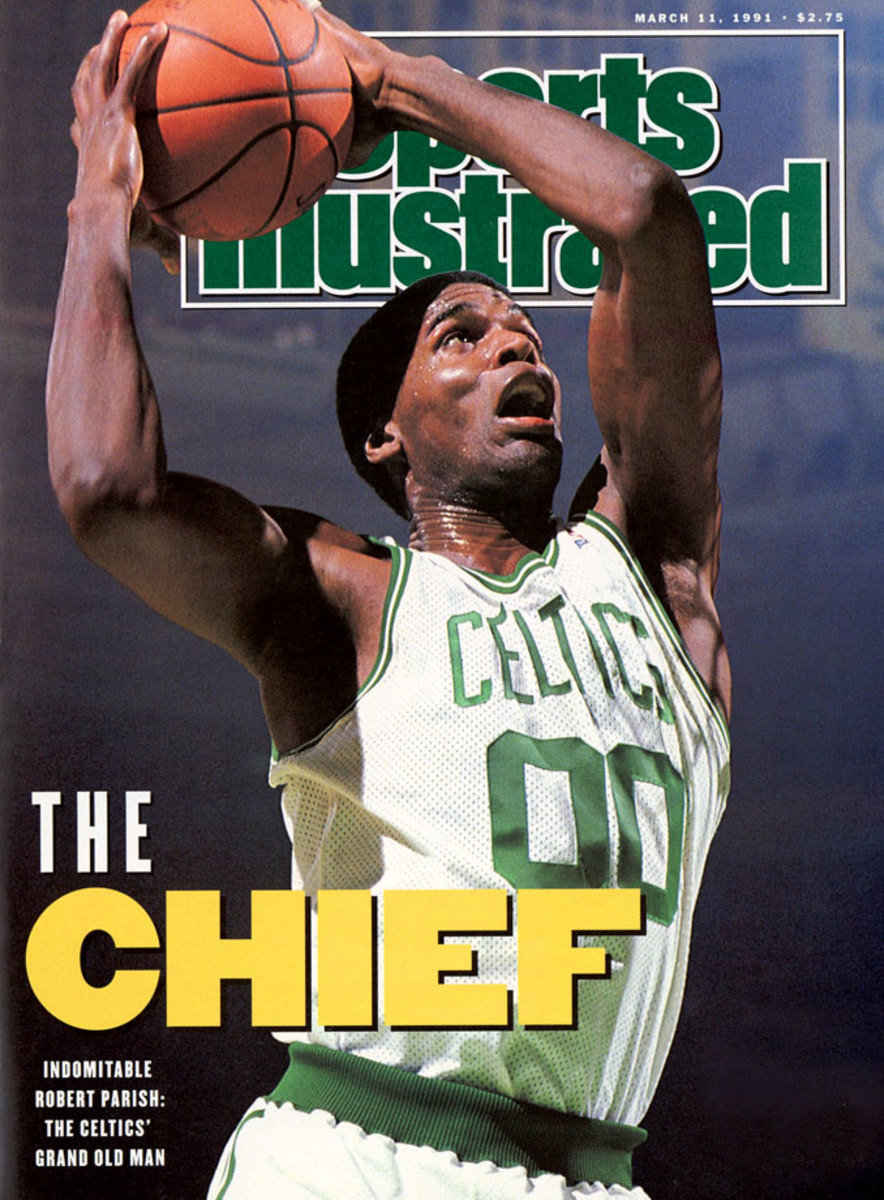
Best known as the defensive anchor of the Larry Bird-led Celtics teams of the 80s, Parish was also outstanding on the offensive side of the ball, a smooth jump shooter who hit at a nearly 54% clip from the floor in his 21-year career and averaged 14.5 points. A four-time NBA champion and nine-time All-Star, Parish’s athletic ability and utility on both ends as a 7-foot center foreshadowed the direction in which his position would head decades later.
0 — Russell Westbrook
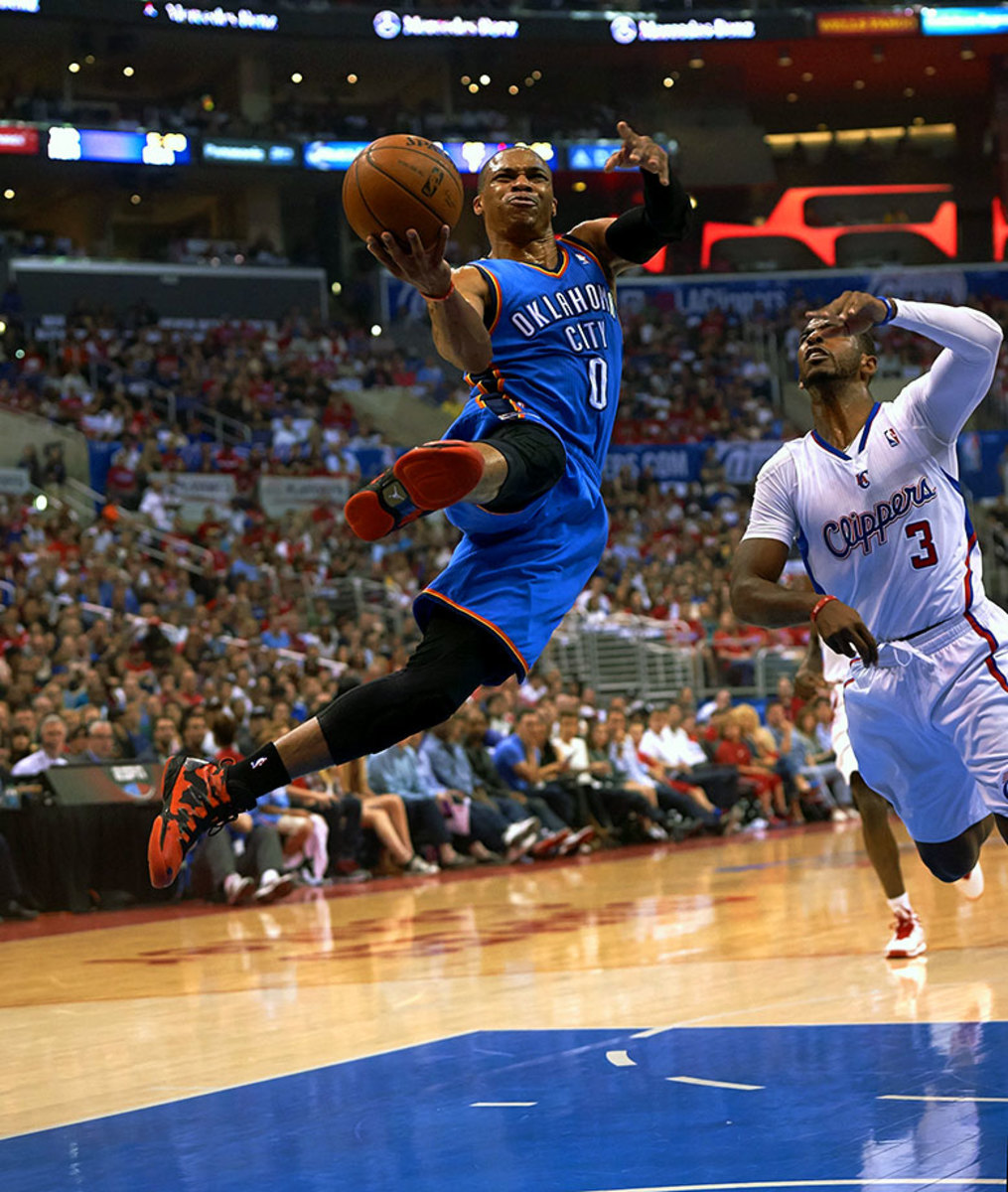
The best may still be to come for Westbrook, Oklahoma City’s dynamic point guard who continues to reshape his position and push the limits after a career season in 2014-15. At 26, Westbrook averaged 28.1 points, 8.6 assists and 7.3 rebounds, single-handedly carrying the Thunder when they needed it most. With Kevin Durant returning to the fold, Westbrook’s numbers may dip, but his efficiency could improve accordingly. His all-around game gives him the nod over Arenas. — Runner-up: Gilbert Arenas
1 — Oscar Robertson
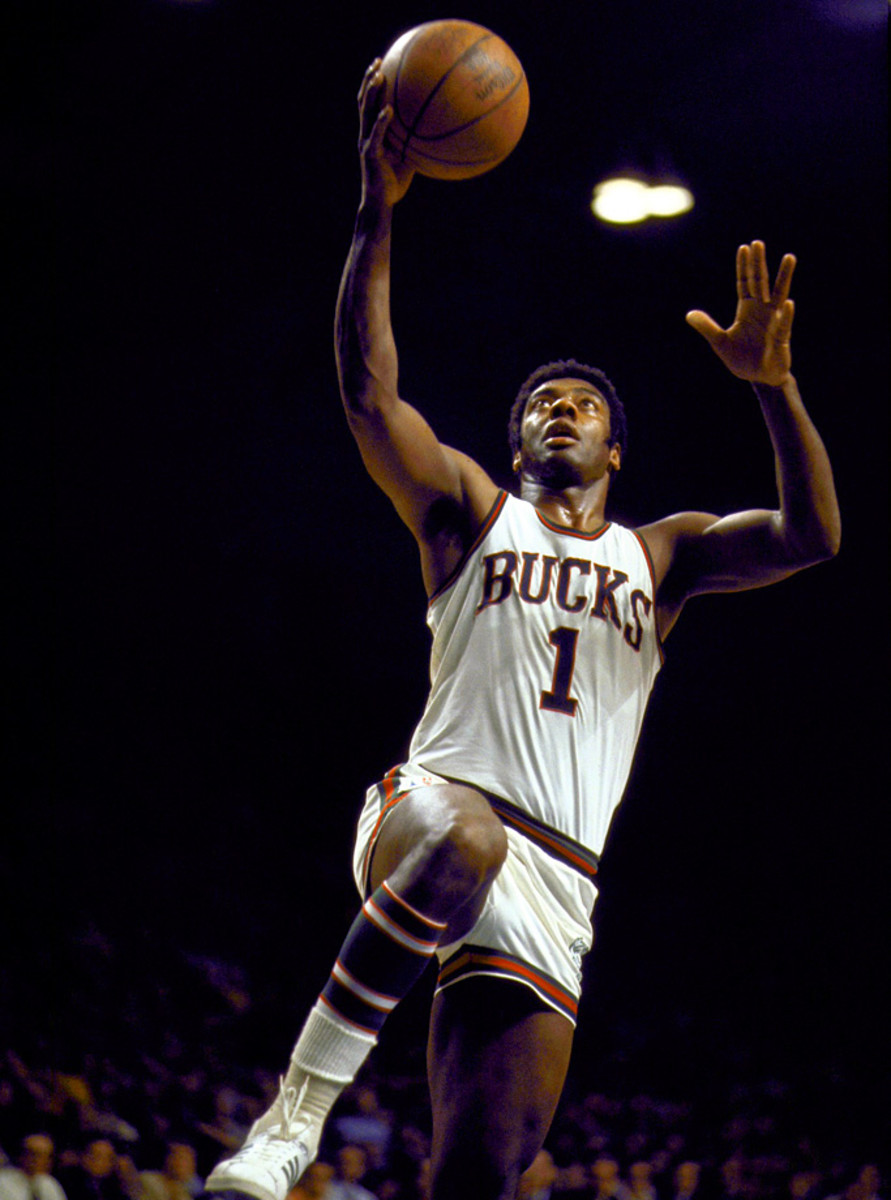
Everyone knows the Big O is the only player in NBA history to average a triple-double for an entire season. What’s lost is the specific stats from Robertson’s most incredible year, in which he posted nightly figures of 30.8 points, 12.5 rebounds and 11.4 assists at age 23, just his second season in the league. — Runner-up: Tracy McGrady
2 — Moses Malone
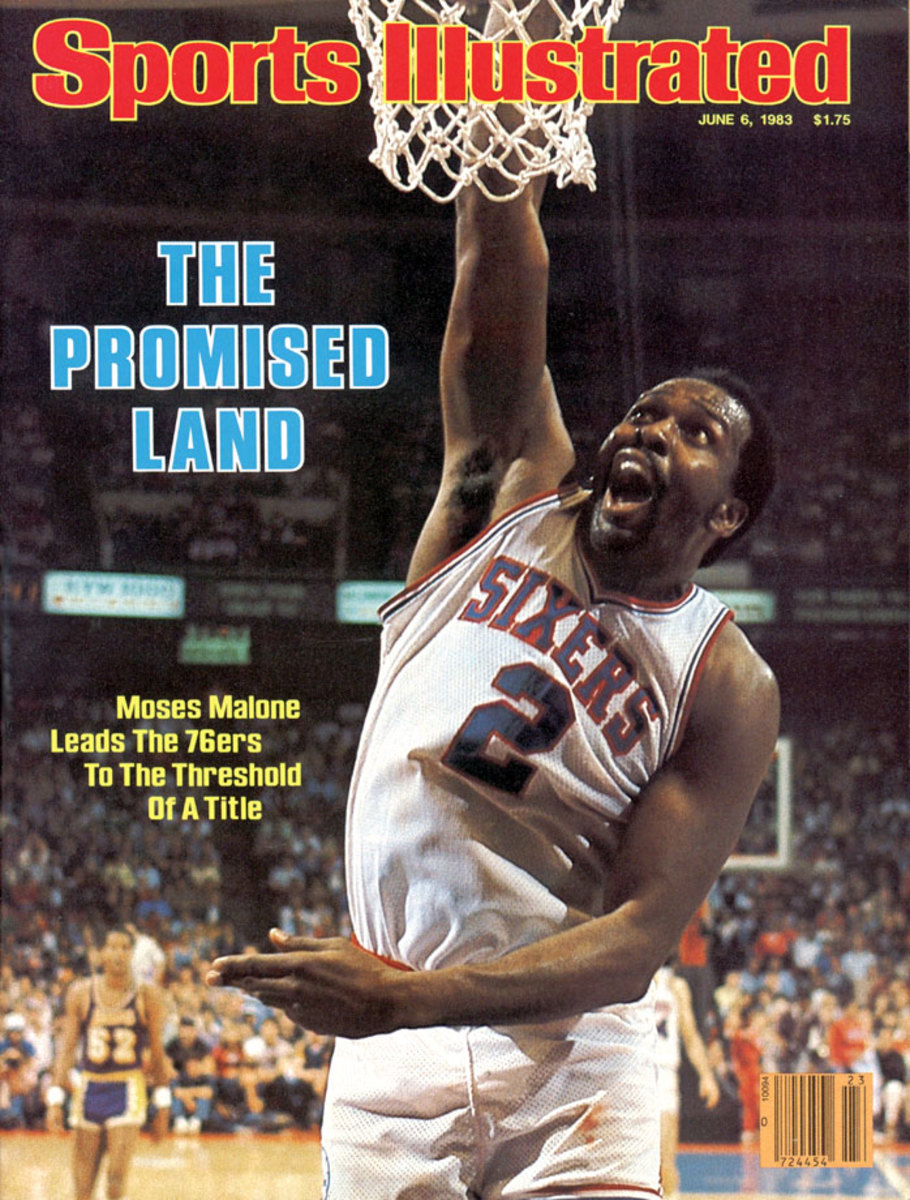
Malone was a statistical behemoth, averaging a double-double as a rookie and never looking back while making several stops around the NBA. A three-time MVP, Malone peaked as a Rocket with a 31.1 point, 14.7 rebound campaign in 1982, the year before signing with the Sixers and subsequently leading them to the ‘83 title as Finals MVP.
3 — Dwyane Wade
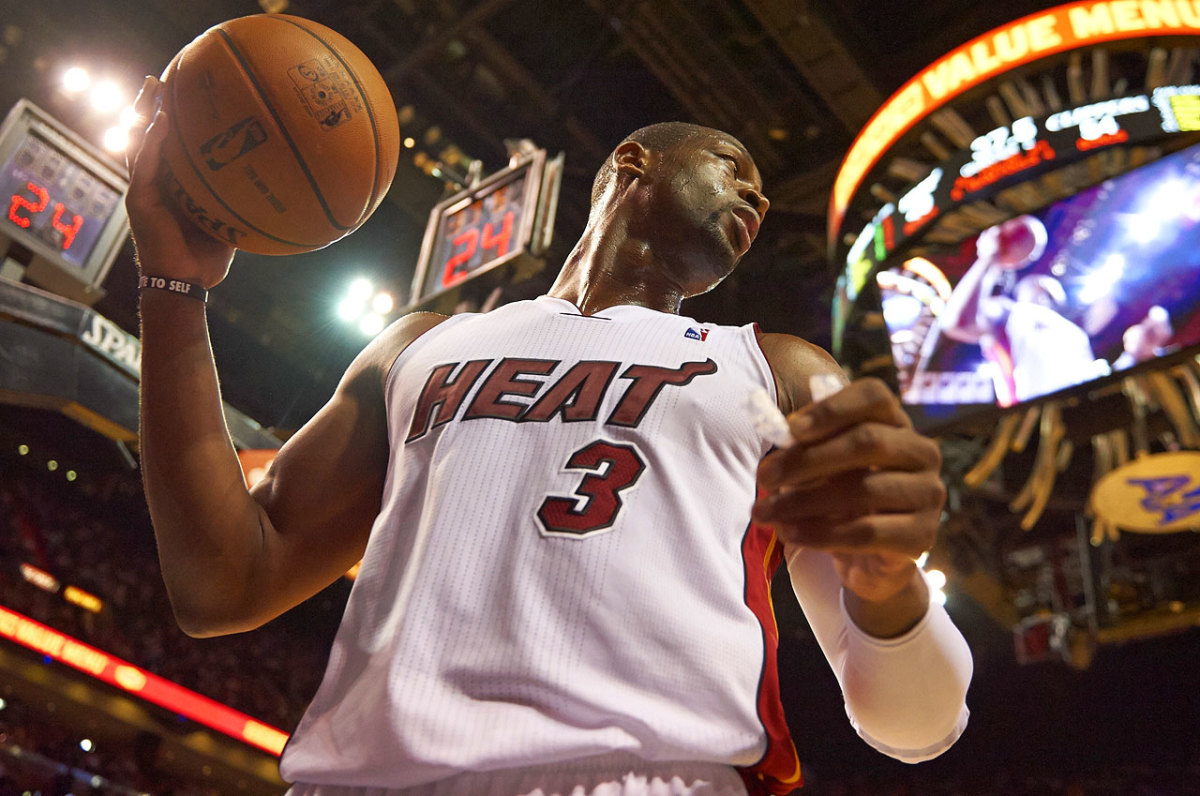
Before Wade annually sat out half of each season to rest and nurse injuries, “Flash” was one of the most electric players in the league. It takes a special player to lead an NBA franchise to its first championship in just his third season. Wade also played at an MVP level over the course of his 2008-09 campaign. — Runner-up: Allen Iverson
4 — Adrian Dantley
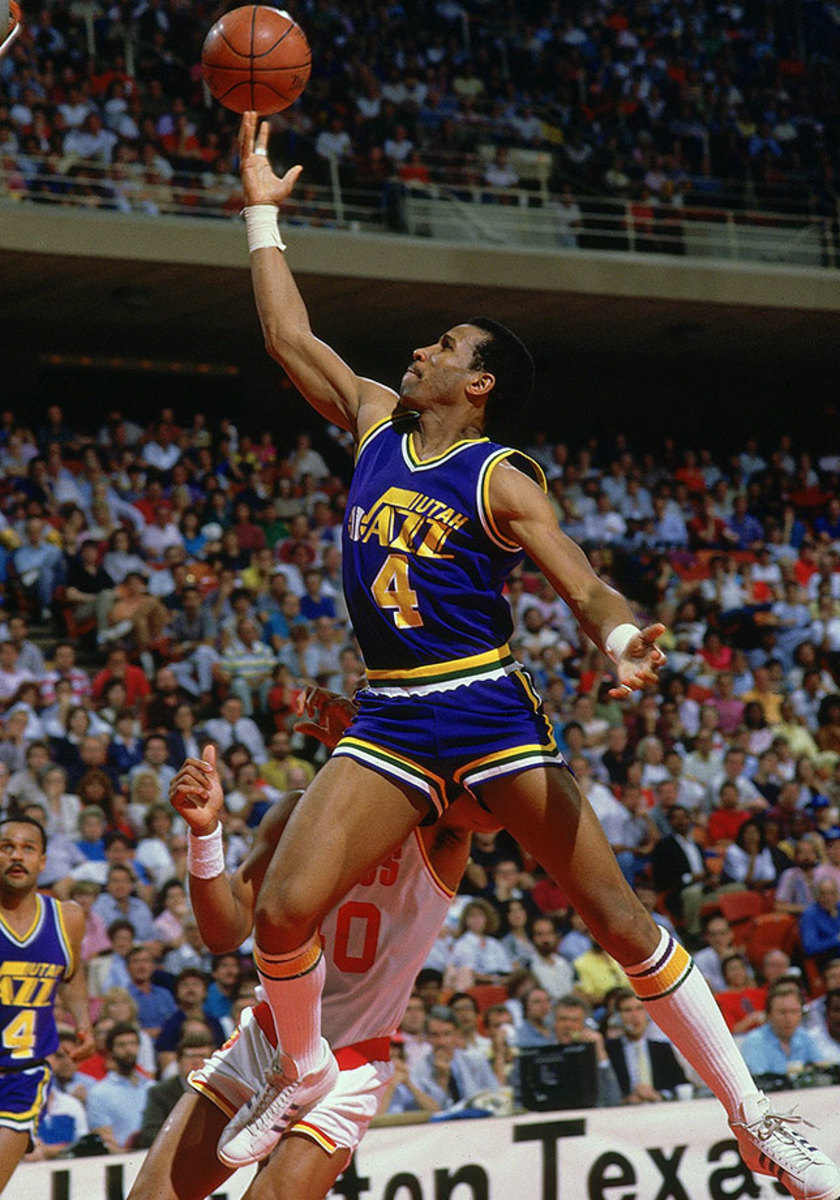
Dantley was one of the league’s most explosive scorers for a long time, making six All-Star games and stringing together four straight 30-plus point-per-game seasons in the early ‘80s, twice leading the league in scoring. Though he almost never shot three-pointers, Dantley finished his career with an average of 24.3 points per game on 54% shooting, working creatively to get buckets from the midrange and around the rim. — Runners-up: Joe Dumars, Dolph Schayes
5 — Kevin Garnett
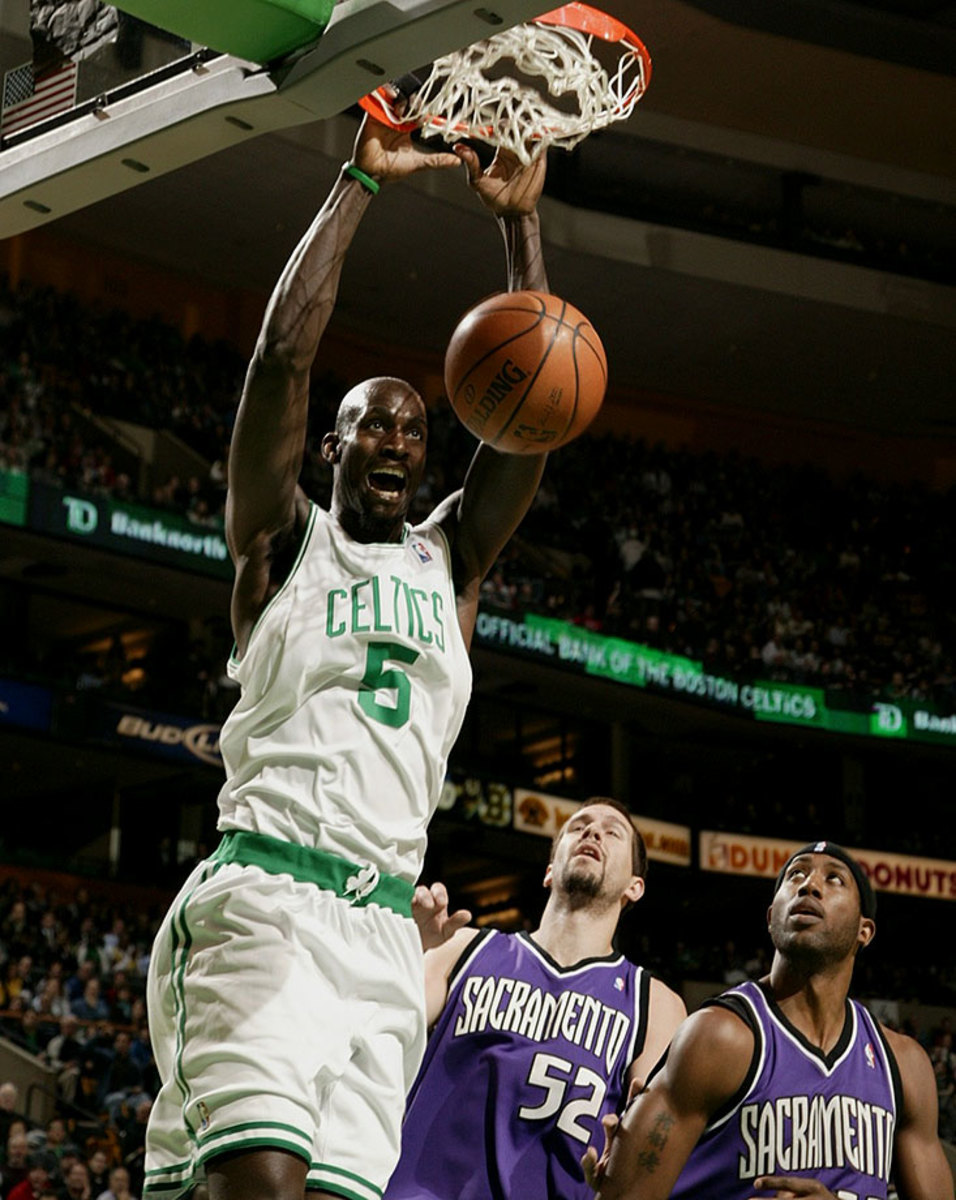
Anything was possible for defenses anchored by Garnett in his prime. One of the greatest prep-to-pro cases of all time and a perennial All-Star and All-NBA selection, Garnett transcended the game with his intensity and antics. Whether getting on all fours to bark like a dog or banging his head against the stanchion, KG always made his presence felt. — Runner-up: Jason Kidd
6 — Bill Russell
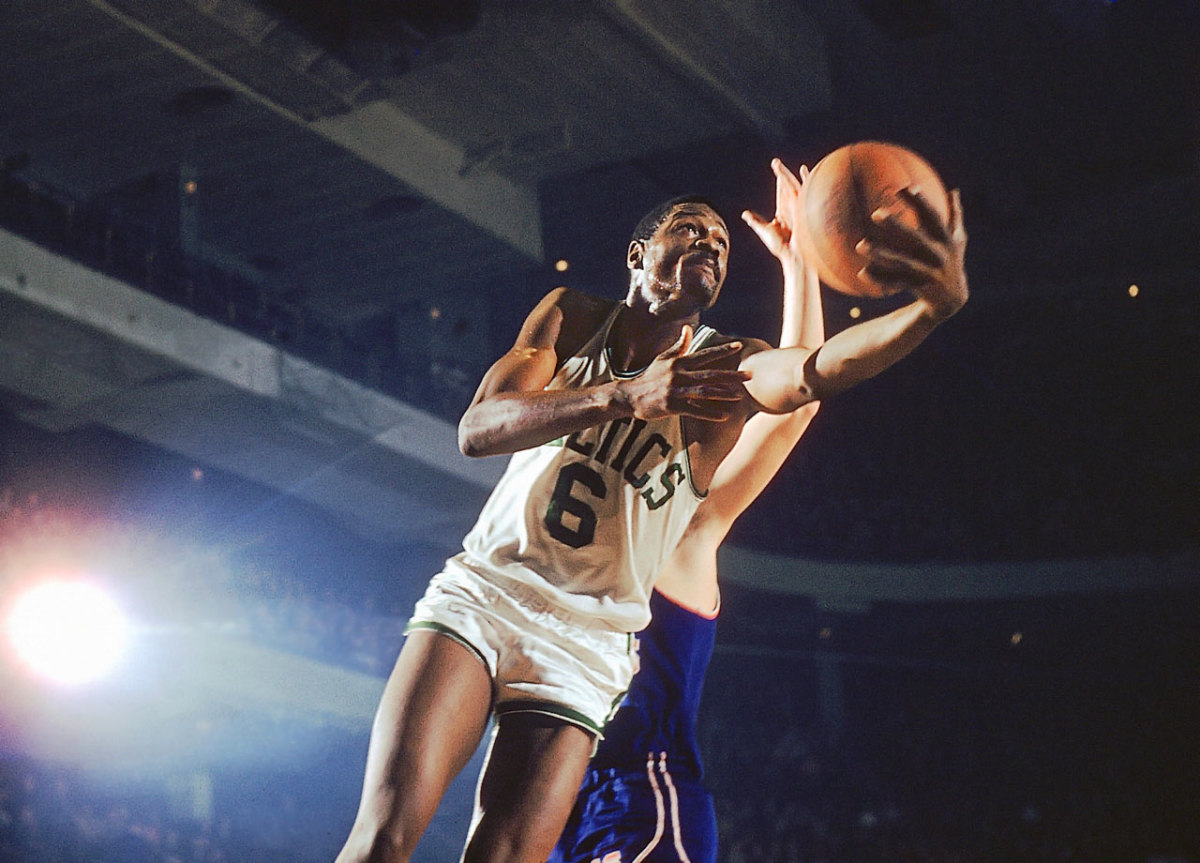
Though another No. 6 continues to make his case in Cleveland, Bill Russell’s 11 championship rings in 13 seasons are impossible for all but the most irrational to argue against. No athlete in the history of major team sports has ever sustained individual dominance and team success quite like Russell, who retired at age 34 before transitioning into coaching and leading Boston to two more titles––like clockwork. — Runner-up: LeBron James
7 — Pete Maravich
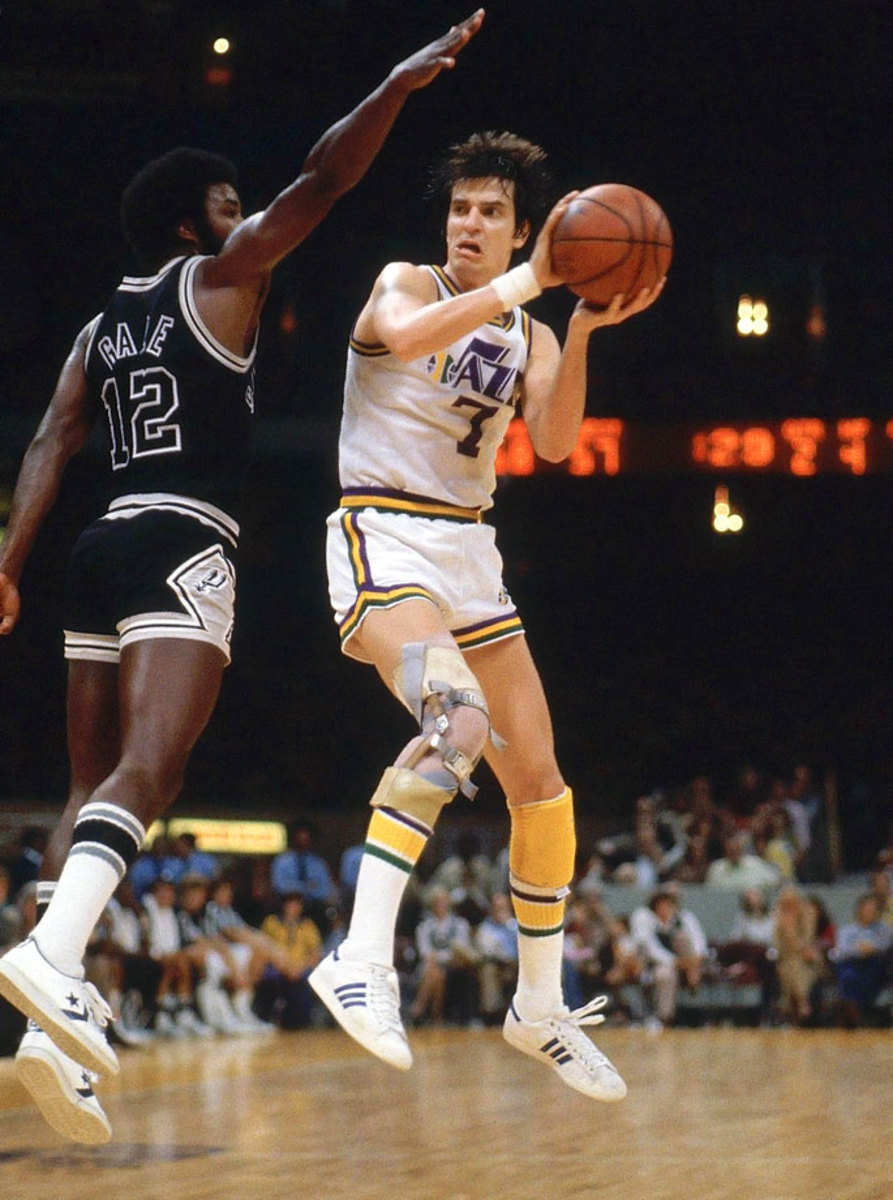
One of the NBA’s greatest scorers and the all-time leading scorer in NCAA history, “Pistol Pete” put up points in style. Ever the showman, Maravich brought a streetball-style game to the NBA. His flashiness helped build basketball’s popularity in the city of New Orleans before the Jazz moved to Utah. — Runners-up: Kevin Johnson, Carmelo Anthony
8 — Kobe Bryant
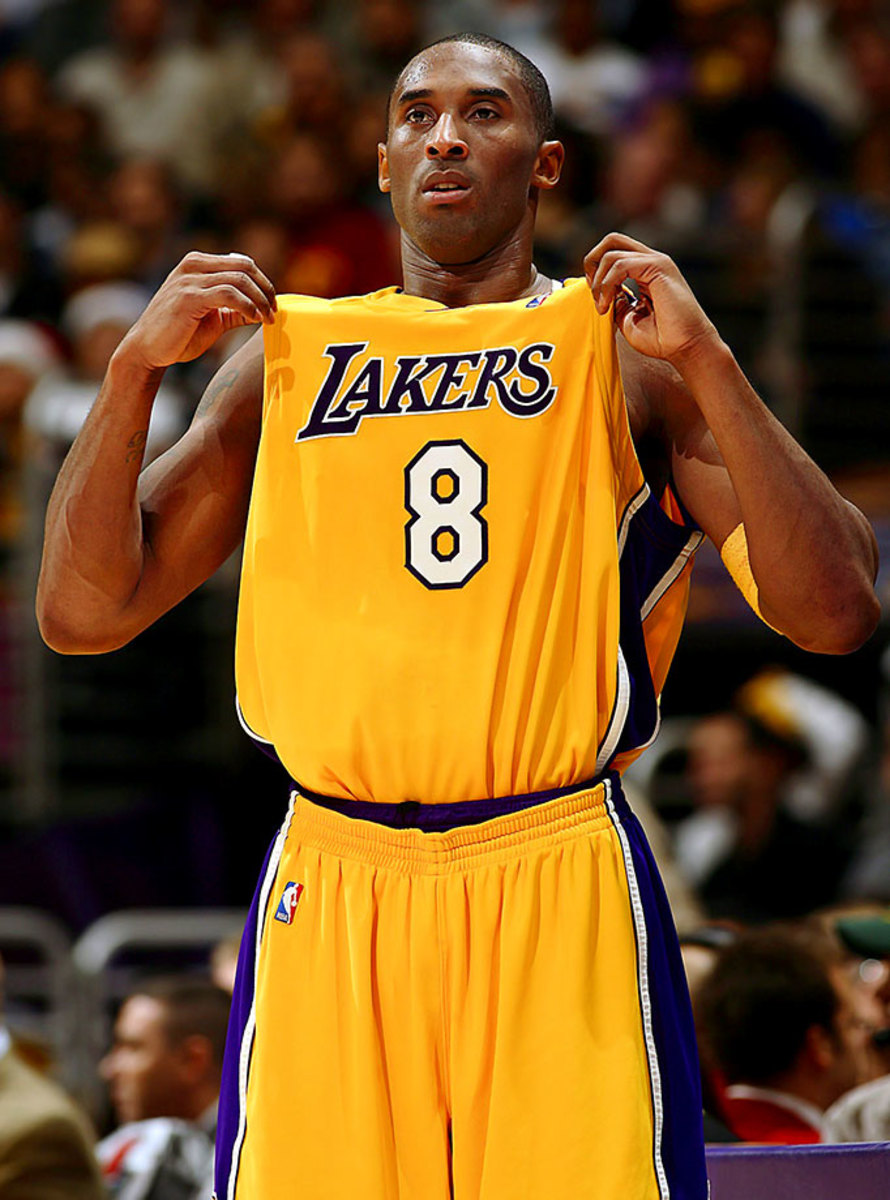
Younger basketball fans may not remember Kobe Bean donning No. 8 early in his career, but the results were prolific, peaking in 2005-06 when he averaged 35.4 points per game. Before there was No. 24 Kobe, the older and wiser Mamba we now know, there was the dynamic slasher who won three titles alongside Shaquille O’Neal, demanded the ball just as much, and demolished defenses in the process.
9 — Bob Pettit
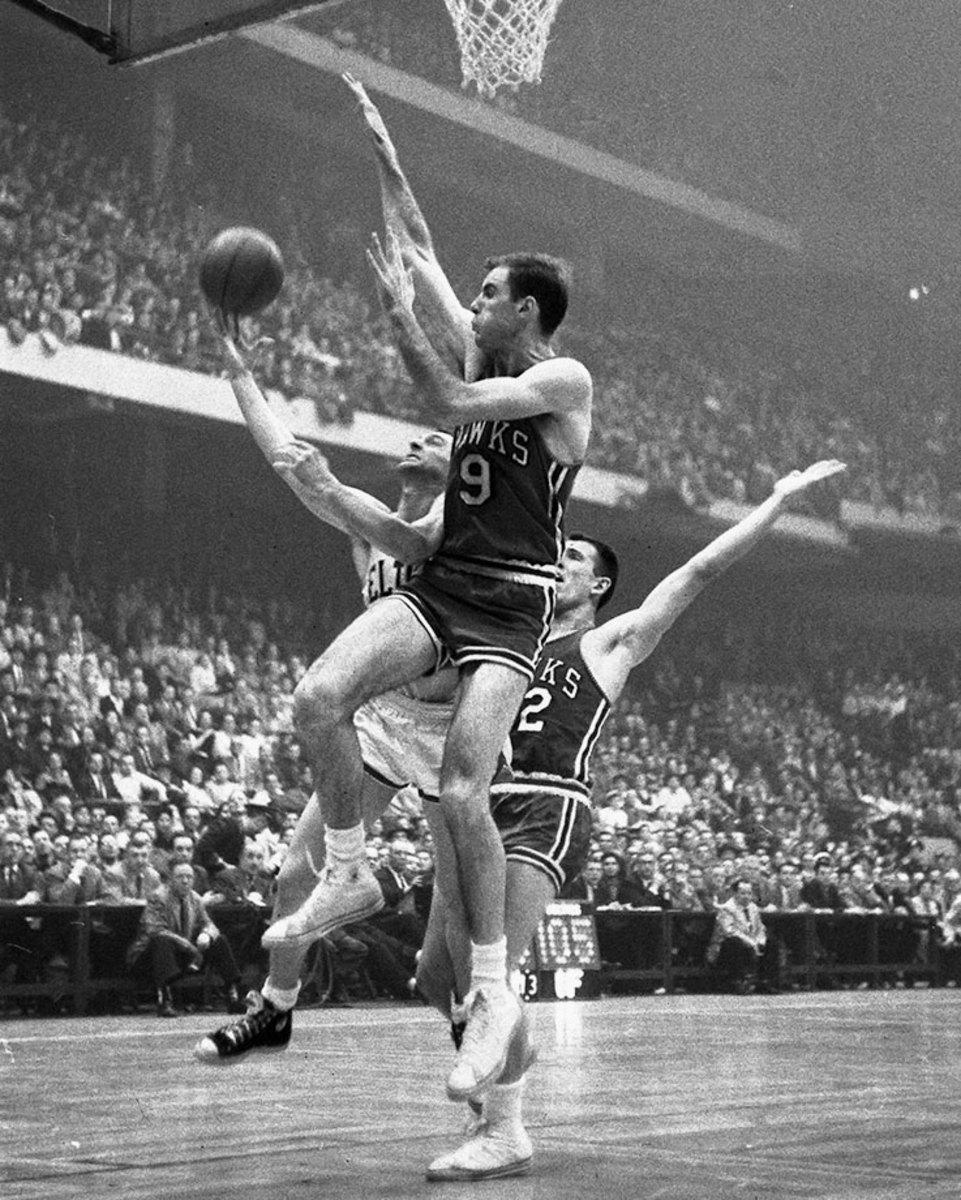
The St. Louis Hawks were the only team to defeat the Bill Russell’s Boston Celtics in an NBA Finals series, with Pettit leading St. Louis to the 1958 title. Pettit took home regular season MVP honors in 1955 and 1959 and led the Hawks to four Finals appearances. He was an All-Star in each of his 11 seasons. — Runner-up: Tony Parker
10 — Walt Frazier
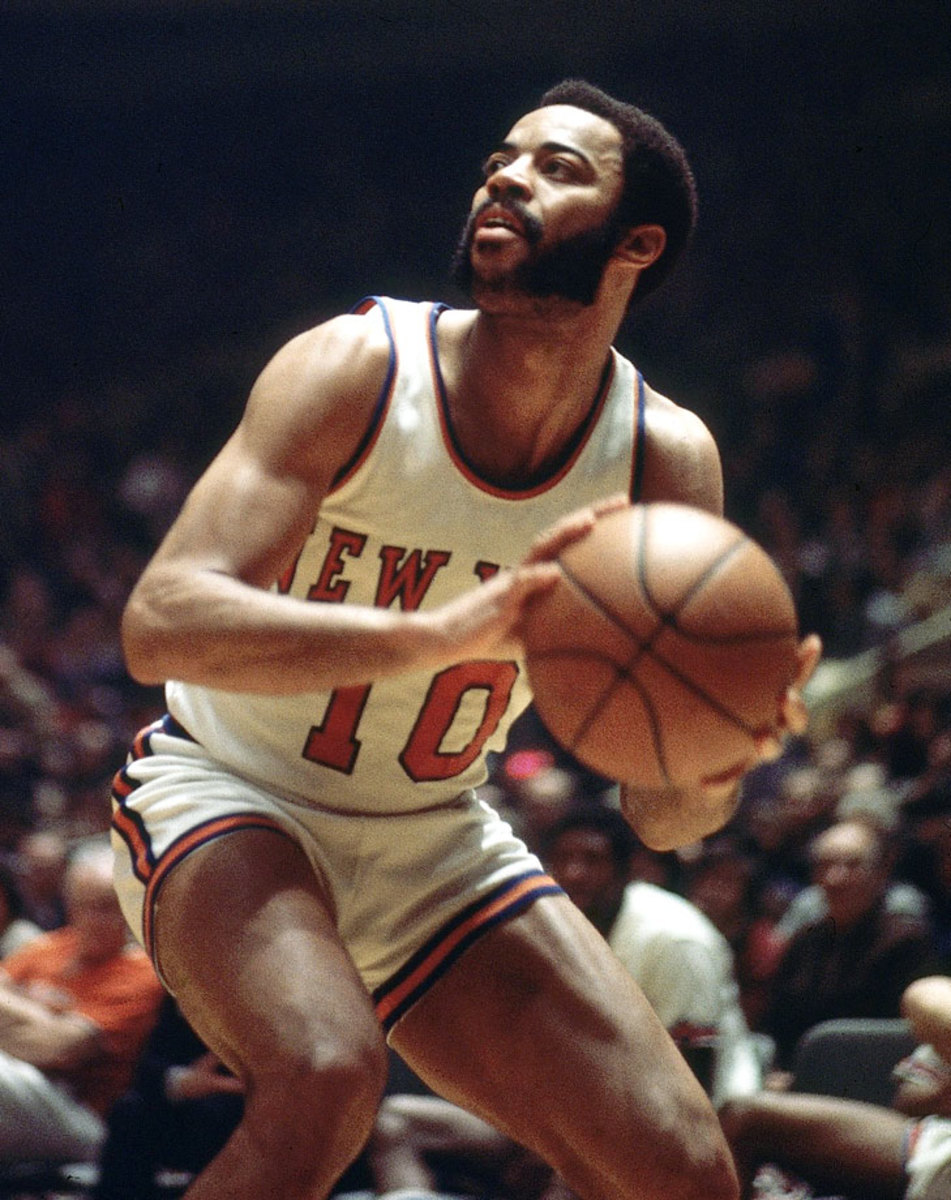
Teaming with Earl “The Pearl” Monroe, “Clyde” helped bring the dazzle and New York style to the Knicks, one of the first truly effective dual-point guard combinations and one of the greatest backcourts ever. A two-time NBA champion, Frazier now sits as one of the greatest Knicks of all-time and one of the league’s most stylish men, even in retirement. — Runner-up: Tim Hardaway
11 — Isiah Thomas
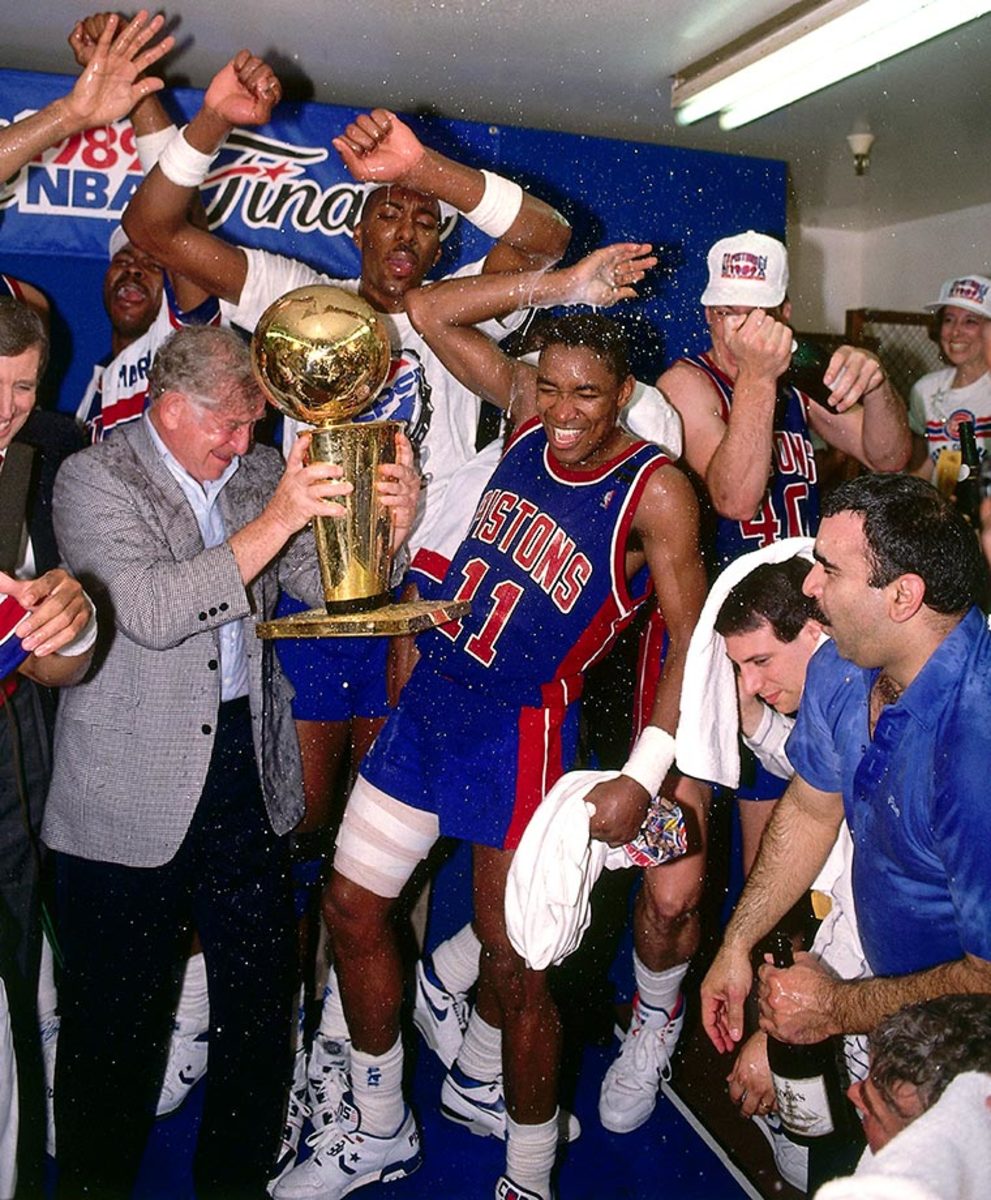
Before Thomas’ front office failures, the feisty Chicago product led the “Bad Boy” Pistons to back-to-back championships in 1989 and 1990. The 12-time All-Star appeared in every mid-season classic during his career save for his final season in 1993-94. He also piloted Detroit to the playoffs in all but two of his seasons. — Runner-up: Elvin Hayes
12 — John Stockton
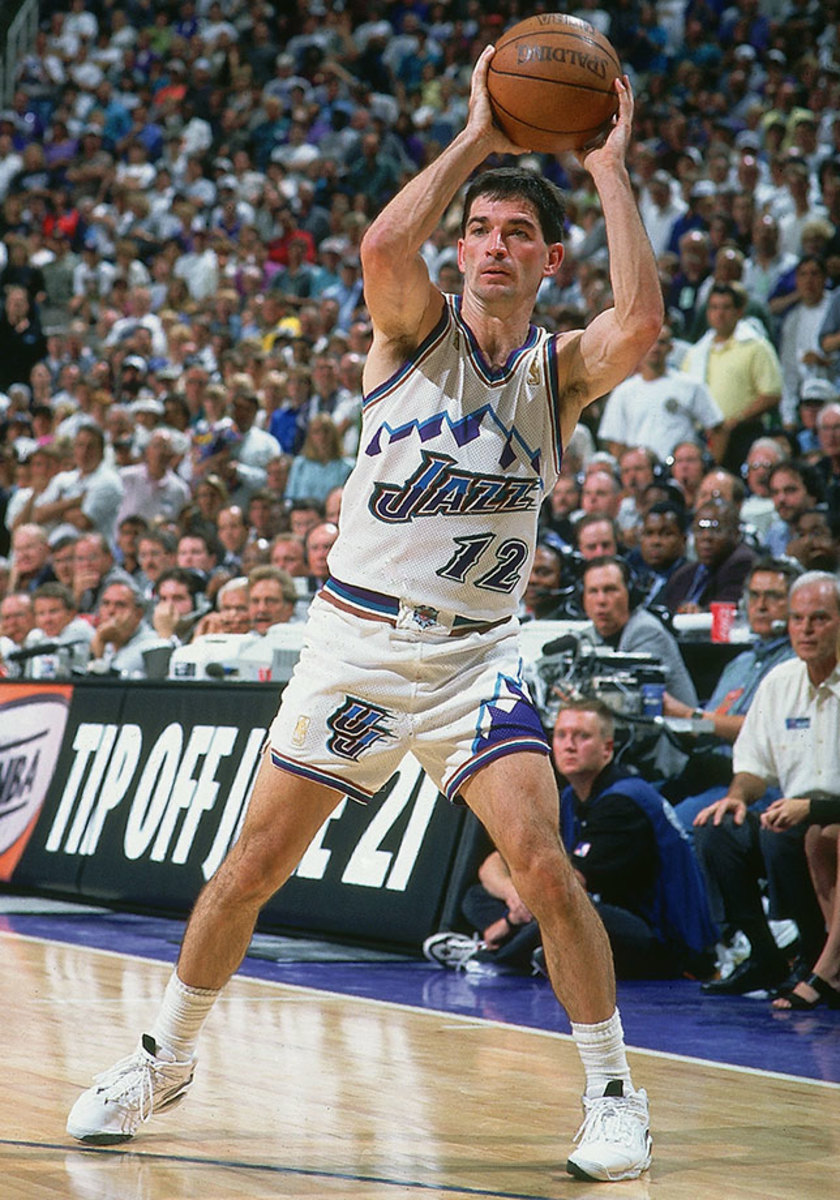
A 10-time All-Star and half of perhaps the most prolific guard-post tandem ever, John Stockton remains the NBA’s all-time leader in assists and steals. He dominated games at a slender 6’1”, with incredible know-how, a hard-nosed approach on both ends and unbelievable consistency all the way until his retirement at age 40. For the definition of a pure point guard, look no further.
13 — Wilt Chamberlain
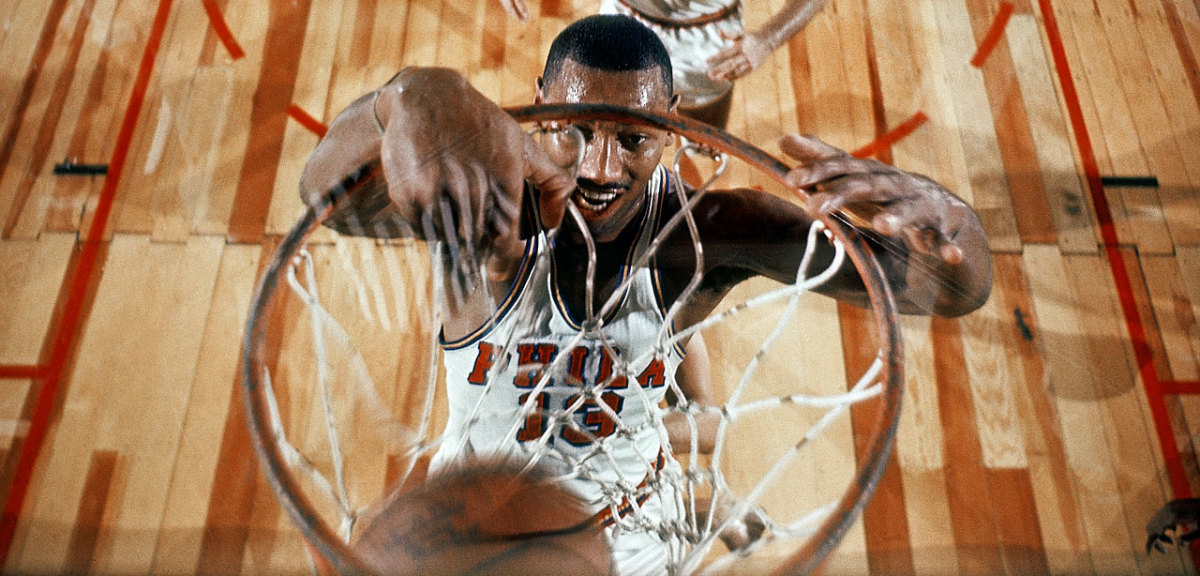
The Big Dipper, of course, is the only player in NBA history to score 100 points in a single game. Few players have forced the league to change the rules in order to make games fairer for opponents. The NBA had to widen the lane, institute offensive goaltending and amend the inbounding and free throw regulations because of Chamberlain. Beast mode. — Runner-up: Steve Nash
14 — Bob Cousy
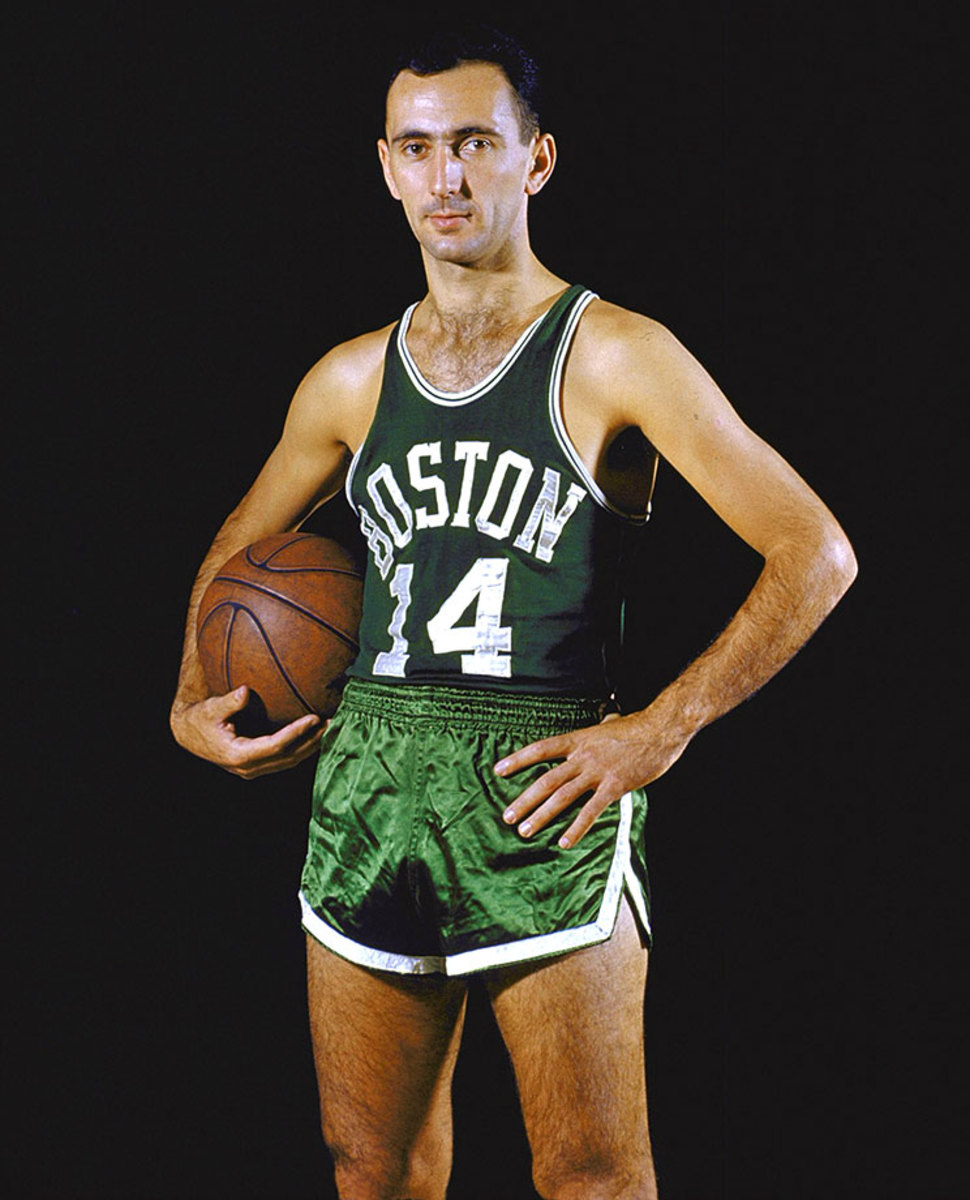
An All-Star in every single one of his seasons (save for a seven-game return to boost ticket sales for the Royals, the team he coached, in 1970), Cousy was a six-time NBA champion and the 1957 MVP. He was the man in Boston until the arrival of Bill Russell, with whom he teamed to build the NBA’s first dynasty.
15 — Vince Carter
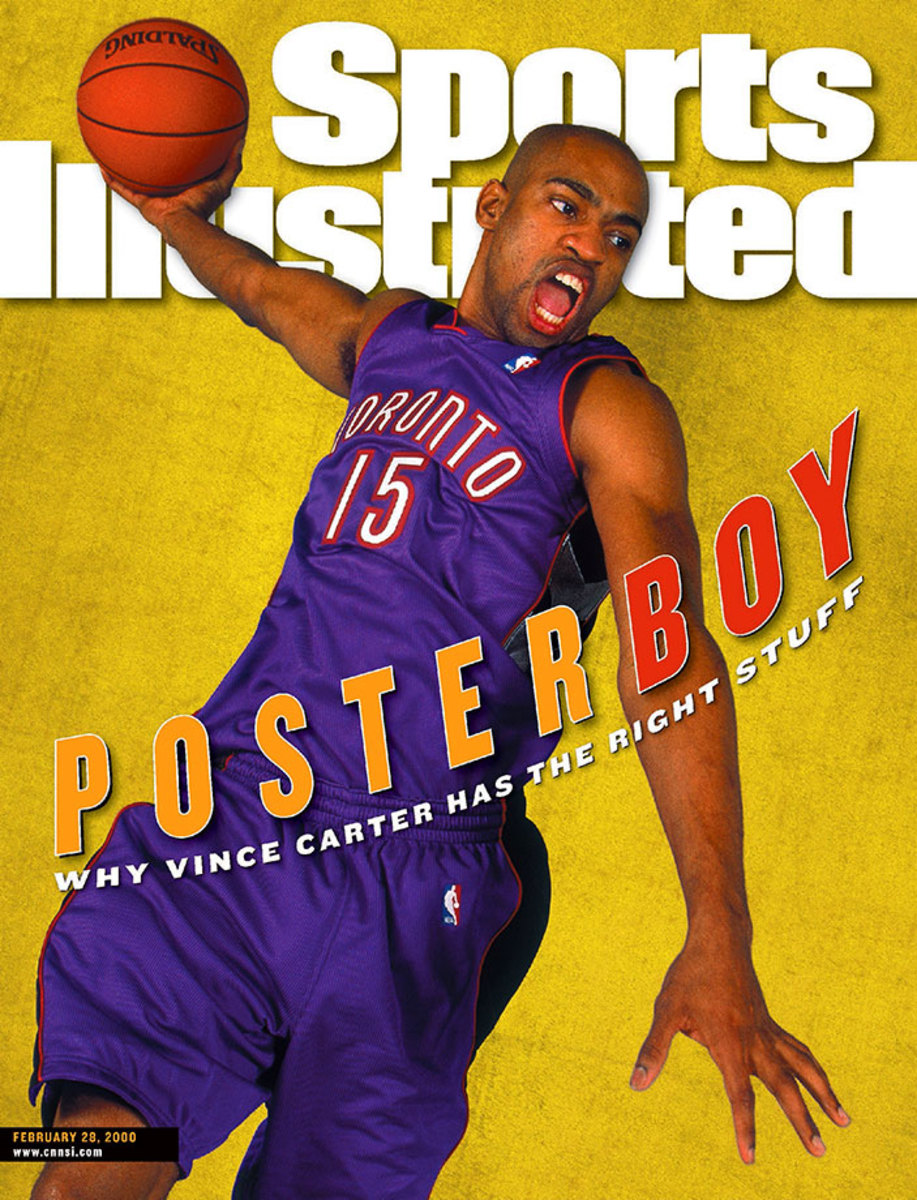
The reputation of “Vinsanity” for acrobatic dunks doesn’t do his overall game enough justice. Carter currently ranks 30th all-time in career scoring and will likely pass Charles Barkley in 2015-16. His incredible play was key for an upstart Toronto Raptors franchise in the early 2000s. — Runner-up: Hal Greer
16 — Bob Lanier
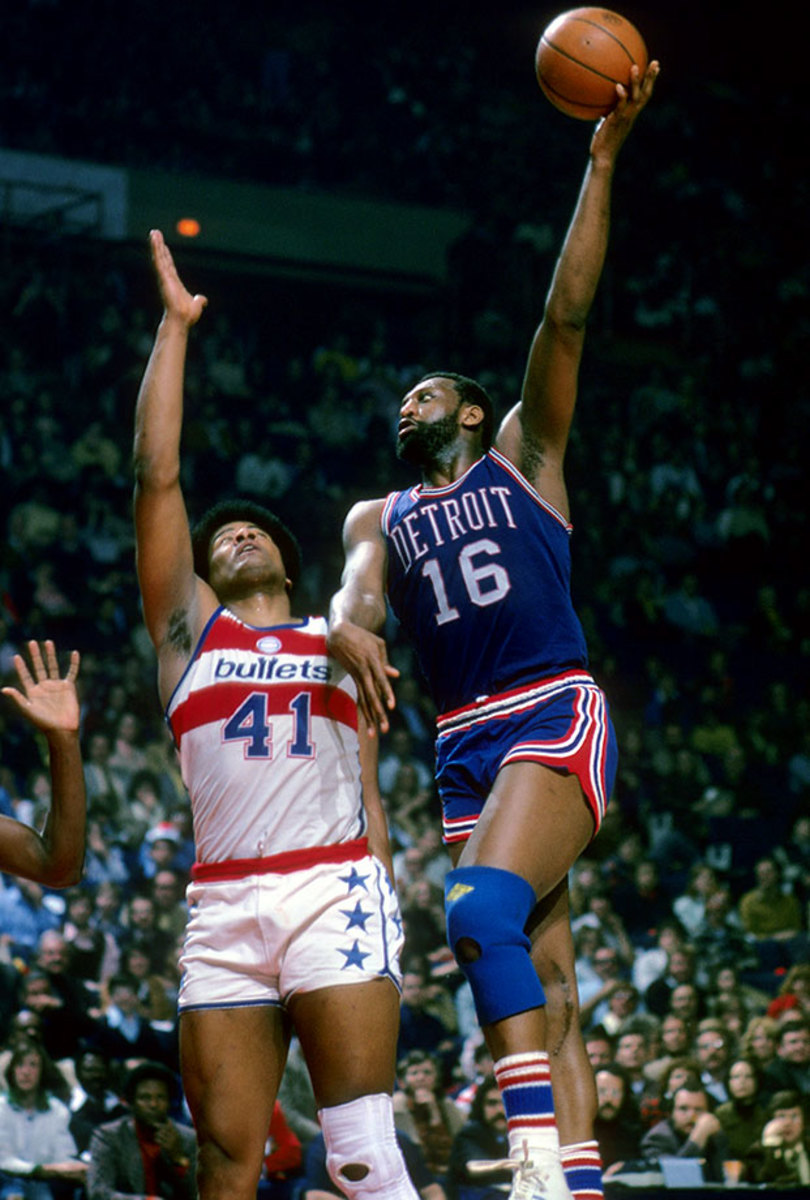
A force in the middle for the Pistons and Bucks, Lanier retired in 1984 with career averages of 20.1 points and 10.1 rebounds. A well-rounded post man who was a strong free-throw shooter (76.7%) and in his prime, a shot-blocker, Lanier lived up to his selection as the No. 1 pick in the 1970 draft, playing for 15 strong years and finishing with five consecutive division titles as a Buck. —Runners-up: Pau Gasol, Jerry Lucas, Cliff Hagan
17 — John Havlicek
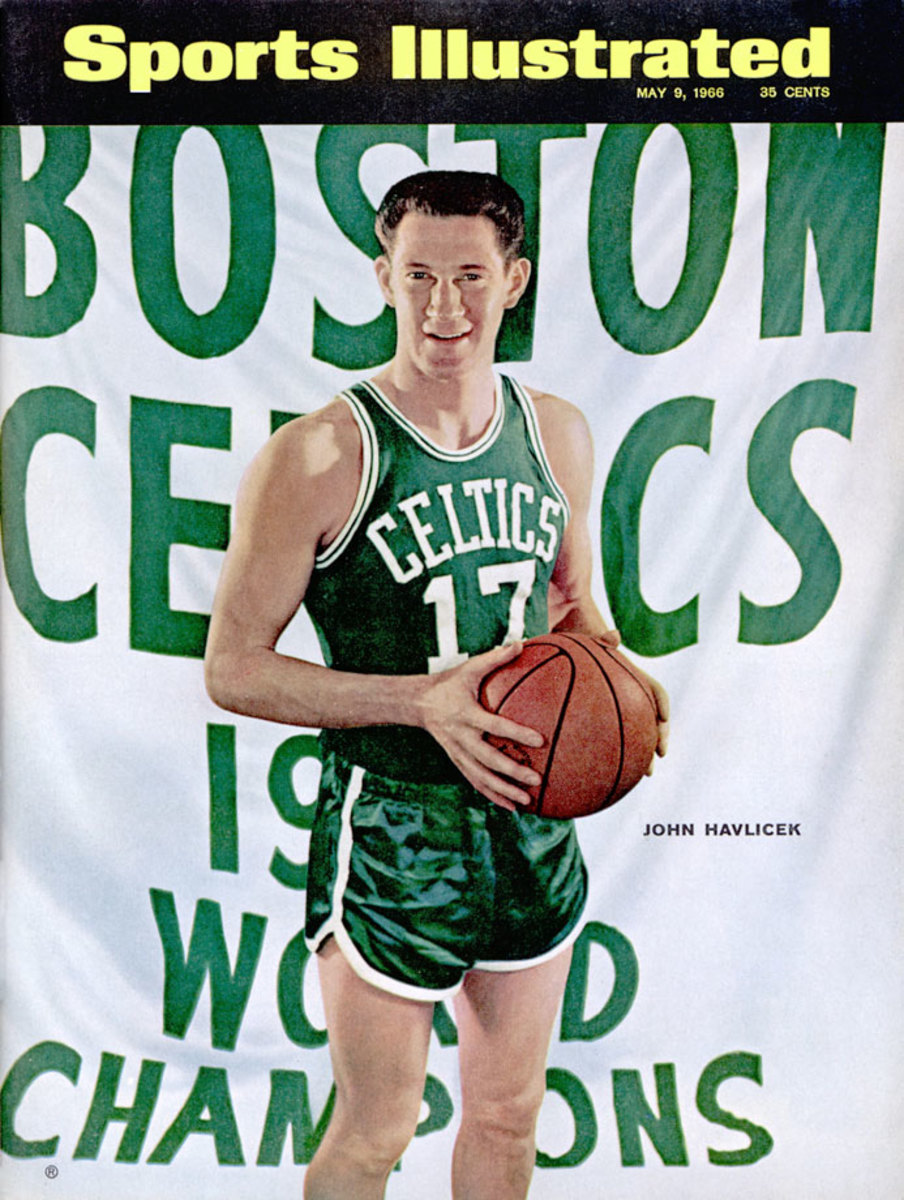
One of the most well-rounded players ever, Havlicek’s Celtics teams won eight championships in his 13 seasons. Hondo bridged the gap between the Bill Russell era and the Celtics’ successful run into the 1970s. In his prime, Havlicek posted numbers strikingly similar to LeBron James, averaging 28.9 points, 9.0 rebounds and 7.5 assists per game in 1970-71. — Runner-up: Chris Mullin
18 — Dave Cowens
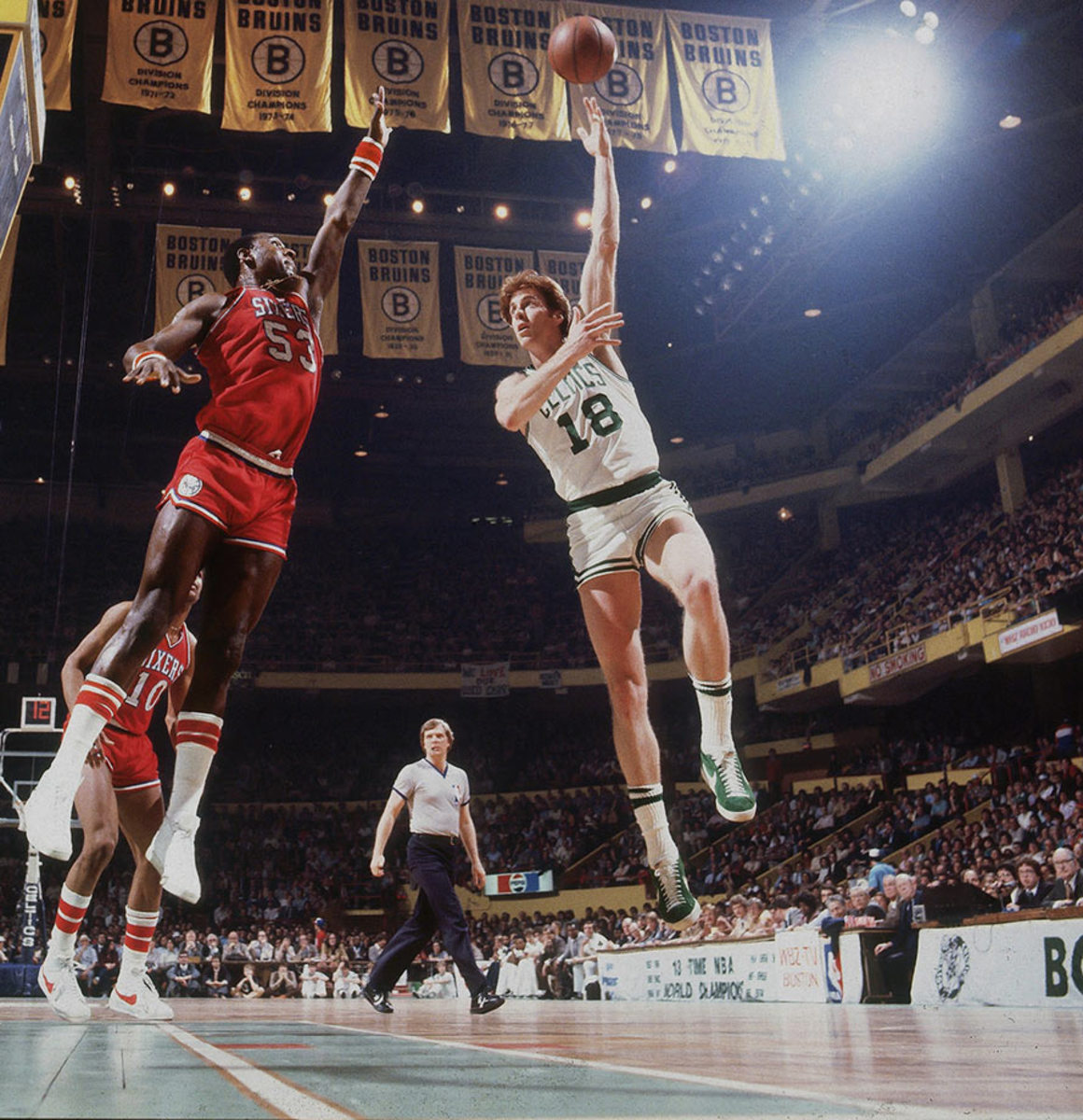
Best known for his all-out approach on every play, Cowens was a stalwart for the Celtics in the ‘70s, winning titles in ‘74 and ‘76 and MVP honors in ‘73, on the back of a 20.5 point, 16.2 rebound campaign. Also a strong passer, Cowens retired averaging 3.8 assists per game to go with 17.6 points and 13.6 boards. An eight-time All-Star, Cowens is one of only four players (including Scottie Pippen, LeBron James and Kevin Garnett) to lead his team in points, rebounds, assists, blocks, and steals for an entire season.
19 — Willis Reed
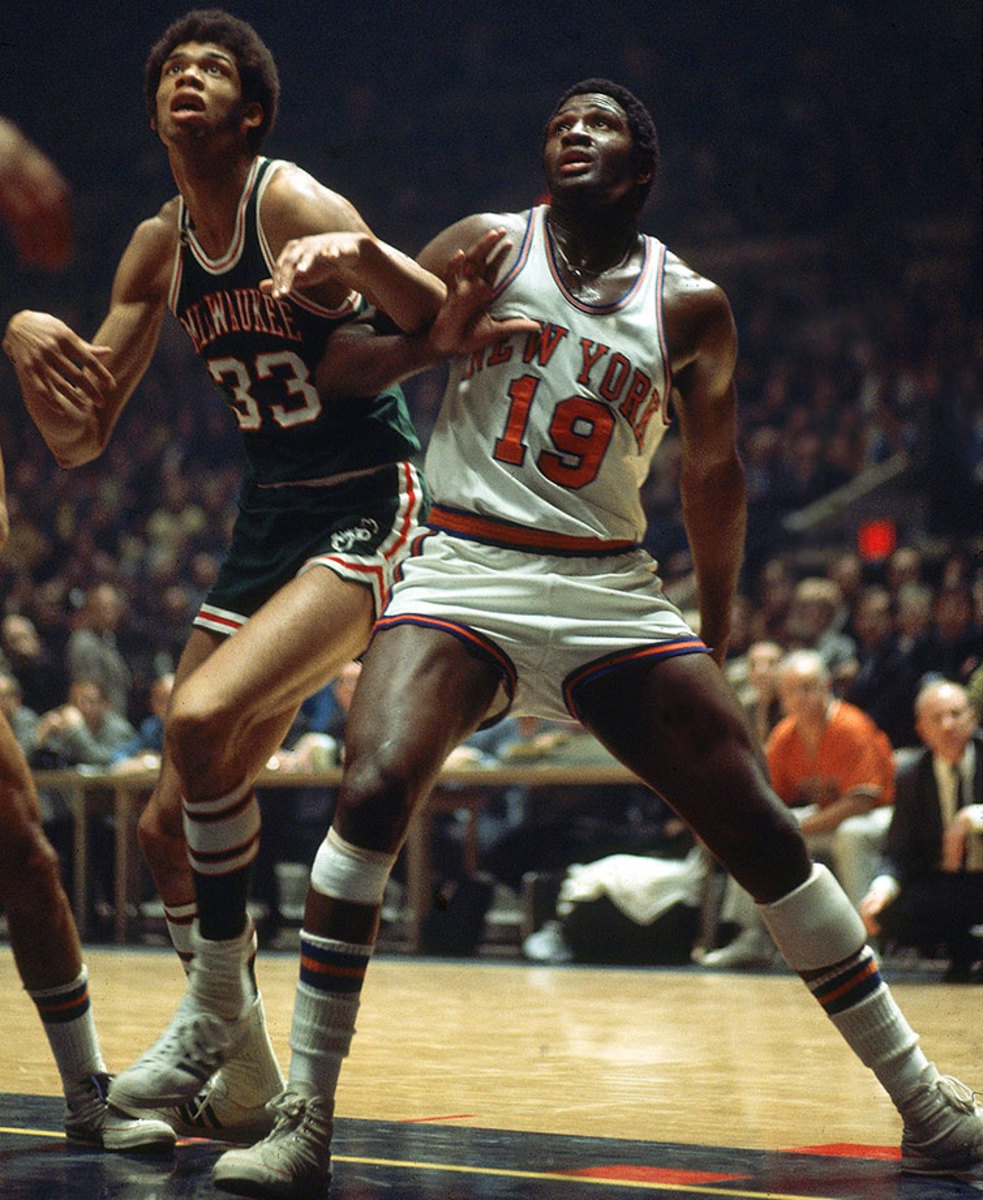
The Knicks haven’t won an NBA title since Reed helped clinch the 1973 championship. Reed will forever be remembered for his magical return to Game 7 of the 1970 Finals against the Los Angeles Lakers, delivering the Knicks’ first title in franchise history. He averaged 23.7 points and 13.8 rebounds per game during the 1970 playoffs. — Runner-up: Don Nelson
20 — Gary Payton
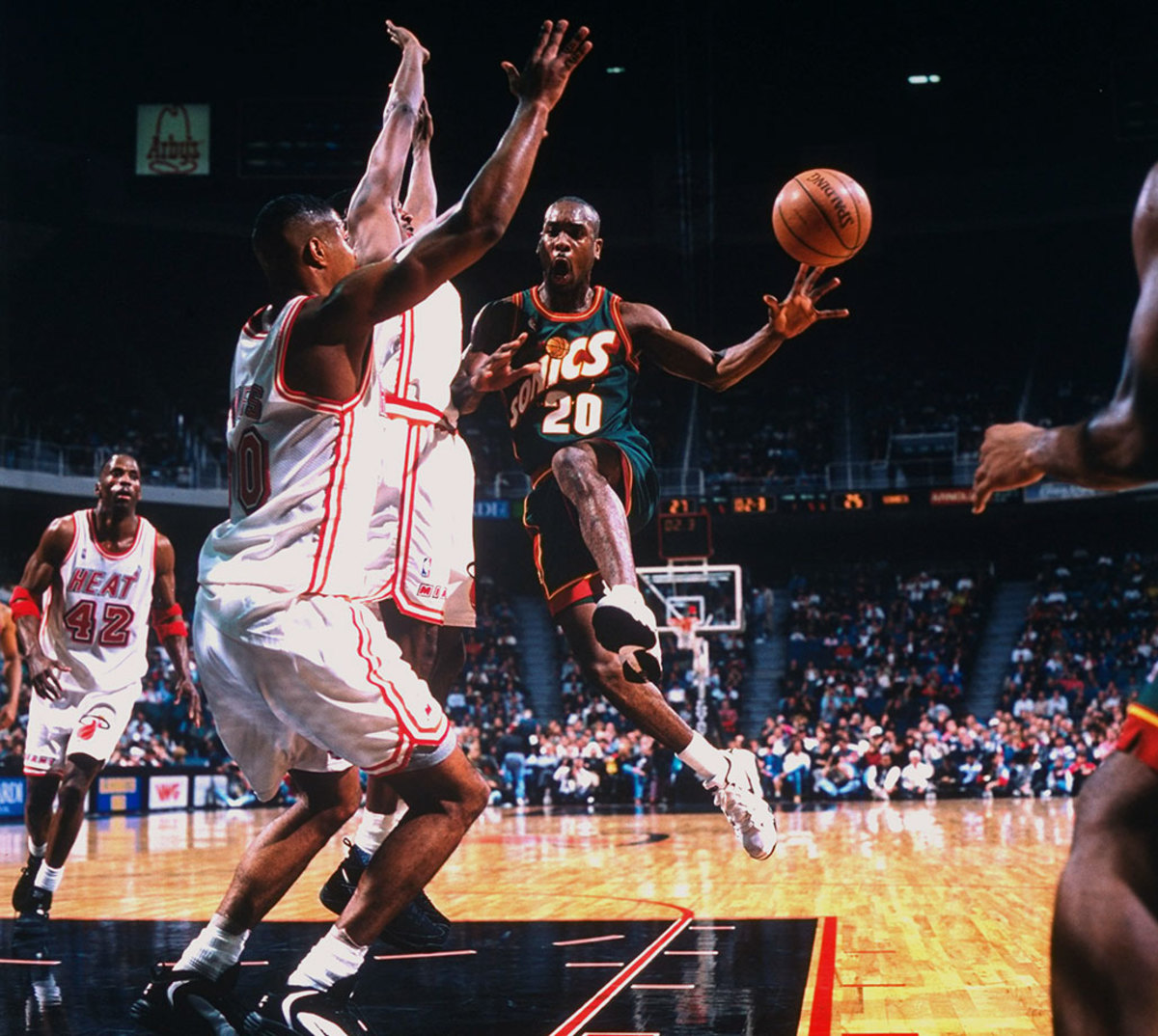
‘The Glove’ earned his nickname thanks to a reputation as the NBA’s toughest defensive point guard, bolstered by nine straight All-Defensive first team selections from 1994-2002. Payton, a nine-time All-Star, was no slouch on the offensive end, either, with a well-rounded game and the ability to create for others and get buckets when needed. One of the iconic players in the history of the Sonics, Payton would hit a huge shot as a member of the Heat in Game 5 of 2006 Finals to help Miami seize the title, his lone championship. —Runner-up: Manu Ginobili
21 — Tim Duncan
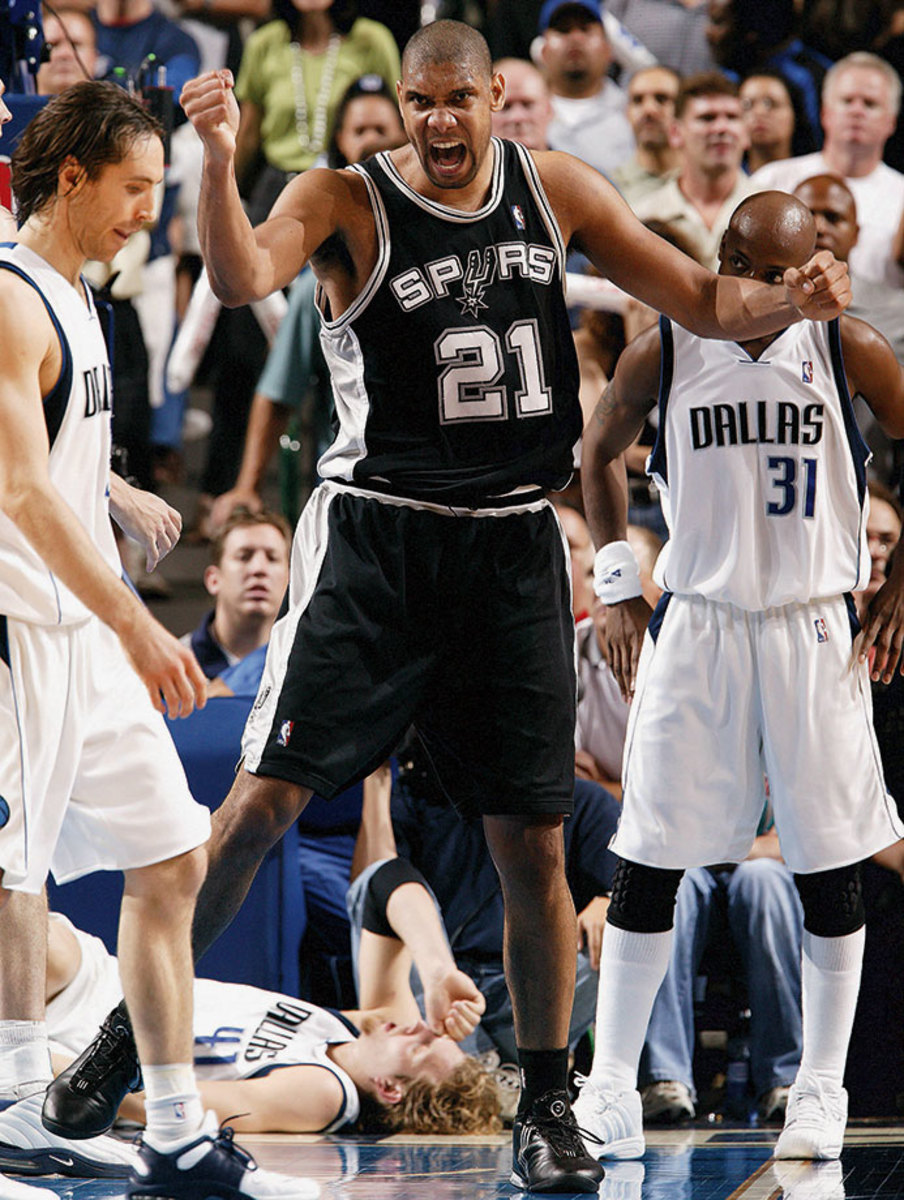
As he prepares for his 19th season, it’s hard to argue against Tim Duncan as the greatest player of his generation, bridging the gap between Michael Jordan and LeBron James. The four titles and 15 All-Star appearances are incredible on their own. Factor in his unfathomably consistent numbers and Duncan’s resume is one of the greatest all-time. Period. — Runner-up: Dominique Wilkins
22 — Elgin Baylor
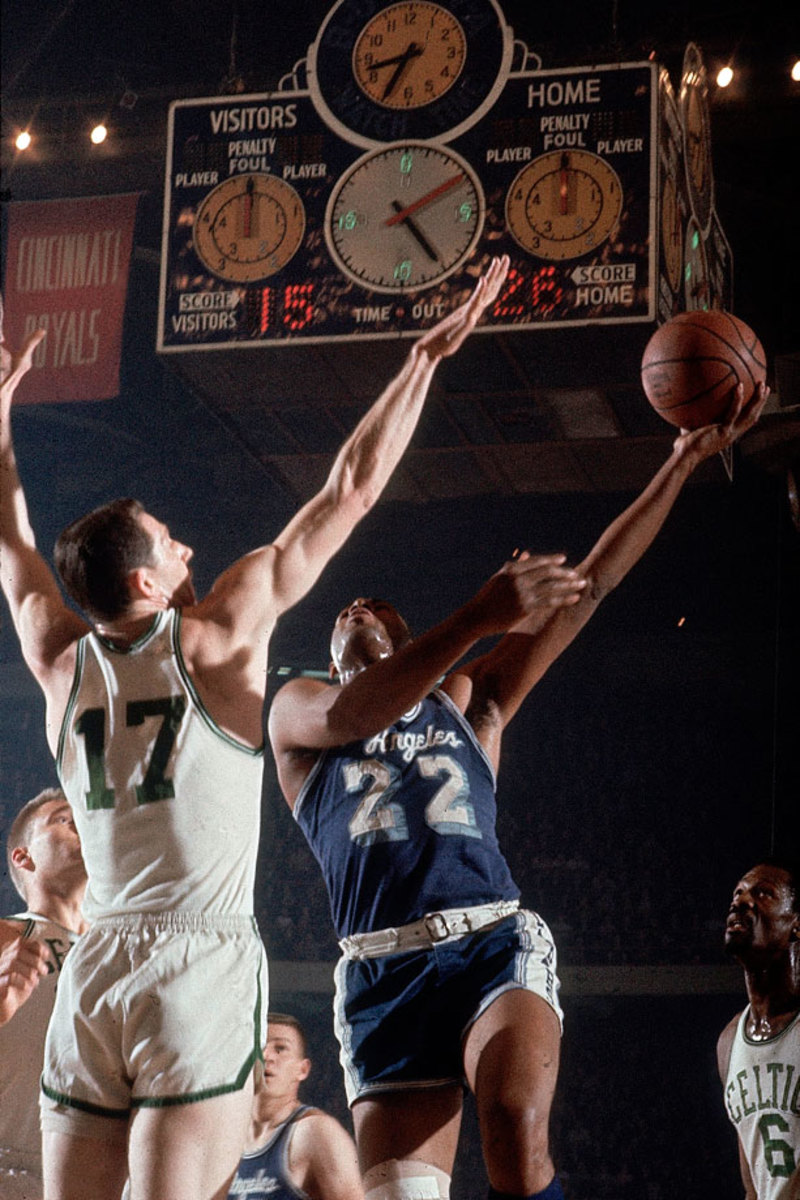
One of the NBA’s first high-flyers, Baylor was an unbelievable scorer in the pre three-point era, averaging 38.3 points per game in 1962. The 11-time All-Star appeared in eight NBA Finals but never won a title, retiring due to chronic knee problems in 1972 —a year in which Los Angeles finally won it all (he was given a ring at the end of the season anyway.) He holds the record for points scored in an NBA Finals game, with 61 in Game 5 in 1962. —Runner-up: Clyde Drexler
23 — Michael Jordan
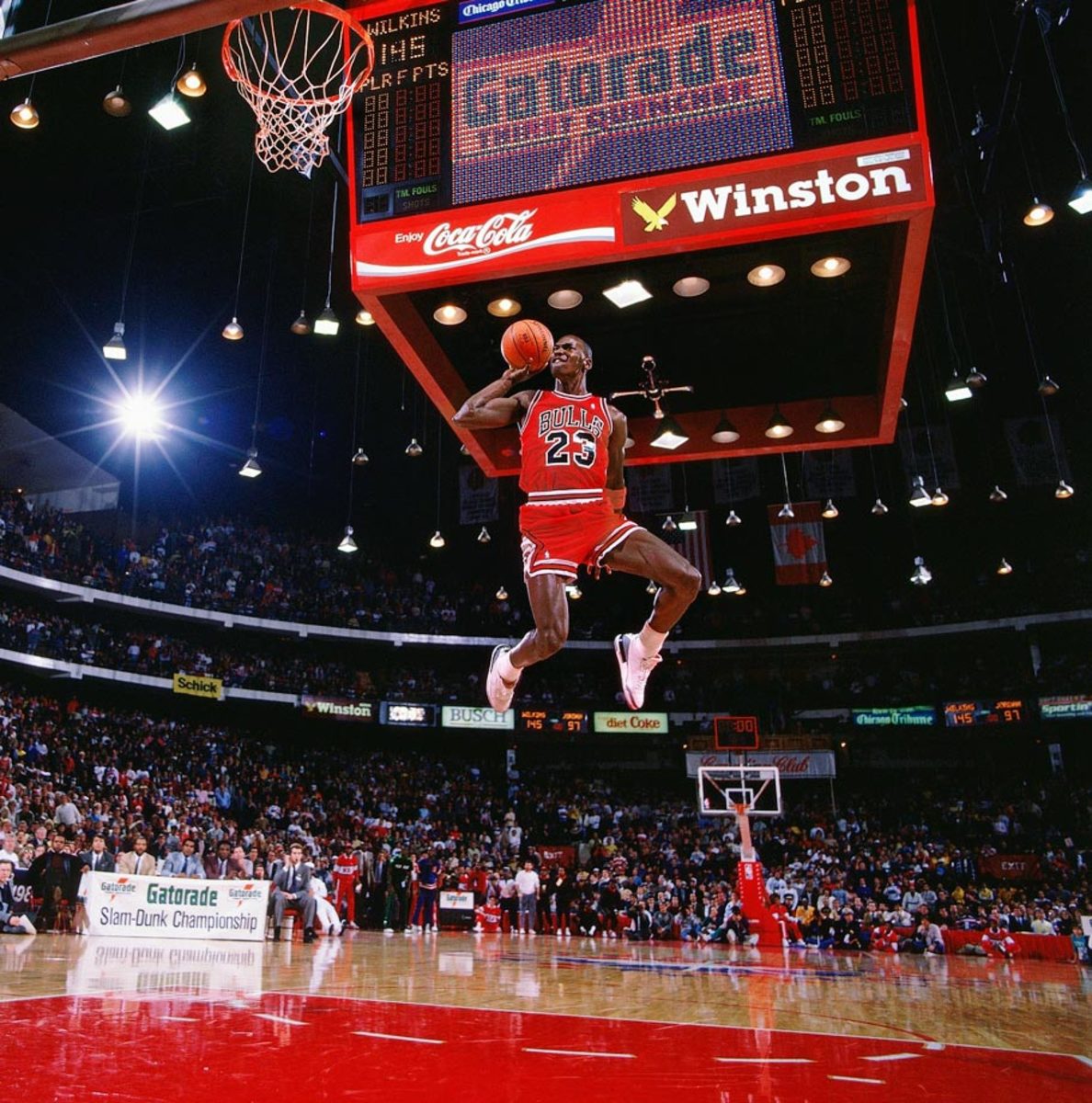
Six championships. Five regular season MVPs. Countless All-NBA and All-NBA defensive selections. The most famous sneaker line in history. Gravity-defying dunk contest victories. The list goes on and on and on and on for the current majority owner of the Charlotte Hornets. Michael Jordan is the G.O.A.T., friends. — Runner-up: LeBron James
24 — Rick Barry
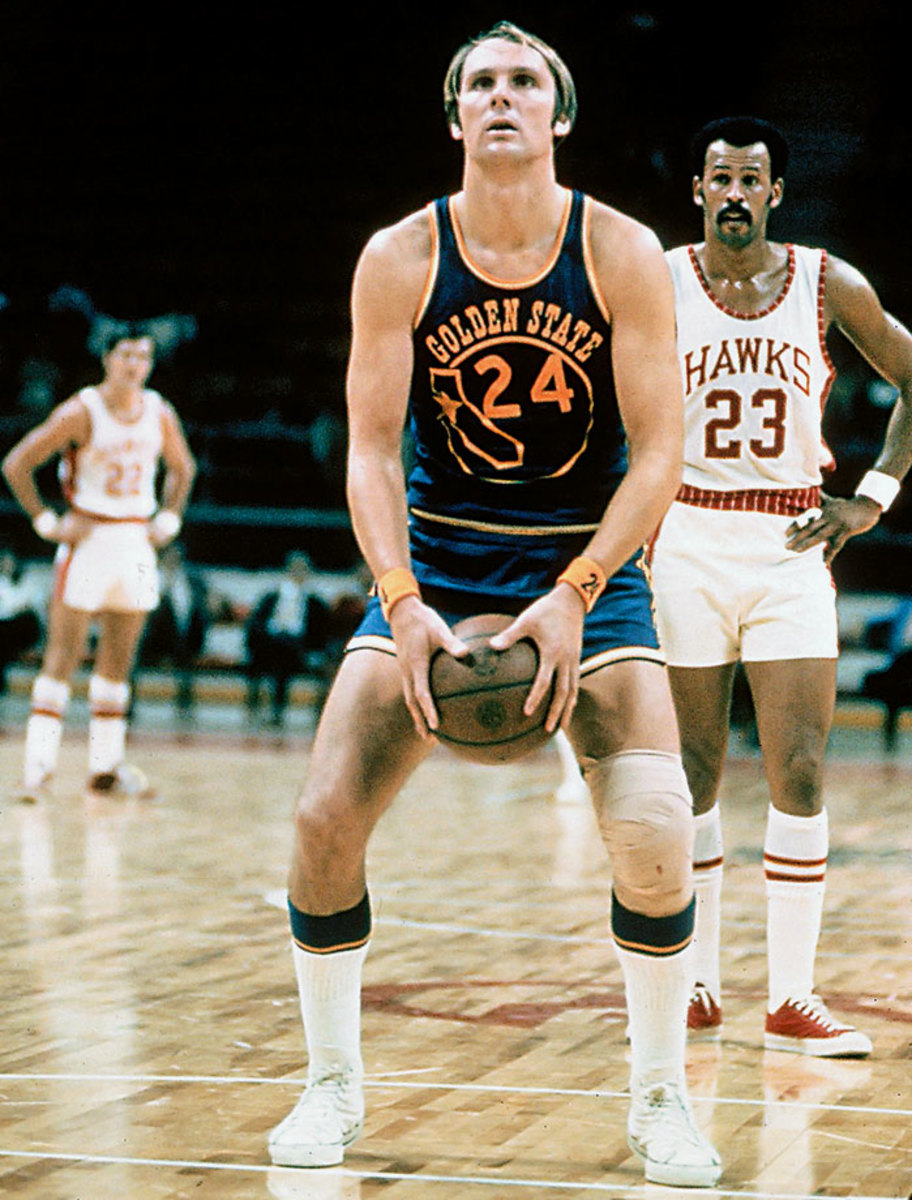
Beyond pioneering the granny-style free throw, Barry was one of the league’s most dominant scorers of all-time, an eight-time All-Star and the 1975 Finals MVP. He spent four seasons from 1968-1972 playing in the ABA (over which he averaged 30.5 points), which places a hit on his all-time totals, but he retired with NBA averages of 23.2 points, 6.5 rebounds and 5.1 assists (and 90% from the foul line). — Runners-up: Bobby Jones, Sam Jones
25 — Mark Price
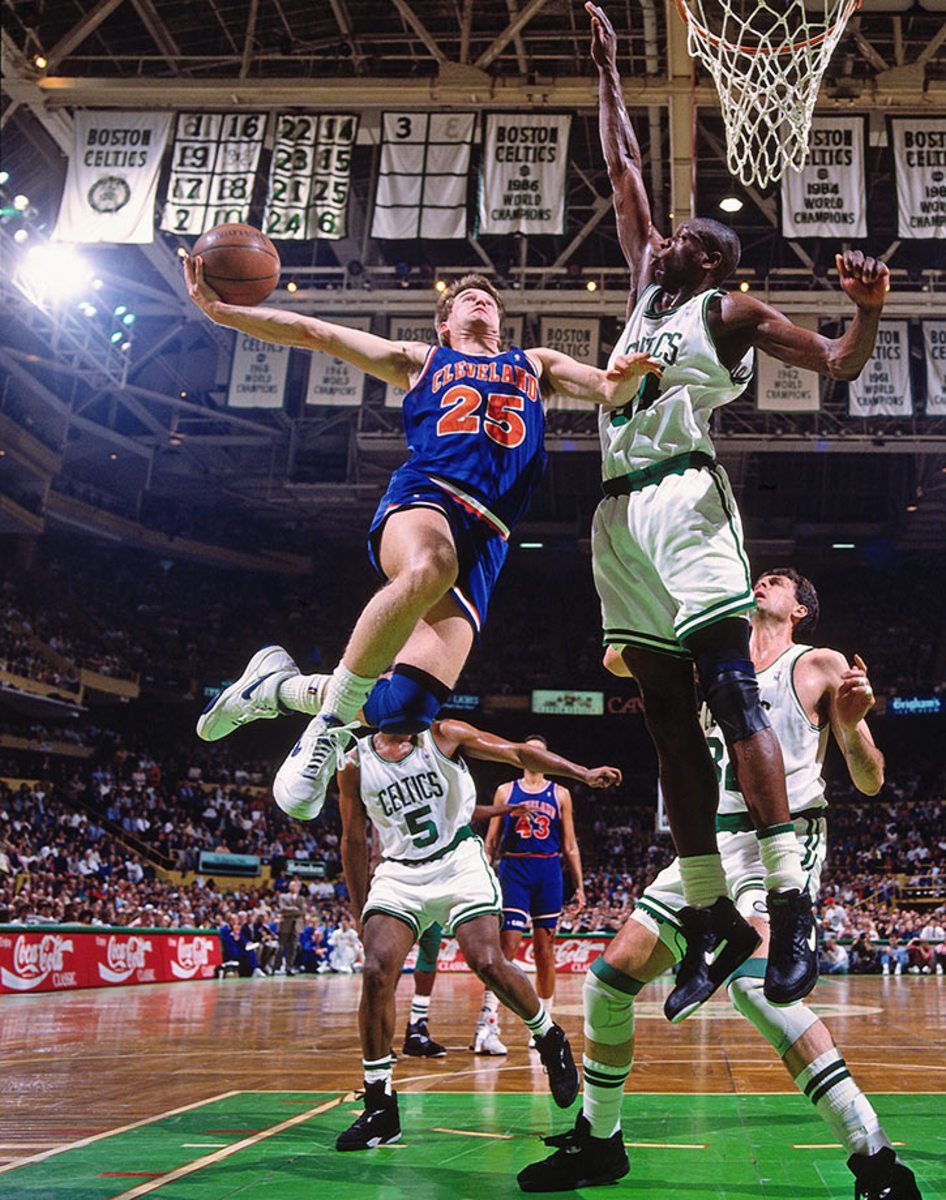
One of the greatest free throw shooters in NBA history (a 90.4% career mark), Price doesn’t get enough credit for his overall game. A four-time All-Star, Price led the Cleveland Cavaliers for nearly a decade, running an efficient offense and posting a double-double, 16.9 points and 10.4 assists per game in the 1990-91 season. — Runners-up: Gail Goodrich, Doc Rivers
26 — Kyle Korver
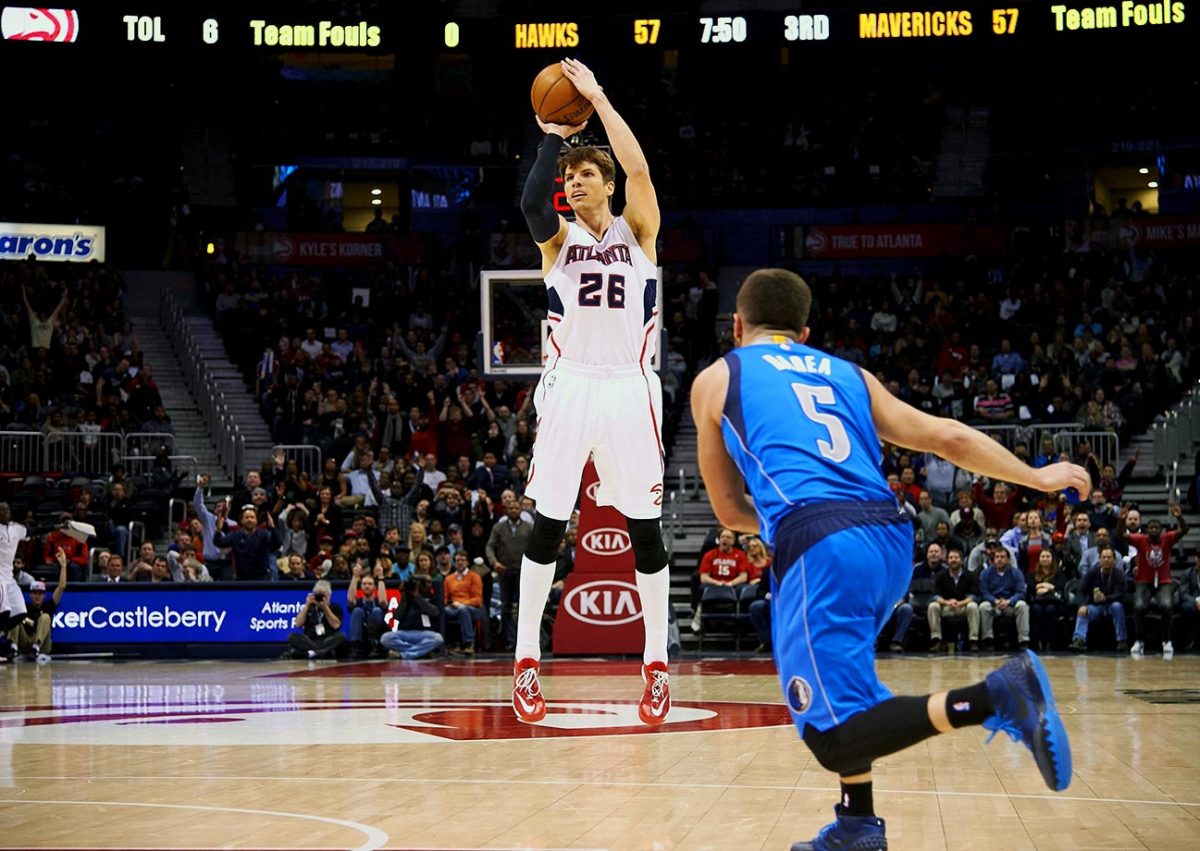
One of the league’s top three-point snipers, Korver just completed an incredible All-Star campaign with Atlanta, shooting 49.2% from deep as a key cog in a diverse offense. His acumen from outside gives him the nod here at No. 26.
27 — Jack Twyman
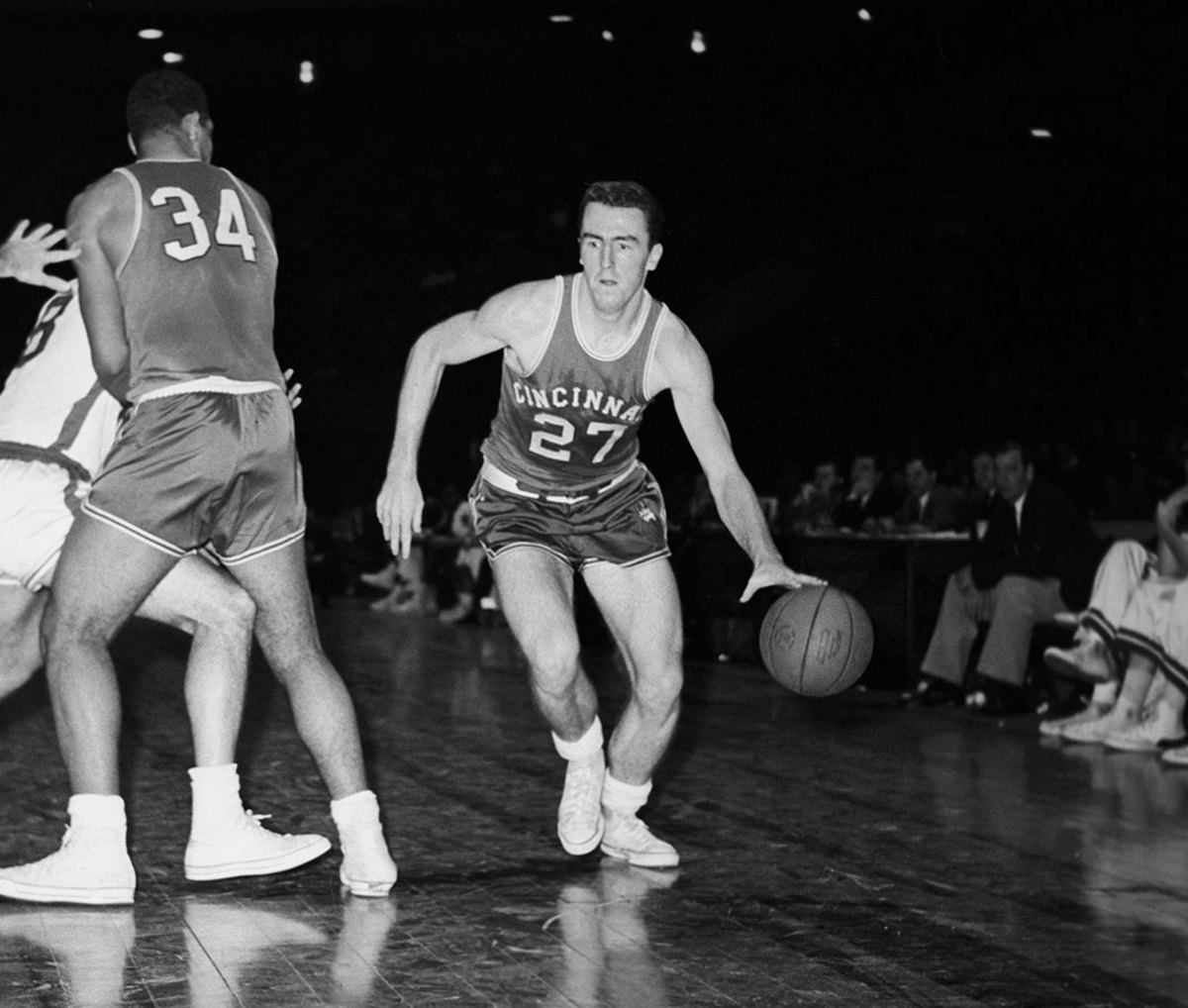
A six-time All-Star, Twyman scorched opponents in the late 1950s and early 1960s, averaging 19.2 points per game during his 11-year career. He hung 31.2 points per game in the 1959-60 season. Twyman trails only Oscar Robertson for most career points in franchise history. The Royals are now the Sacramento Kings. — Runners-up: John Johnson, Joe Caldwell
28 — Arron Afflalo
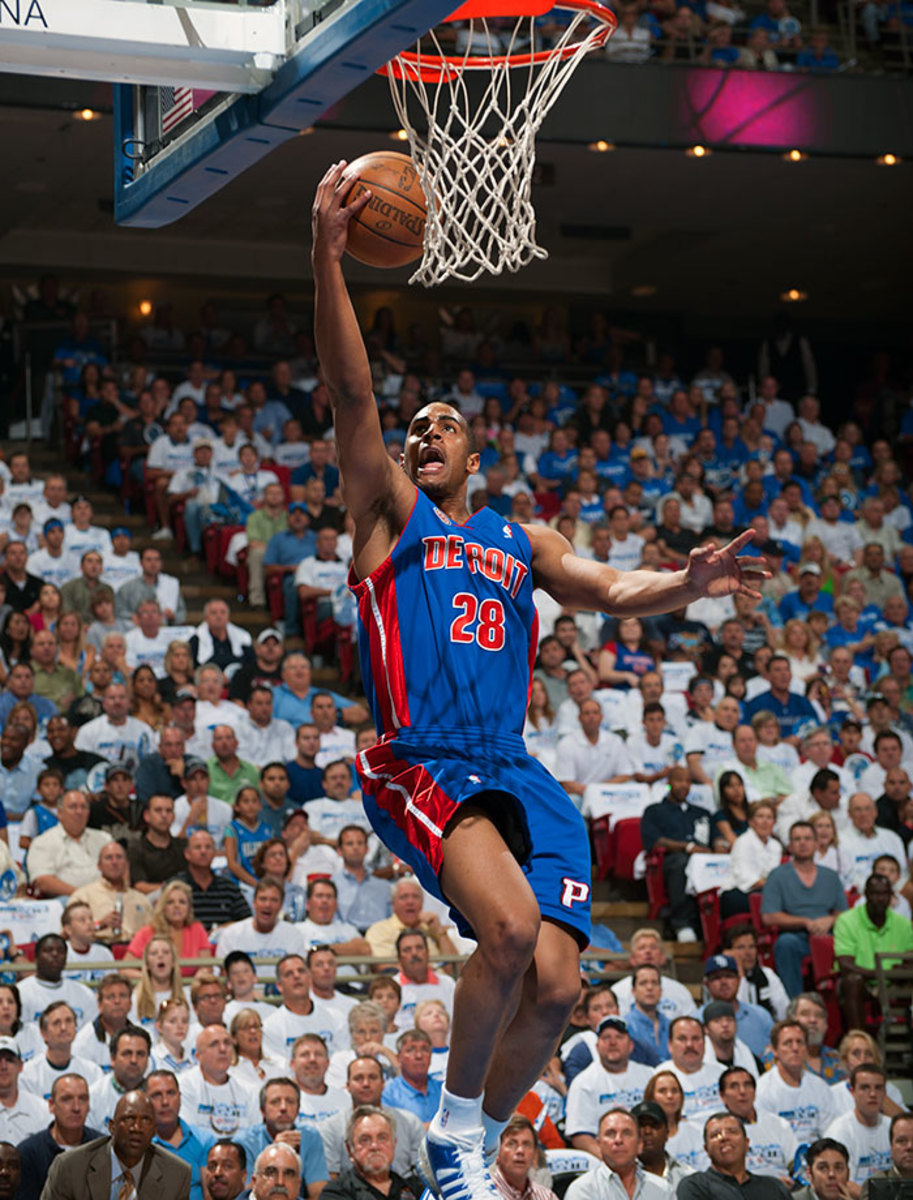
Afflalo has been a steady, useful two-way player eight seasons into his career, peaking in 2013-14 with Orlando where he put up 18.2 points and shot 42.7% from three. The UCLA product and Compton native also famously inspired a song by rapper Kendrick Lamar. He begins next season as a Knick.
29 — Paul Silas
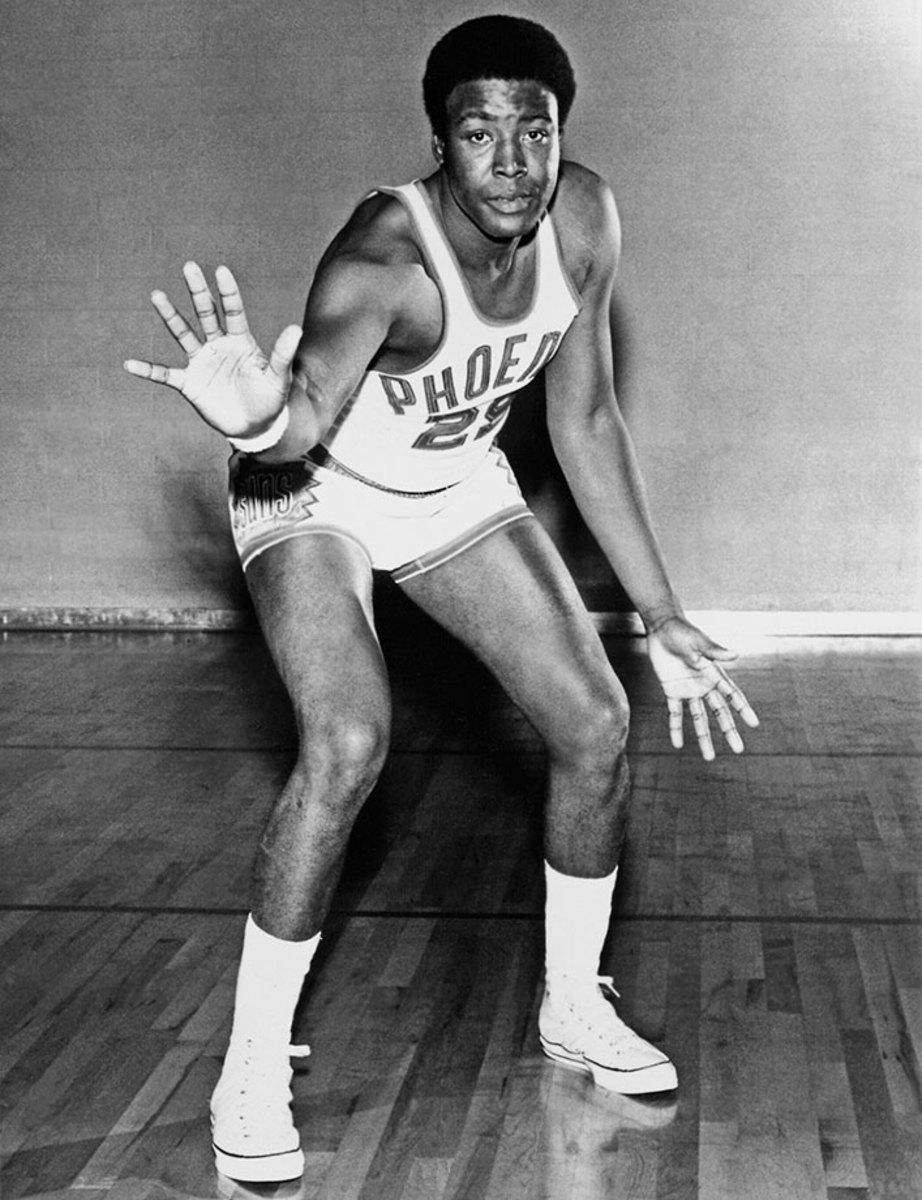
A two-time All-Star, Paul Silas played in three different decades and won three NBA championships (two with the Boston Celtics and one with the Seattle Supersonics). At just 6’7”, Silas was one of the best rebounders of his era, leading the NBA in offensive boards per game in the 1975-76 season. — Runner-up: Pervis Ellison
30 — Bernard King
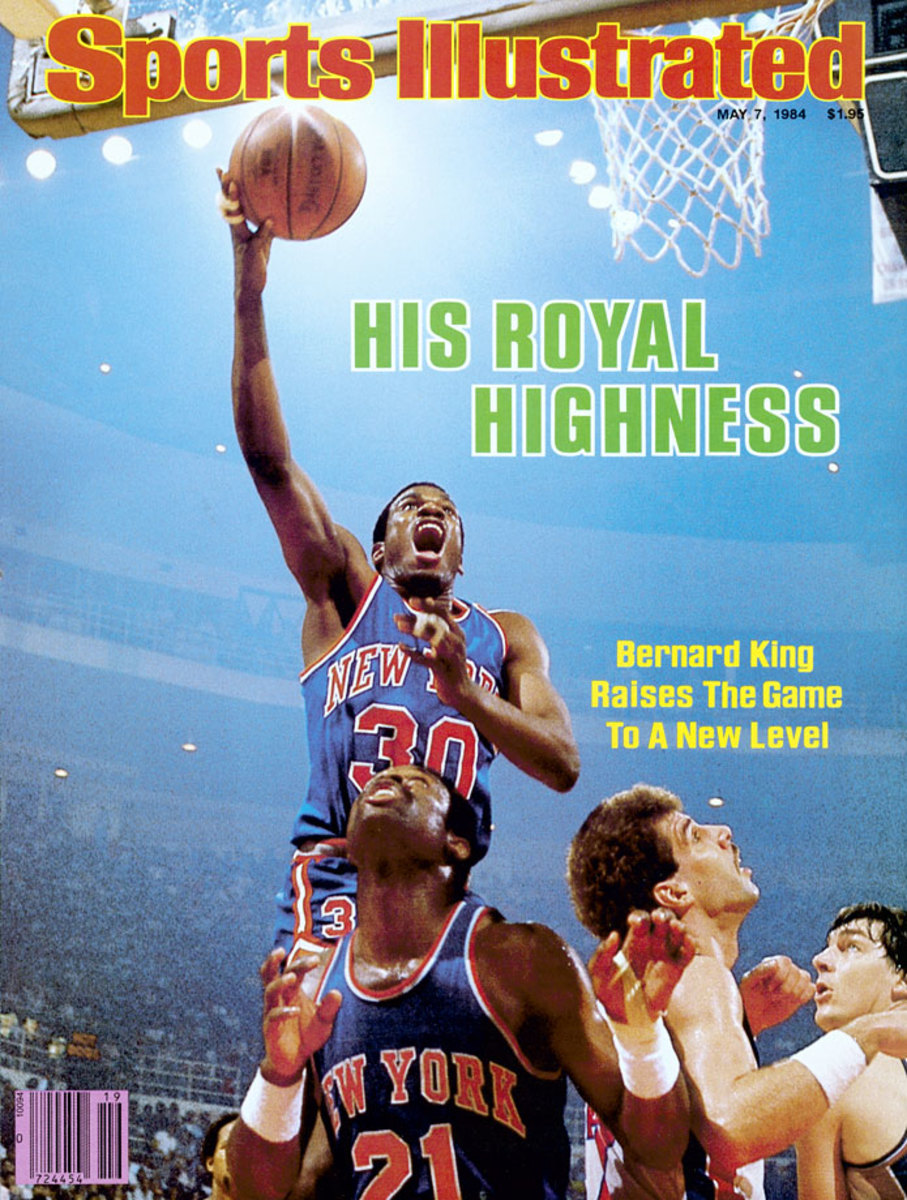
A tremendous athlete and gifted scorer, King came into the league averaging 24.2 points per game as a rookie and went on to become one of the most dominant offensive forwards of the ‘80s. A torn ACL in 1985 sidelined him for more than a year, and he was never quite the same—although he put together a strong comeback at the end of his career, with an impressive 28.4 points at age 34 in his second-to-last season. — Runner-up: Stephen Curry
31 — Reggie Miller
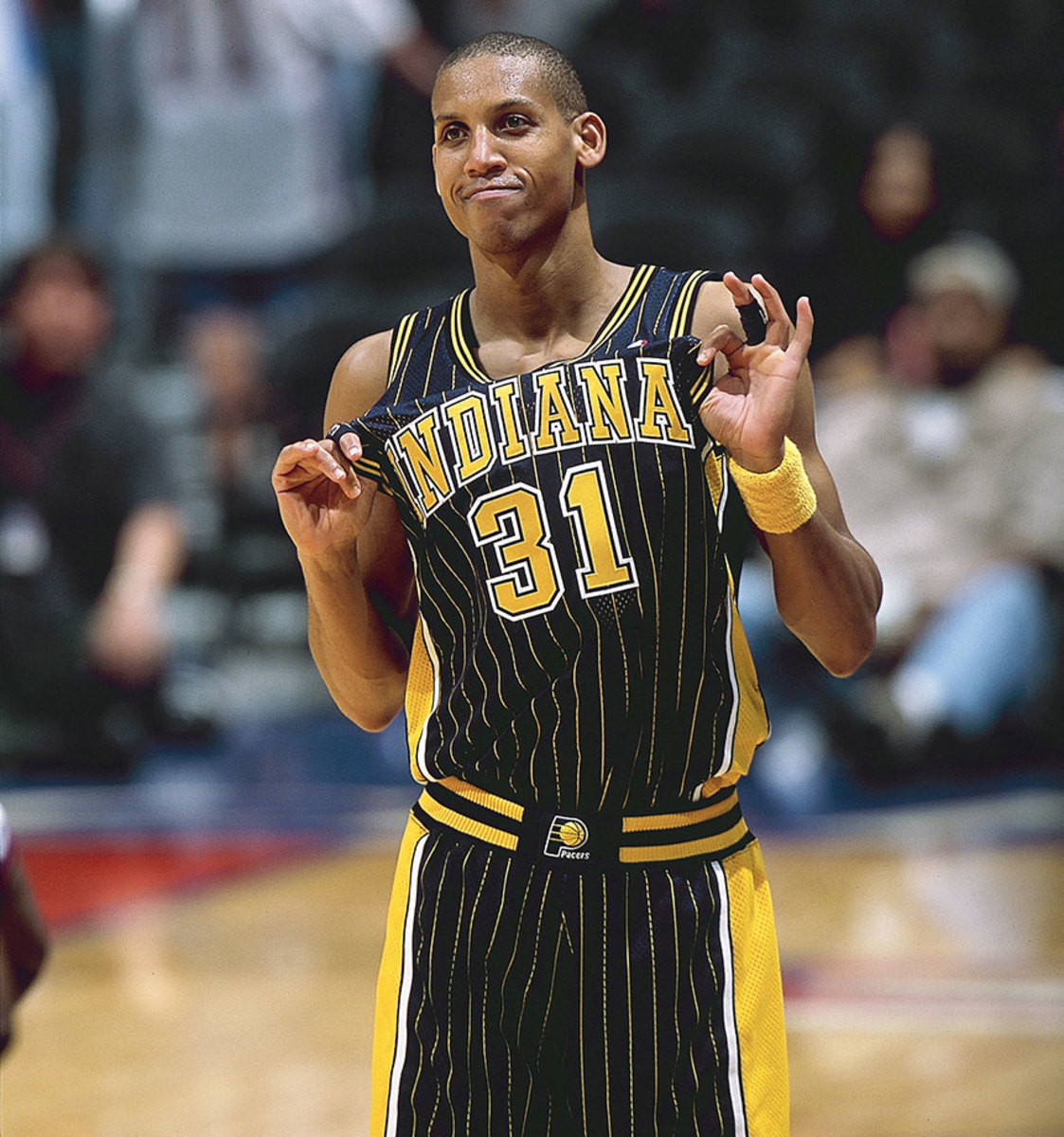
For several years, Reggie Miller was the NBA’s all-time leader in career three-pointers drained. Miller still ranks second, only behind Ray Allen. A five-time All-Star, Miller brought it in the postseason as well, most notably his clutch eight points in nine seconds to beat the New York Knicks in 1995. He led the Pacers to the 2000 NBA Finals as well. — Runner-up: Shawn Marion
32 — Magic Johnson
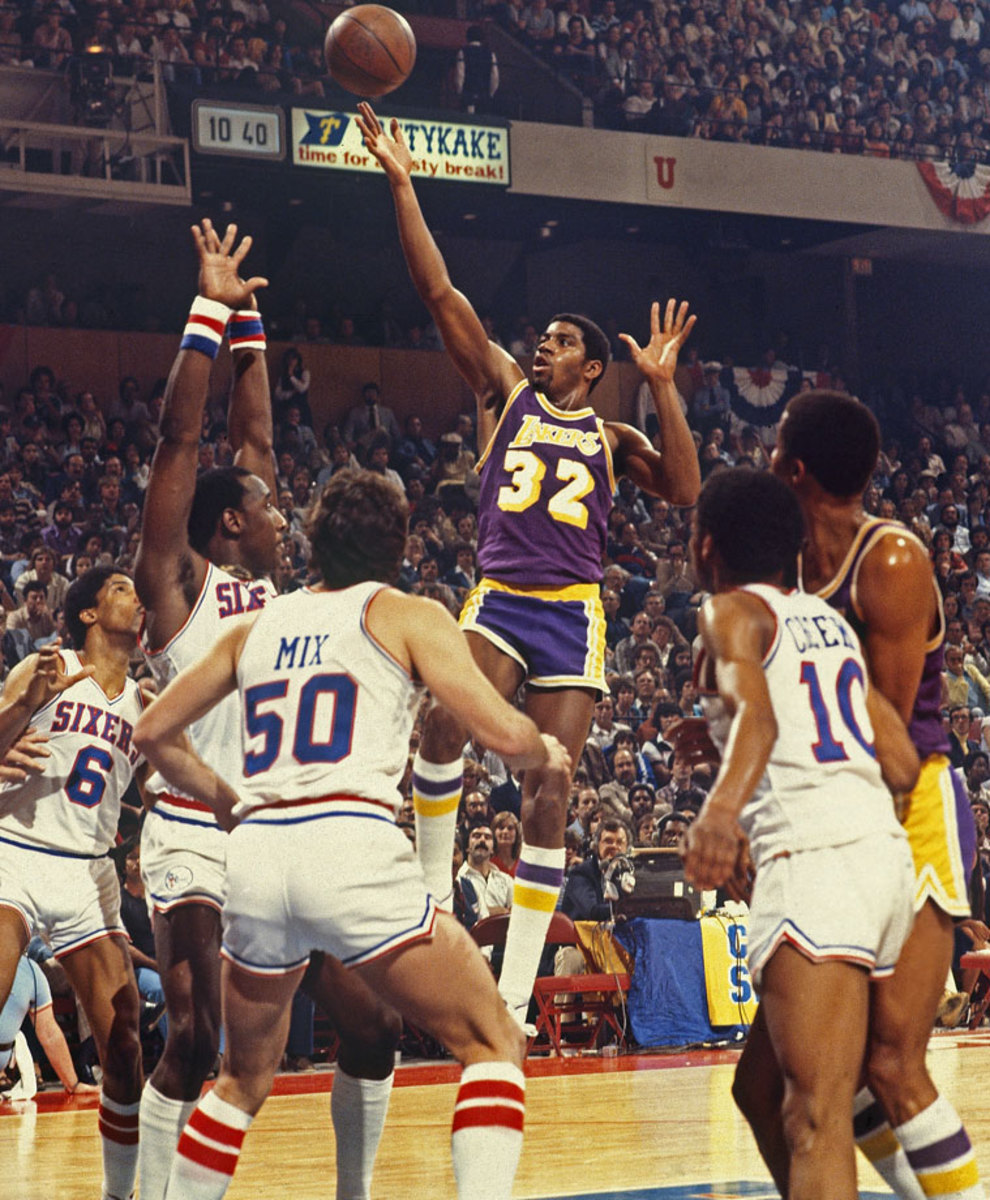
It’s hard to say enough about Magic, who changed perceptions of what a point guard could be, won multiple titles and became one of the NBA’s most engaging personalities all at once. A five-time NBA champ, three-time MVP, nine-time first-team All-NBA and 12-time All-Star, Johnson, with his playoff hardware and impact on the game, edges out Malone for this spot in a tight one. — Runners-up: Karl Malone, Kevin McHale
33 — Kareem Abdul-Jabbar
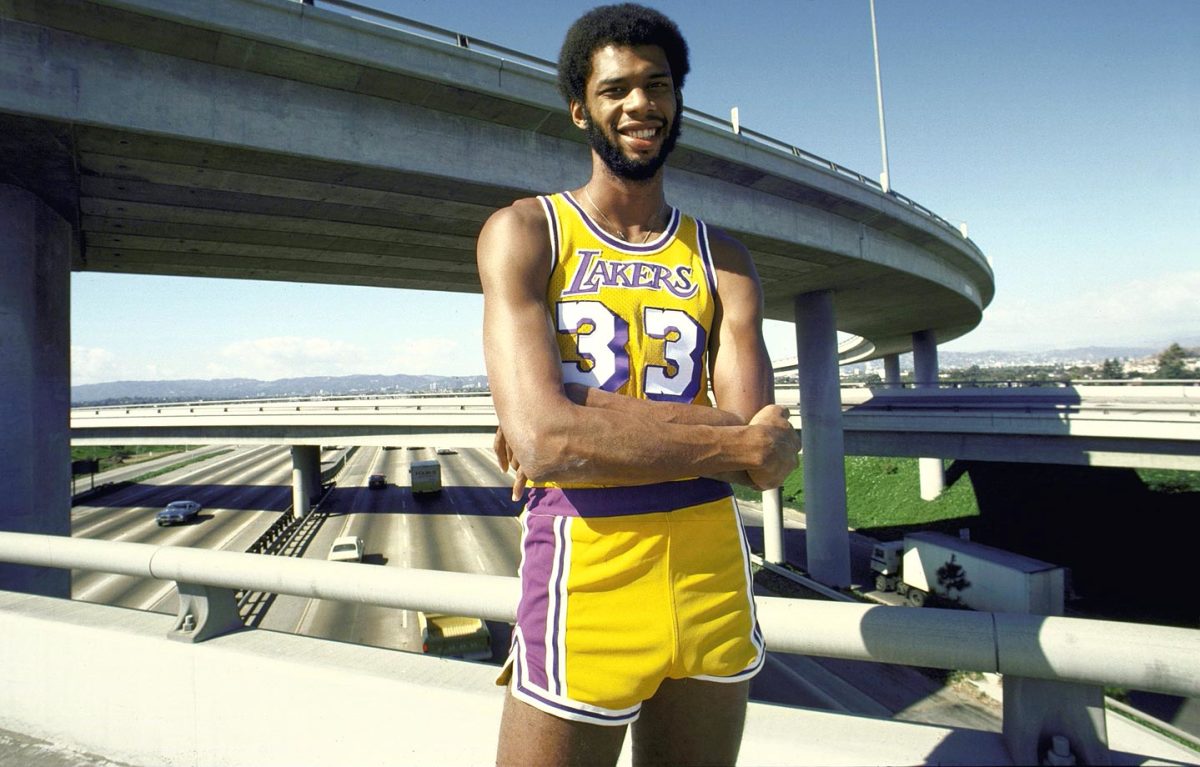
Clearly one of the greatest players ever, Abdul-Jabbar is the NBA’s all-time leading scorer by a mile and played in the second-most games of any player in history behind only Robert Parish. Kareem was an All-Star in 19 of his 20 seasons and claimed six championships. His skyhook will, of course, forever be legendary. — Runners-up: Larry Bird, Scottie Pippen
34 — Shaquille O’Neal
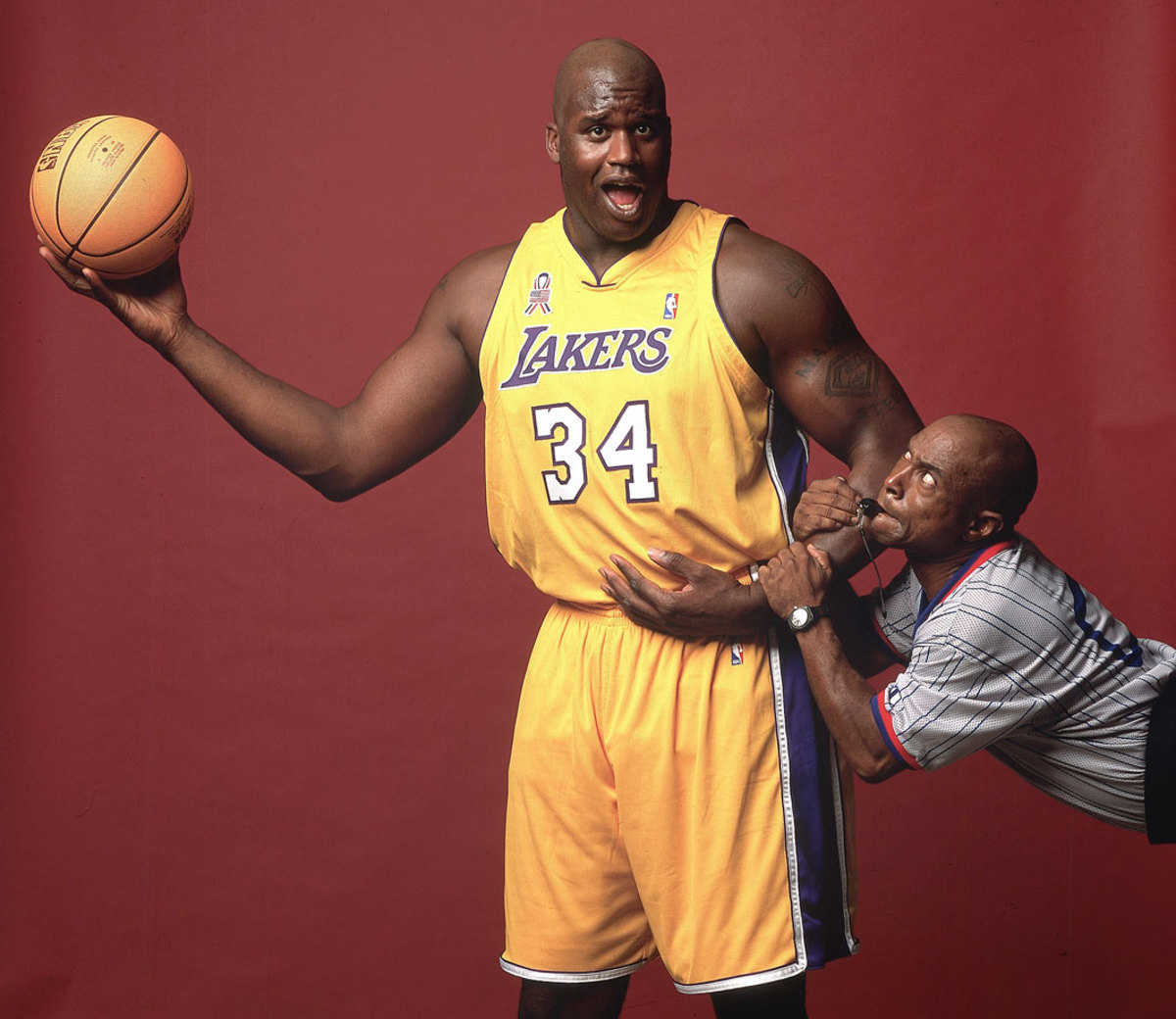
Prime Shaq has a case as the most singularly dominant individual player ever, with his blend of power and quickness, soft touch and ability to impose his will on the court. Four titles, three Finals MVPs and 15 All-Star appearances help Shaq’s résumé edge out the competition in one of the more difficult jersey number debates. — Runners-up: Hakeem Olajuwon, Charles Barkley, Ray Allen
35 — Kevin Durant
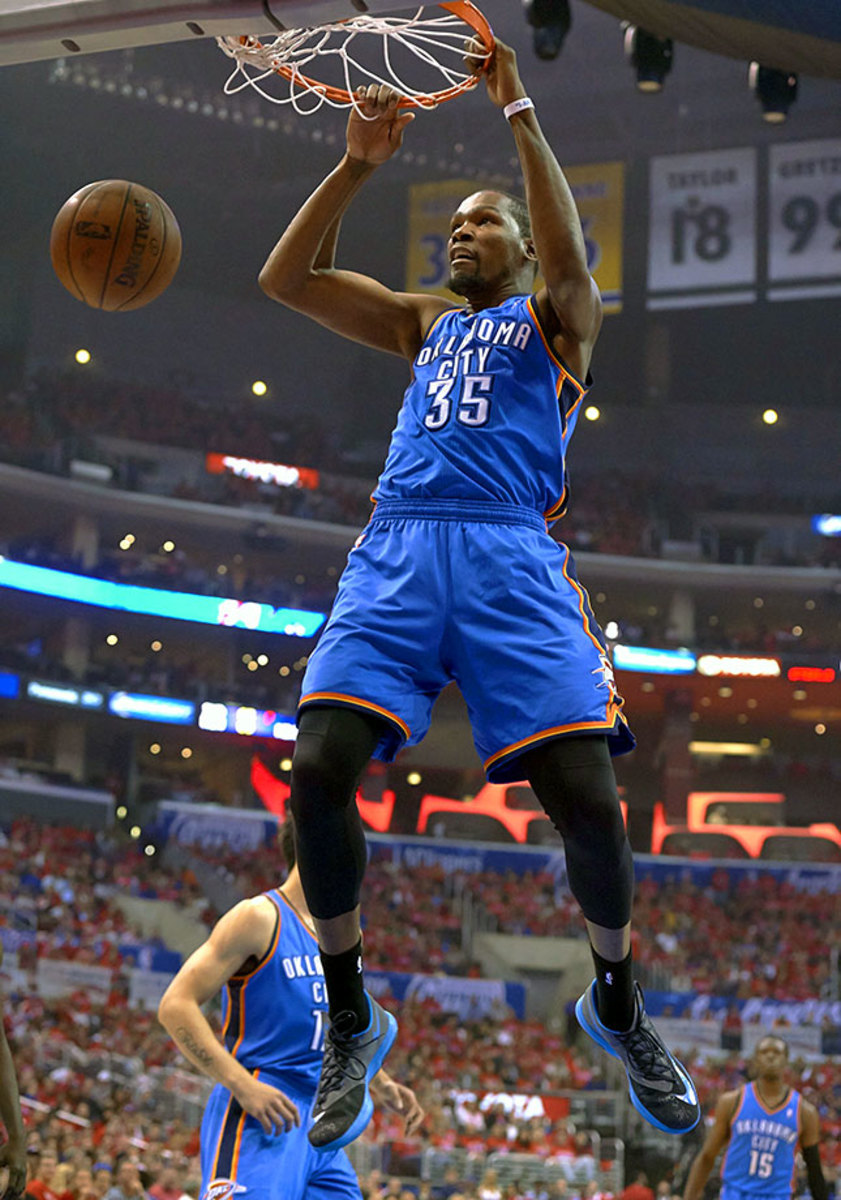
There’s a reason the entire NBA is holding its collective breath awaiting the 2016 offseason. Durant will be the biggest potential free agent since LeBron James in 2010. He’s a six-time All-Star, a four-time scoring leader and has an MVP to his name. Here’s to hoping he can return seamlessly after three foot surgeries. — Runner-up: Rudy LaRusso
36 — Rasheed Wallace
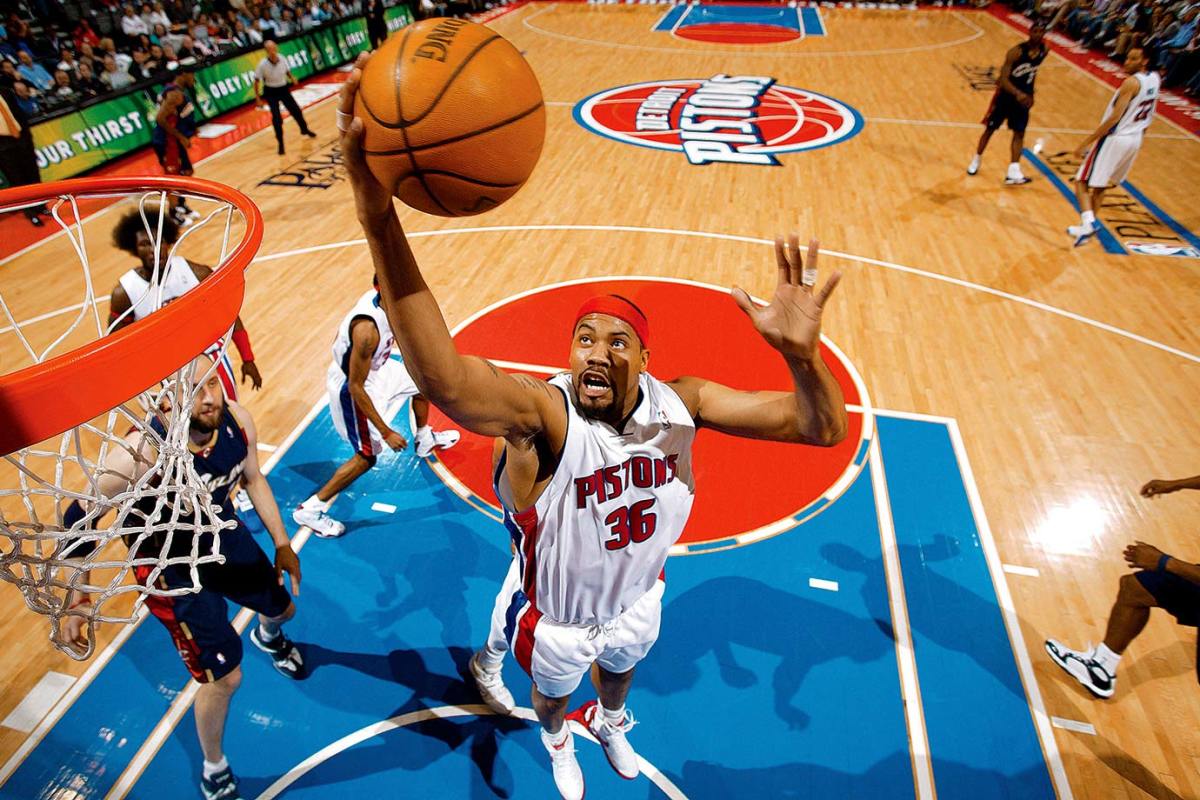
‘Sheed wore No. 30 for a large portion of his career, too, but he’s by far the most talented to don No. 36 (save for Shaq, briefly — and we aren’t repeating players here). Wallace led Detroit’s ensemble cast to the 2005 title and was a major player in the emergence of the modern stretch-four position. Often controversial, at times transcendent...well, ball don’t lie.
37 — Nick Van Exel
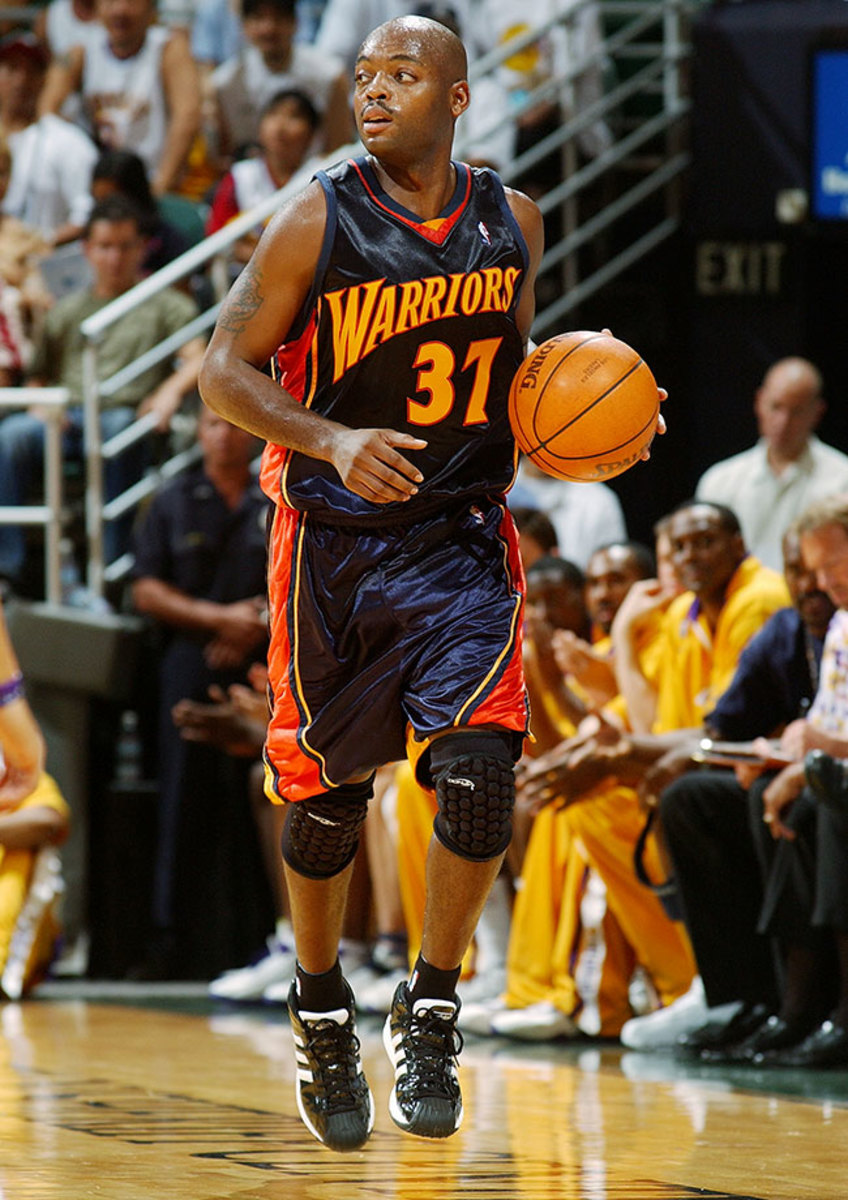
Nick Van Exel never quite found a home in the NBA, but he was far from a journeyman bouncing around from team to team. He played in one All-Star game, having always shown poise running the offense and performing in pick-and-roll sets. He ranks 22nd all-time in career three-pointers made. — Runner-up: Metta World Peace
38 — Viktor Khryapa
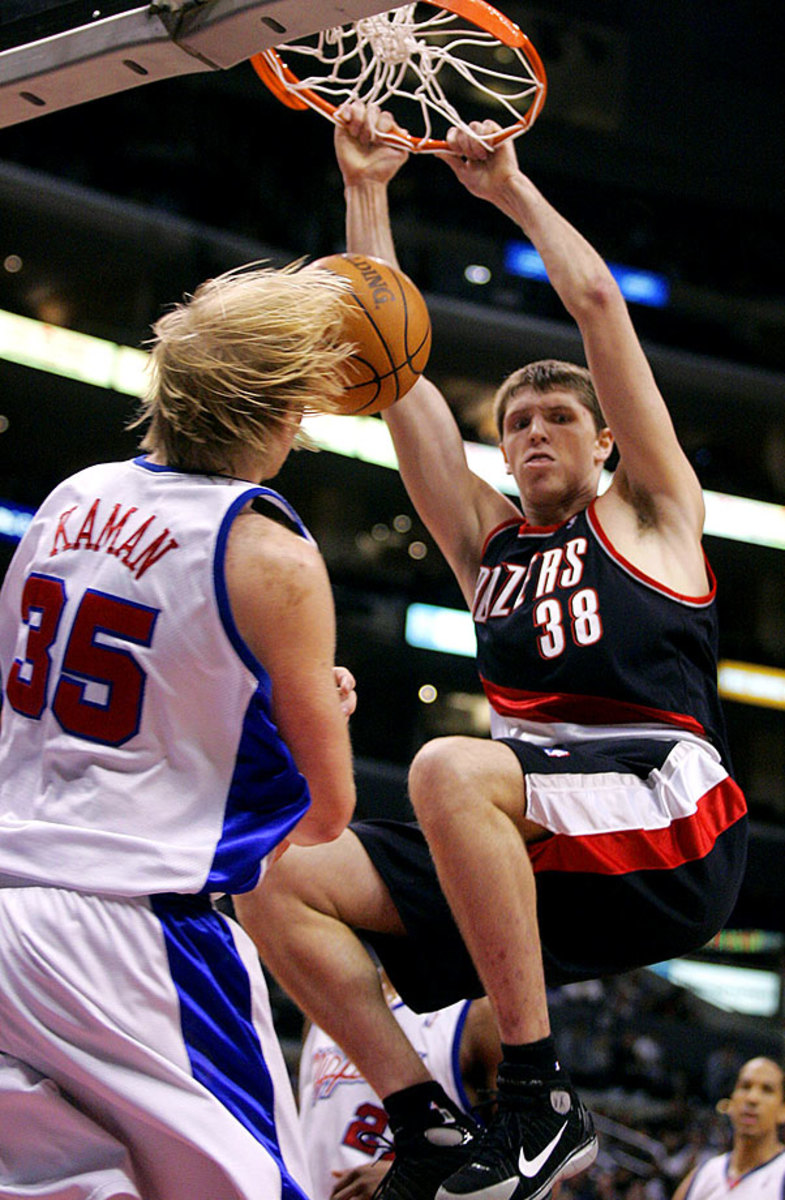
Khryapa struggled to find a home in the NBA and was done after four years, but has been a top player back in his native Russia before and after his American stint. He averaged 5.8 points and 4.4 rebounds for Portland in his best season.
39 — Jerami Grant
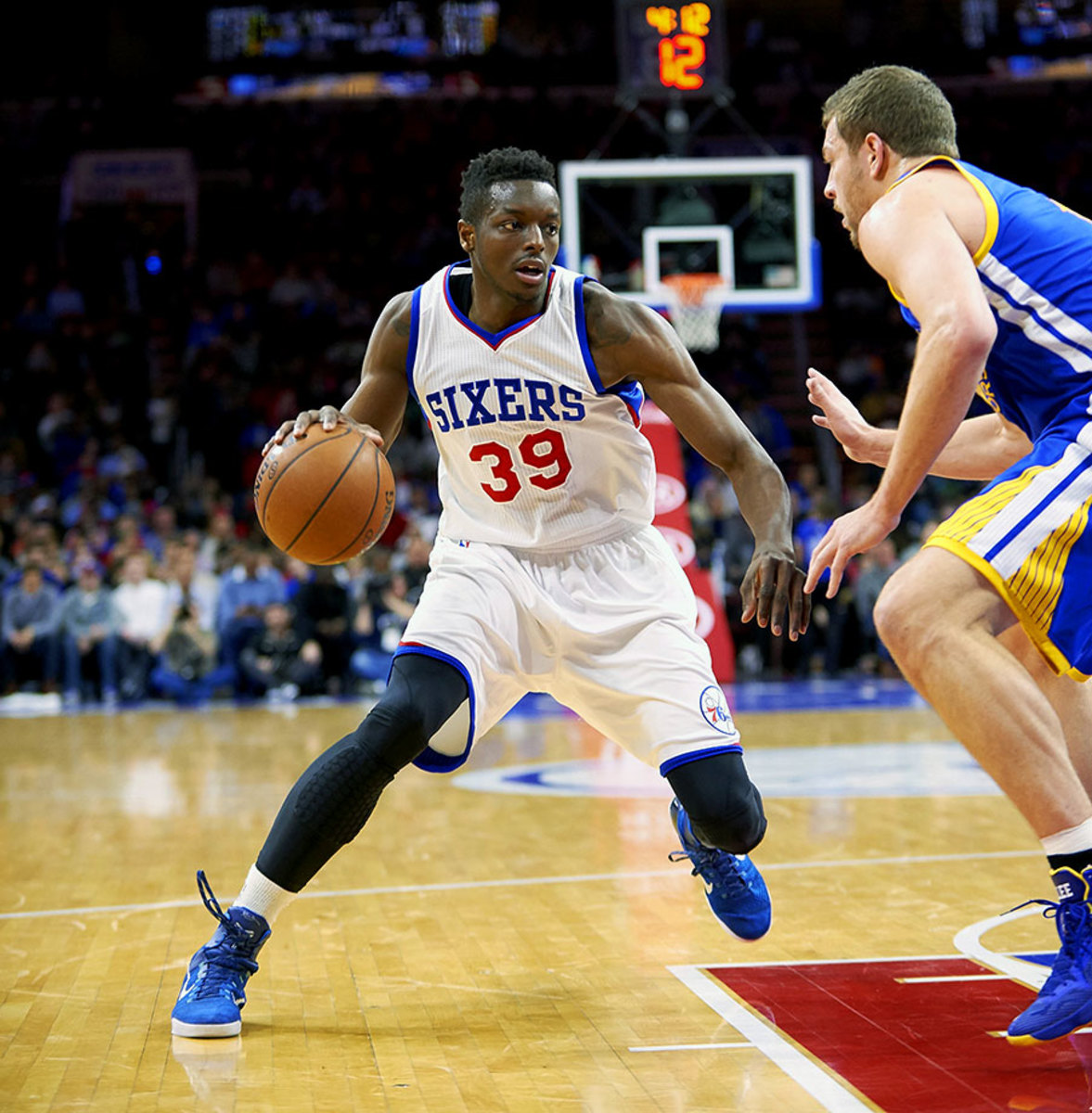
In just one NBA season, Grant posted the best statistical year of any player to don a No. 39 jersey. Grant settled on No. 39 after the Sixers made him the 39th pick in the 2014 NBA draft. He showed tremendous strides in his first season, draining 31.4% of his three-pointers on 156 attempts after hoisting just 20 triples in his two years at Syracuse. — Runner-up: Greg Ostertag
40 — Shawn Kemp
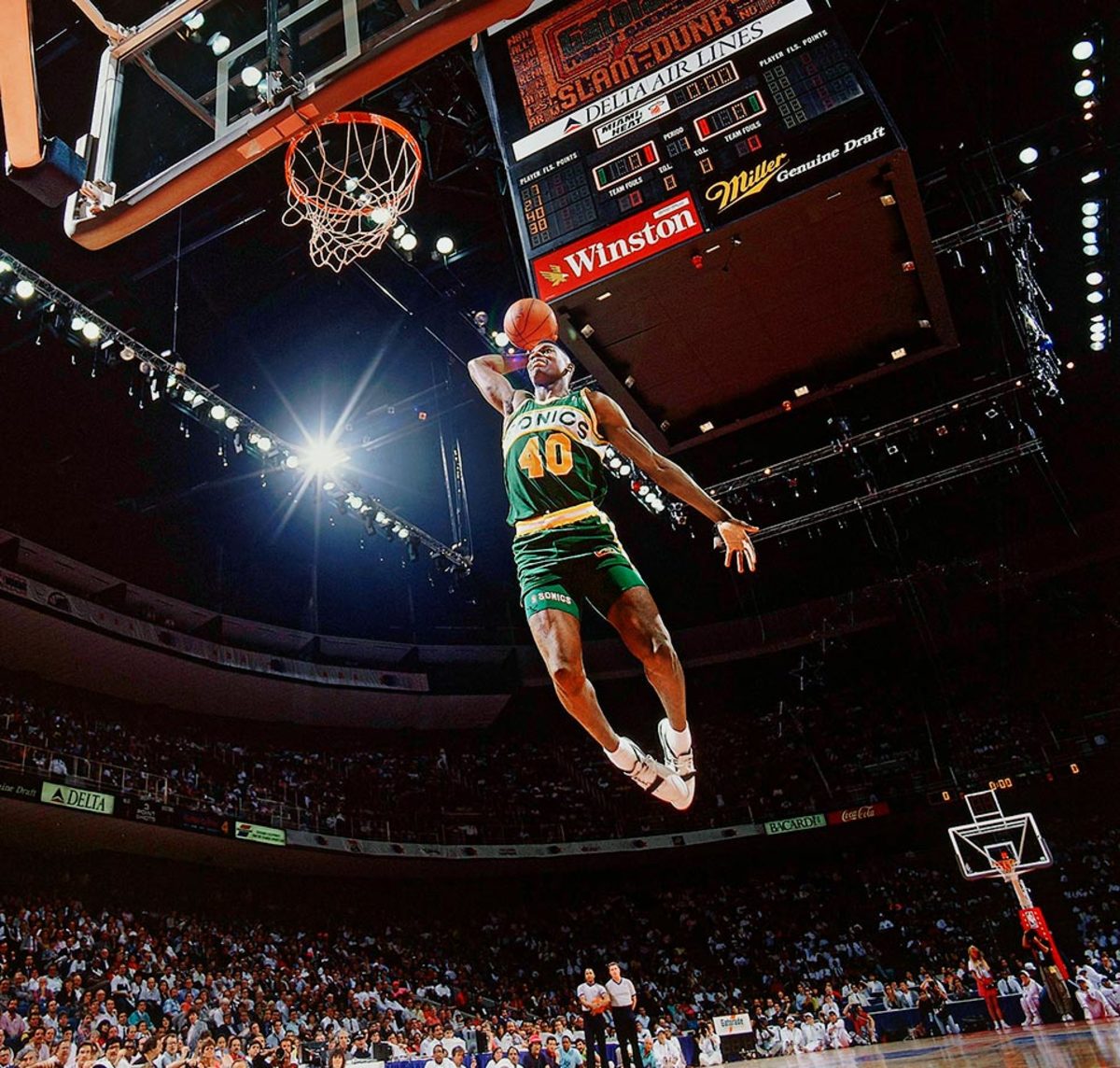
Kemp quickly became one of the NBA’s most exciting players and finished a six-time All-Star, his one-two punch with Gary Payton remaining one of the league’s more iconic pairings. At his best, he was a double-double machine and effective shot-blocker, threat to dunk on his defender and anchor for the Sonics on the way to the ‘96 NBA Finals, where they’d fall to Jordan, Pippen and the Bulls. —Runner-up: Bill Laimbeer
41 — Dirk Nowitzki
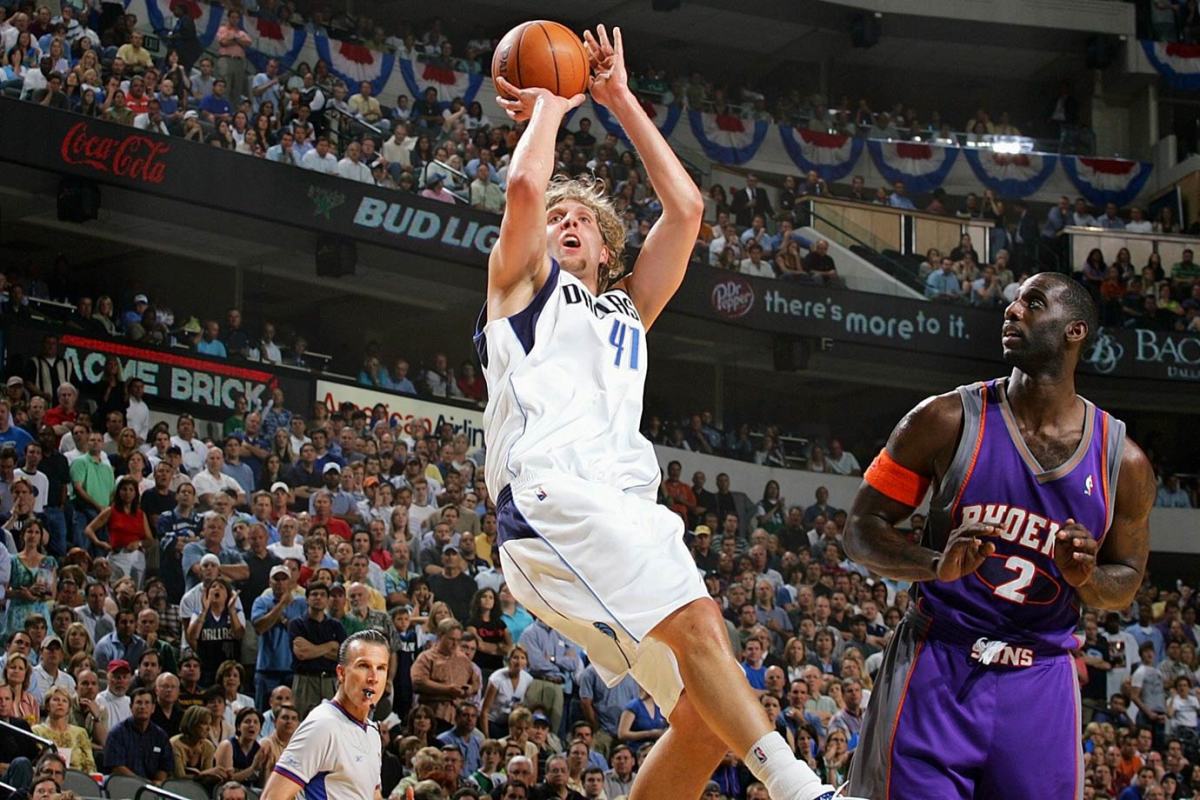
Arguably the greatest shooting big man of all-time, Nowitzki cemented his legacy after leading the Mavericks to a come-from-behind championship against the Heat in 2011. Nowitzki claimed the 2006 regular season MVP and has appeared in 13 All-Star Games. — Runners-up: Wes Unseld, Glen Rice
42 — James Worthy
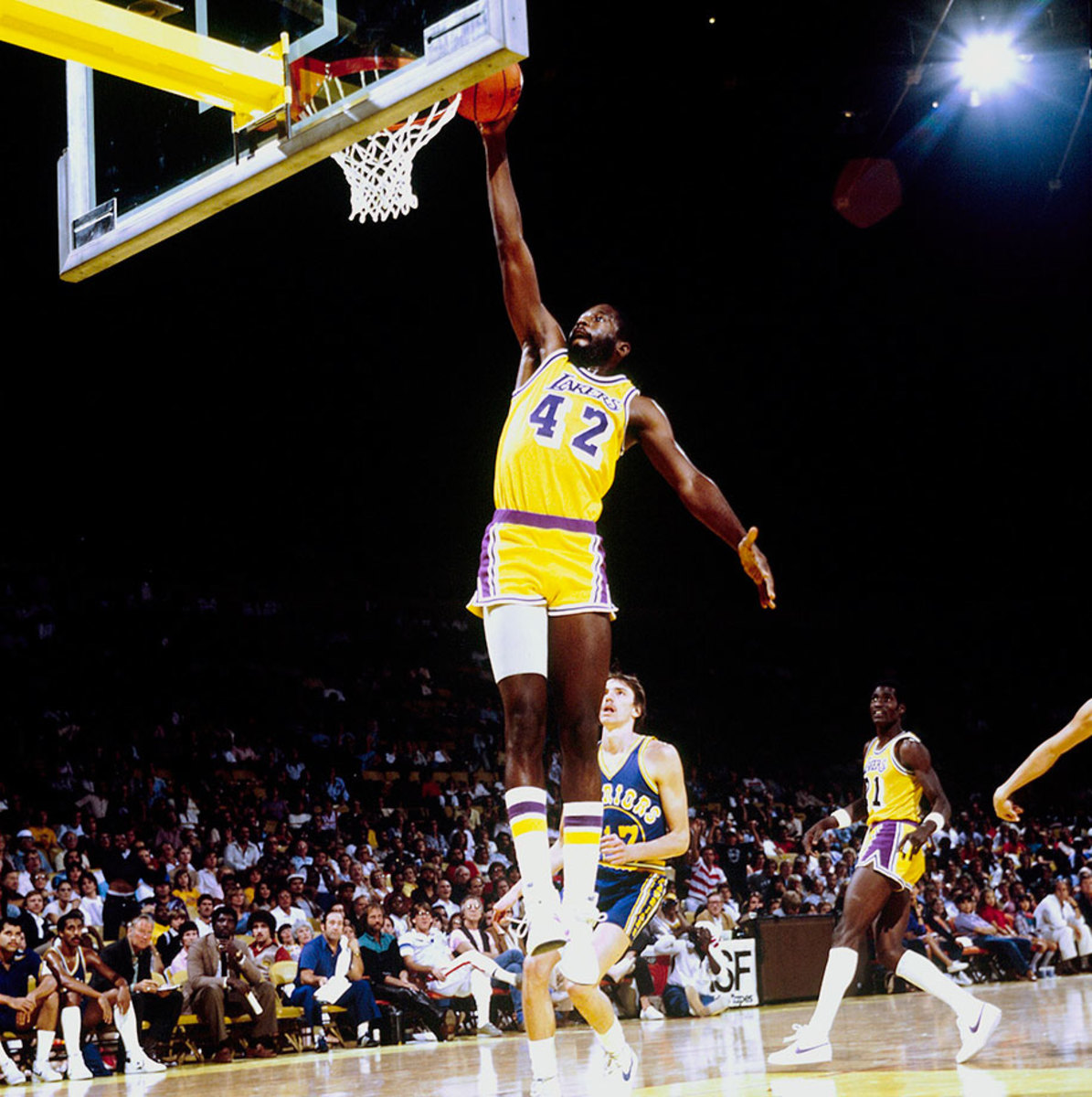
Worthy spent much of his career as the third banana on the Lakers alongside Kareem and Magic, but became an all-time great one in the process, getting his numbers and playing a critical role throughout. He averaged 17.6 points on 52.1% shooting in his 12 years as a Laker and came away a three-time NBA champion and seven-time All-Star. — Runners-up: Elton Brand, Kevin Love, Connie Hawkins
43 — Jack Sikma
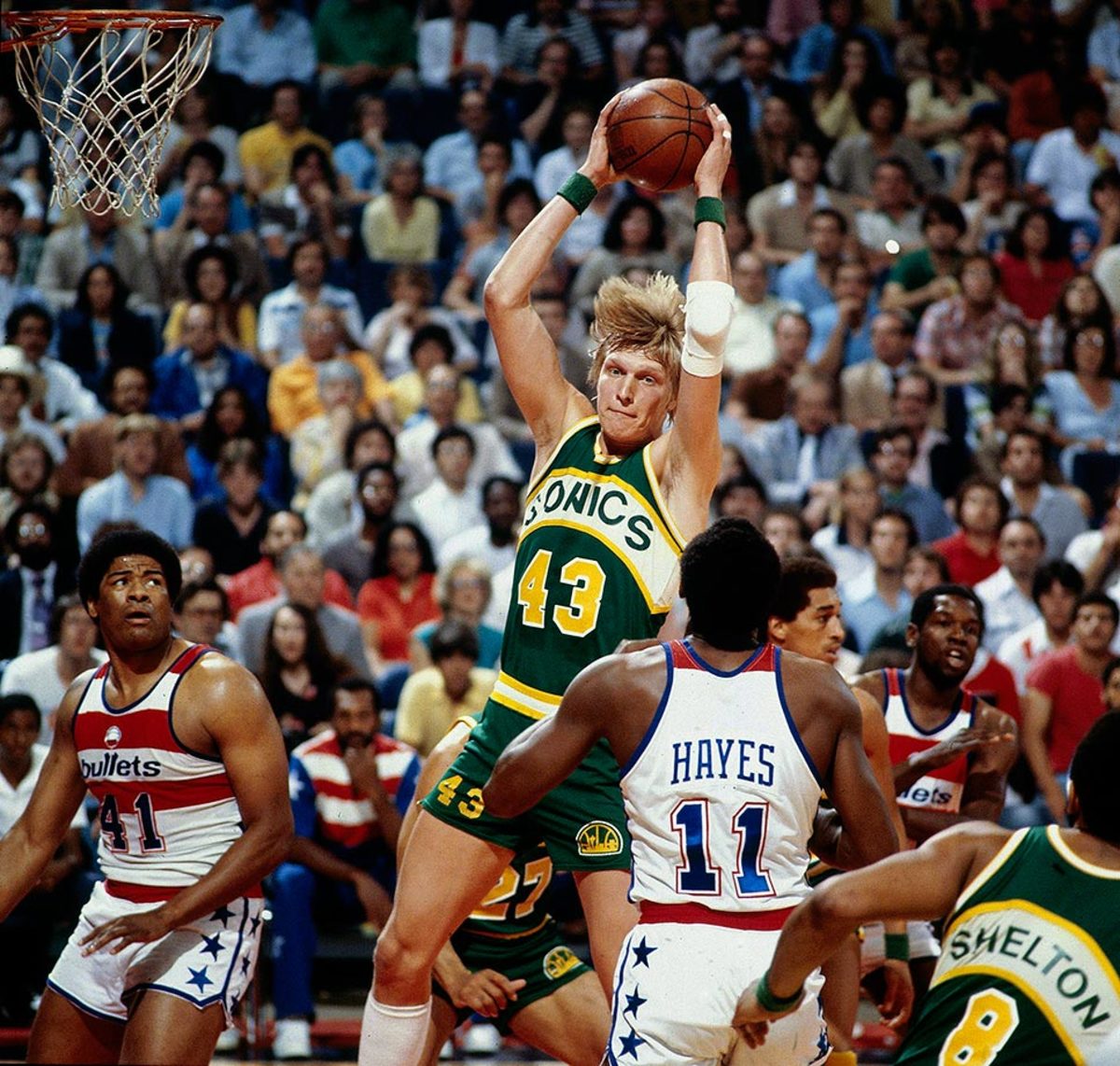
At just 23 years old, Sikma helped the Seattle Supersonics claim their only championship in franchise history, averaging 14.8 points and 11.7 rebounds per game in the 1979 postseason. A seven-time All-Star, Sikma ranks 30th all-time in NBA history in career total rebounds. — Runner-up: Brad Daugherty
44 — Jerry West
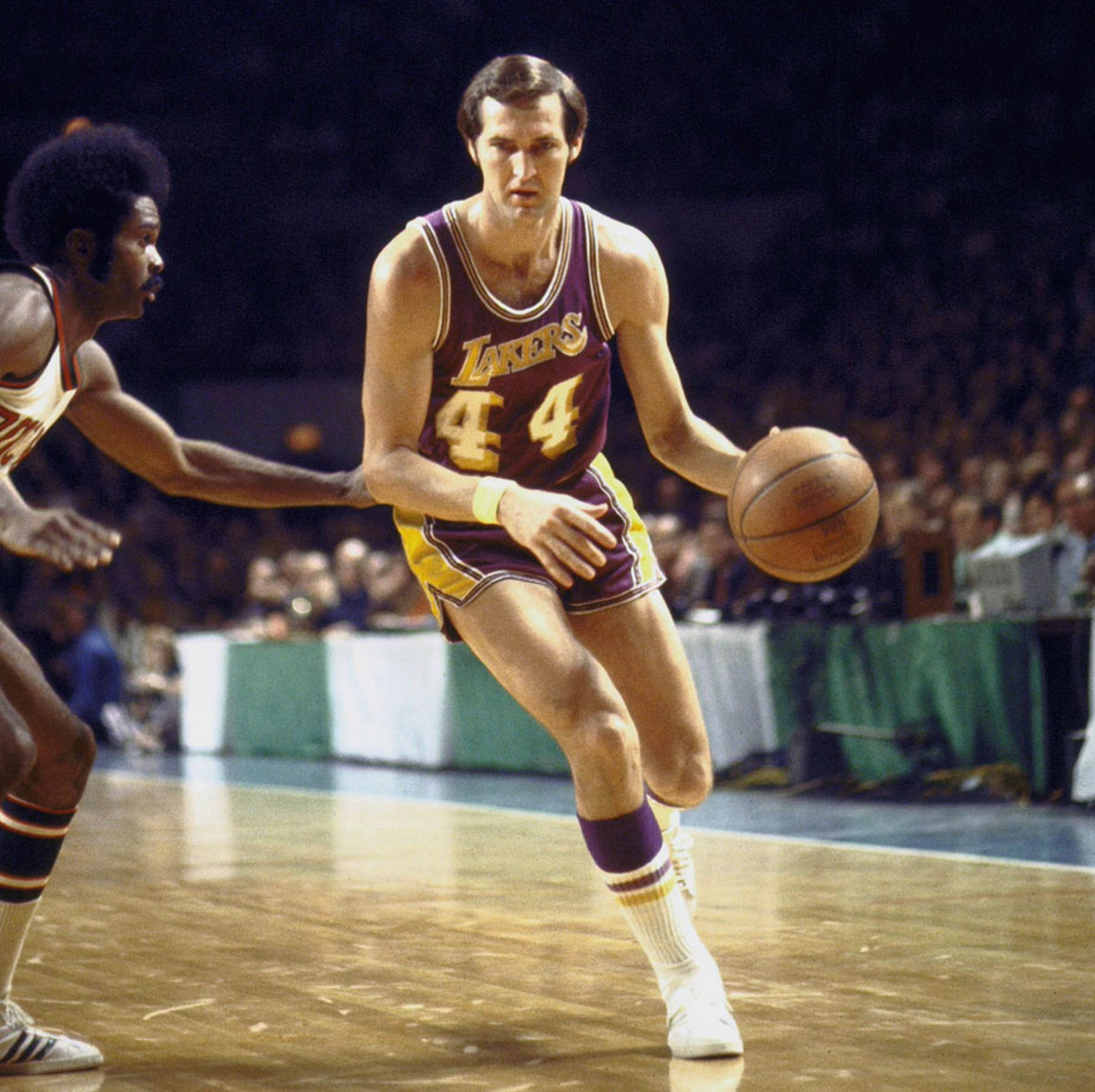
He’s on the NBA logo and forever etched into its history as a player and executive. Jerry West was a 14-time All-Star and 1972 NBA champion, and lost in the historic romanticism and his efforts in the Lakers’ front office is the fact that he straight up put the ball in the basket. With an average of 27 points per game over 14 seasons, all before the advent of the three point line, West’s transcendence as a player is tough to argue against. — Runner-up: George Gervin
45 — Rudy Tomjanovic
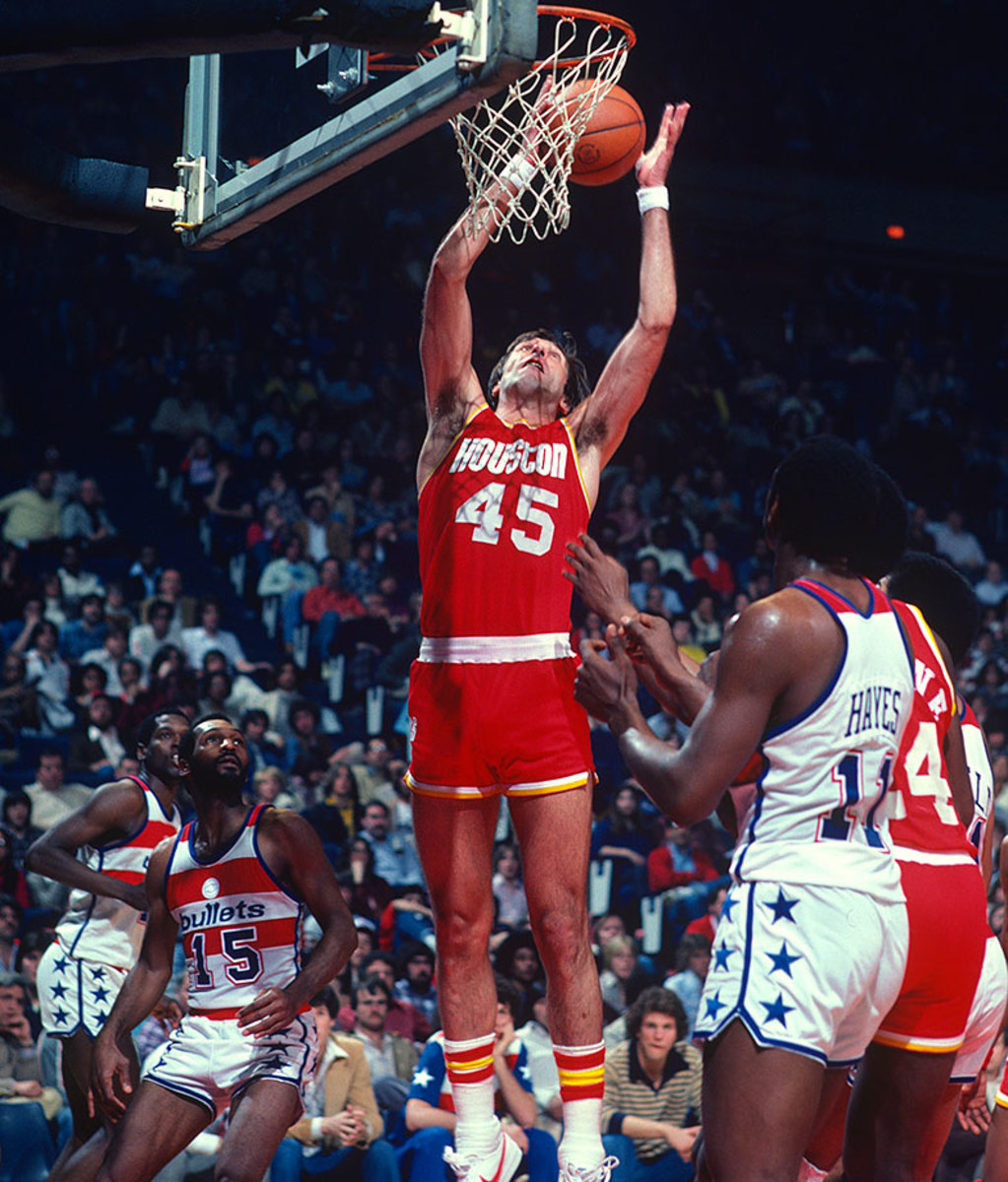
The No. 2 overall pick in the 1970 NBA draft, Rudy Tomjanovic is the third leading scorer in Rockets franchise history behind only Calvin Murphy and Hakeem Olajuwon. A five-time All-Star, Tomjanovic’s last name was so long, the back of his jersey often read, “Rudy T.” — Runner-up: A.C. Green
46 — Bo Outlaw
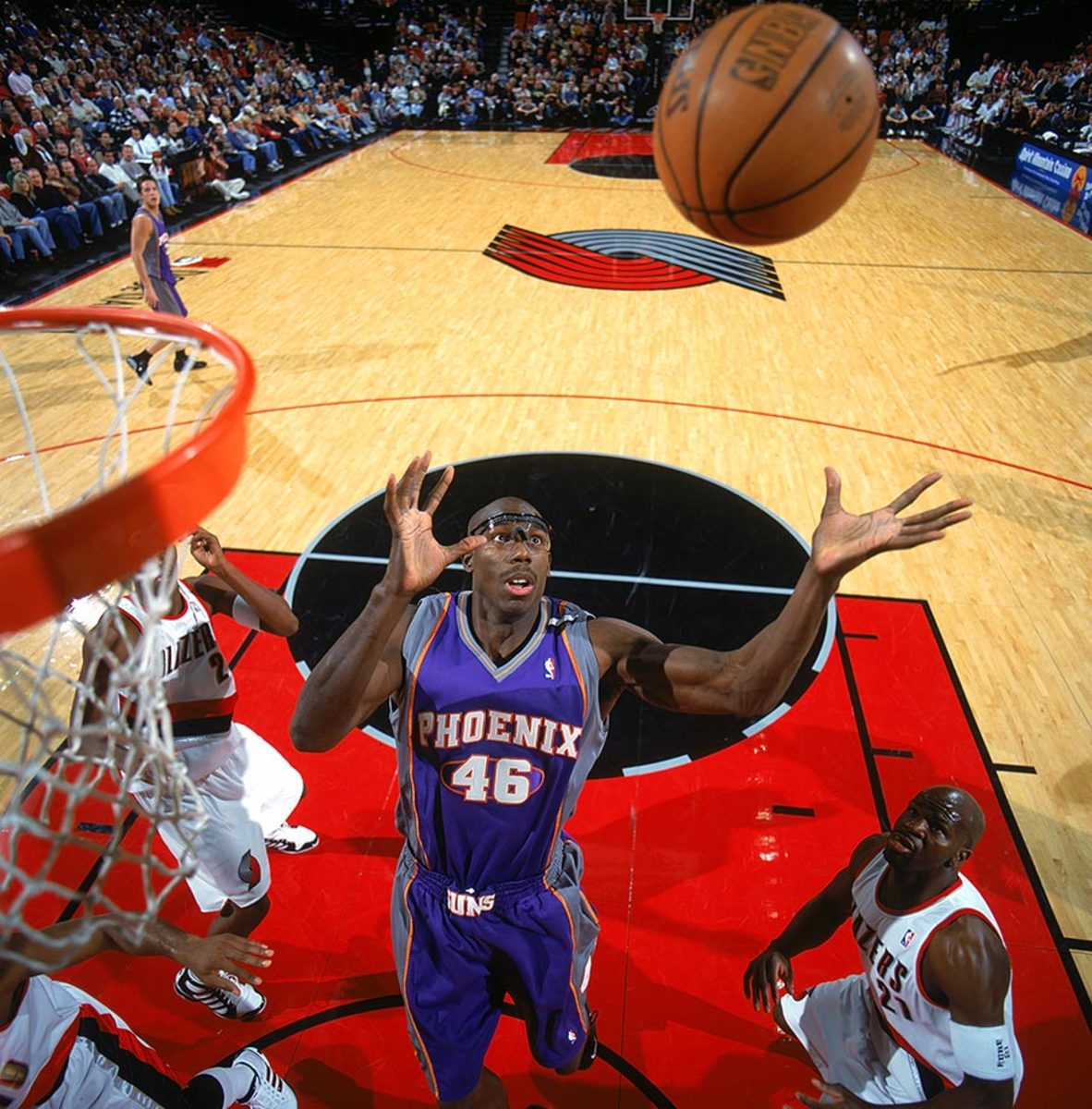
A terrific athlete, tough defender and abysmal free-throw shooter, Outlaw carved out a long career for himself despite an uninspiring statistical profile. His game peaked in 1998, with 25 points, 13 rebounds and 10 assists in a win as a member of the Magic. A reporter asked him how he felt about his triple-double, which led to Outlaw’s famous reply: “What’s that? Some kind of hamburger?”
47 — Andrei Kirilenko
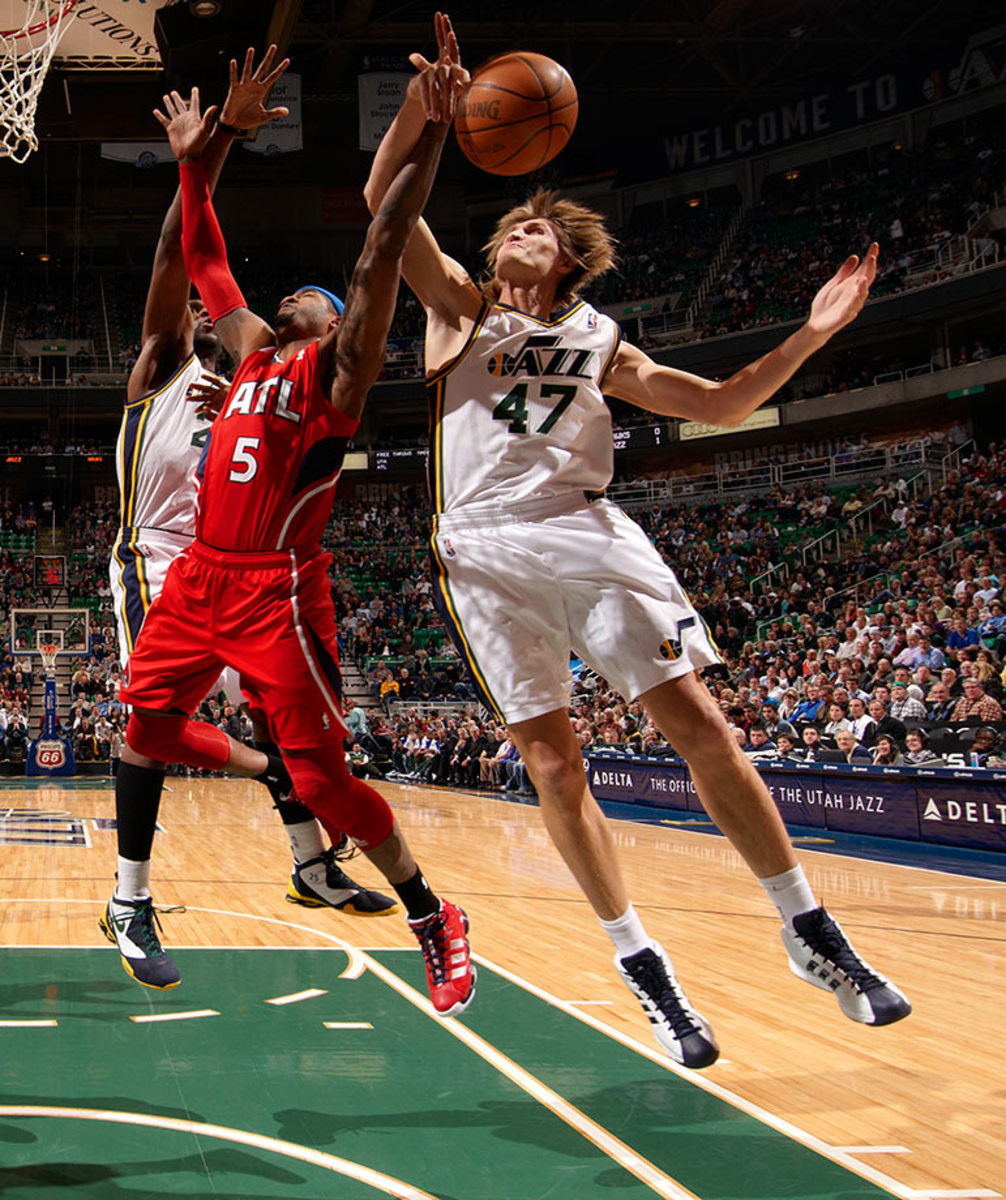
In 2001, Kirilenko joined the Jazz after Utah made him the first Russian player drafted in NBA history in 1999. Kirilenko was named an All-Star in 2004 and was a three-time first-team All-Defense selection. Kirilenko was instrumental in Utah’s transition from John Stockton and Karl Malone to the Deron Williams and Carlos Boozer era. — Runner-up: Scott Williams
48 — Nazr Mohammed
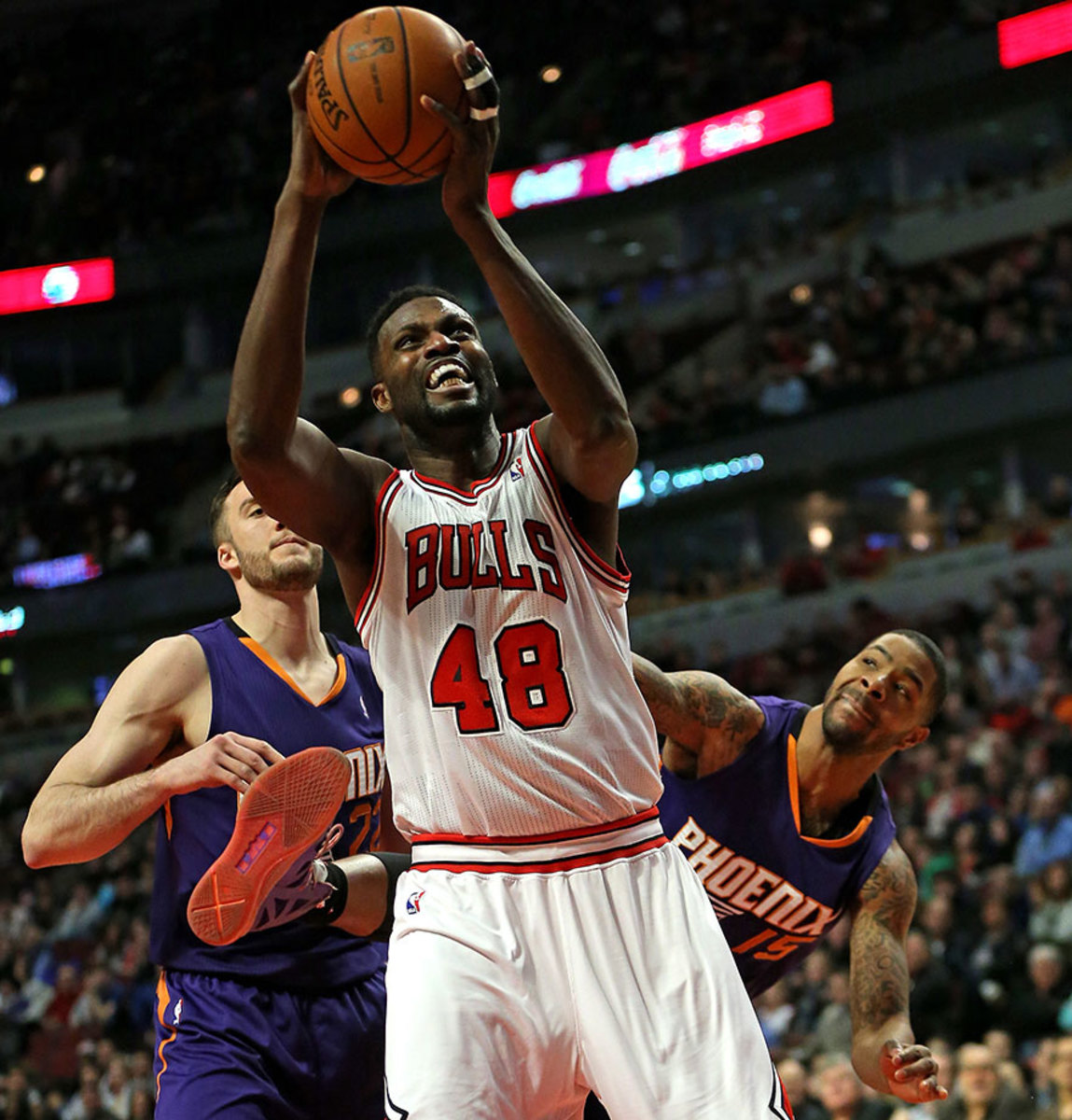
A career journeyman, Mohammed had serviceable years earlier in his career before seeing his playing time dwindle with age in Oklahoma City and now Chicago. He won a title in 2005 as a backup with the Spurs but peaked statistically as a Hawk in 2001-02, with 9.1 points and 7.9 boards per game.
49 — Shandon Anderson
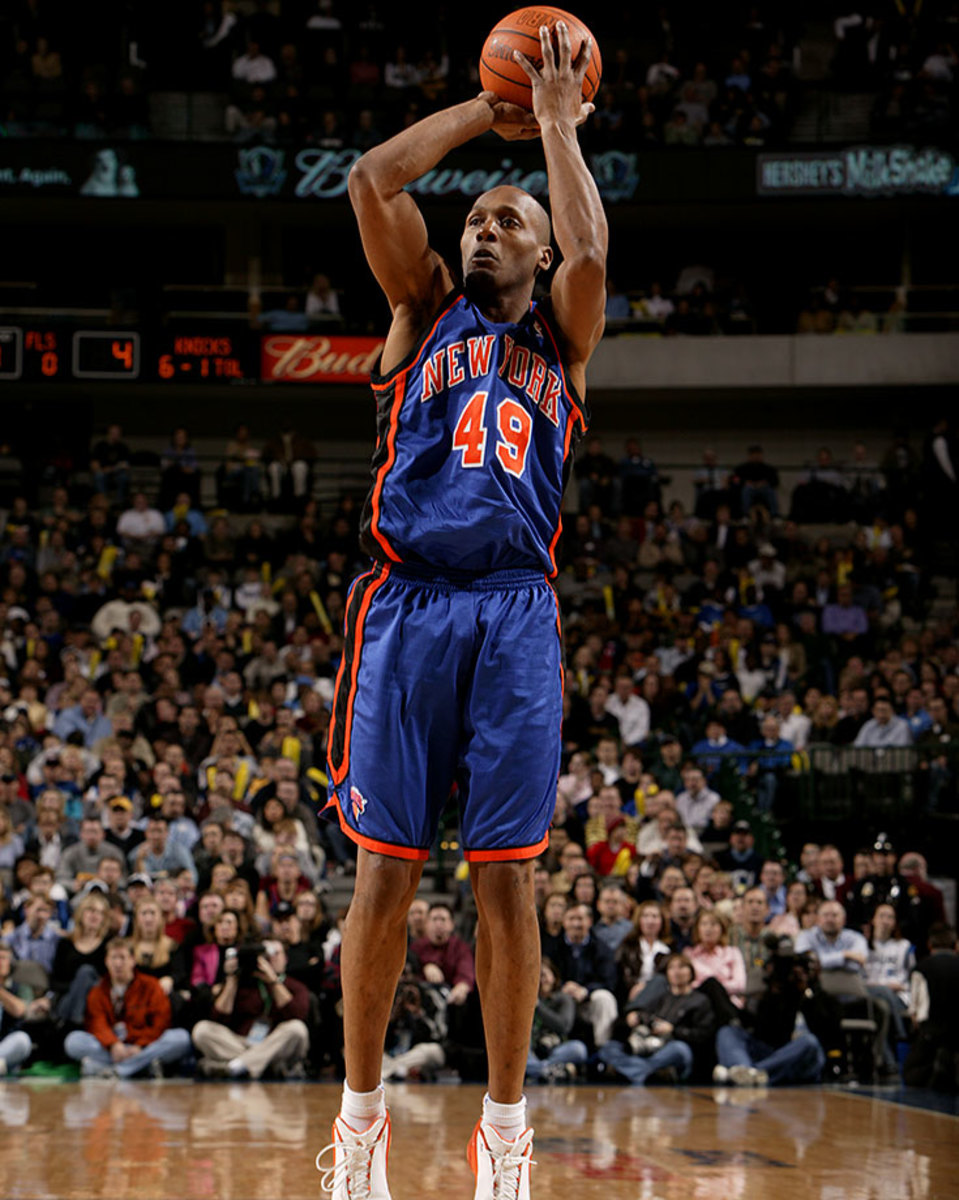
Anderson far exceeded expectations throughout his career after being drafted with the 54th pick in the 1996 NBA draft. In his 10-year career, Anderson’s best season came in 1999-2000, when he averaged 12.3 points, 4.7 rebounds and 2.9 assists per game for the Rockets. He was a reserve on the Heat’s 2006 championship team. — Runner-up: Mel McCants
50 — David Robinson

The Admiral was an incredible talent whose individual greatness occasionally gets lost because of the team-first nature of the Spurs’ dynasty and Tim Duncan’s sustained quality. Robinson was part of the Spurs’ first two championships (1999 and 2003), teaming with Tim Duncan to lay the groundwork for what was to come. But a young Robinson could carry a team, make no mistake about it: he averaged 29.8 points and 10.7 rebounds in 1994 and averaged 21.1 points for his career. — Runners-up: Steve Mix, Ralph Sampson, Zach Randolph
51 — Reggie King
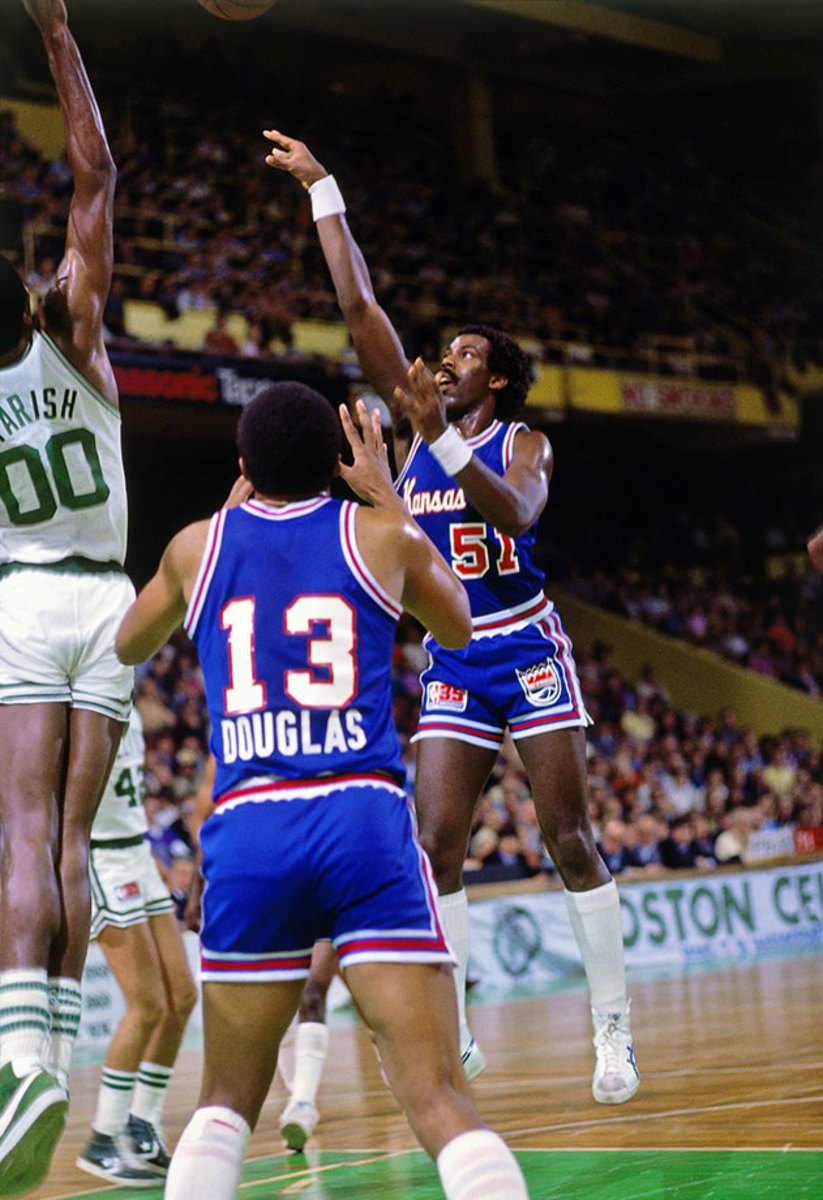
The 18th overall pick in the 1979 NBA draft, King played four seasons for Kansas City before finishing his career for two years in Seattle. During his second year with the Kings, in 1980-81, King posted his best season, averaging 14.9 points and 9.7 rebounds and shot 54.% from the field. — Runner-up: Lawrence Funderburke
52 — Jamaal Wilkes
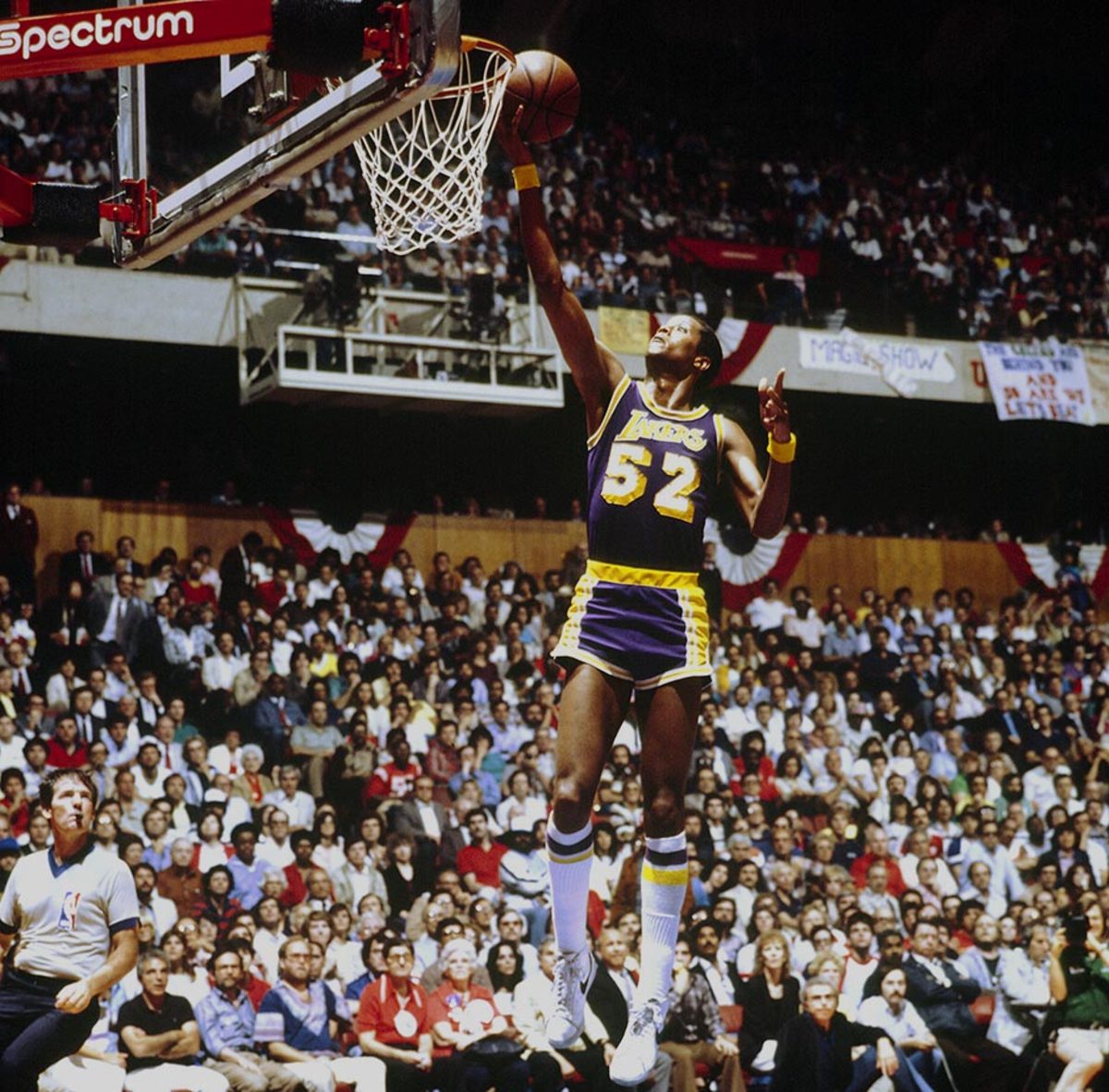
Overshadowed by star teammates but statistically impressive, Wilkes was a key player in the Lakers’ incredible run of success. He won Rookie of the Year as part of Golden State’s title team in 176, captured three titles with the “Showtime” Lakers and averaged 17.7 points and 6.2 rebounds for his career. There may not be a better metaphor for his career than this: he scored 37 points and 10 rebounds in 1980’s Game 6 to clinch the Finals, which happened to be the same game Magic famously started for Kareem at center and finished with 42 points, 15 rebounds and seven assists.
53 — Artis Gilmore
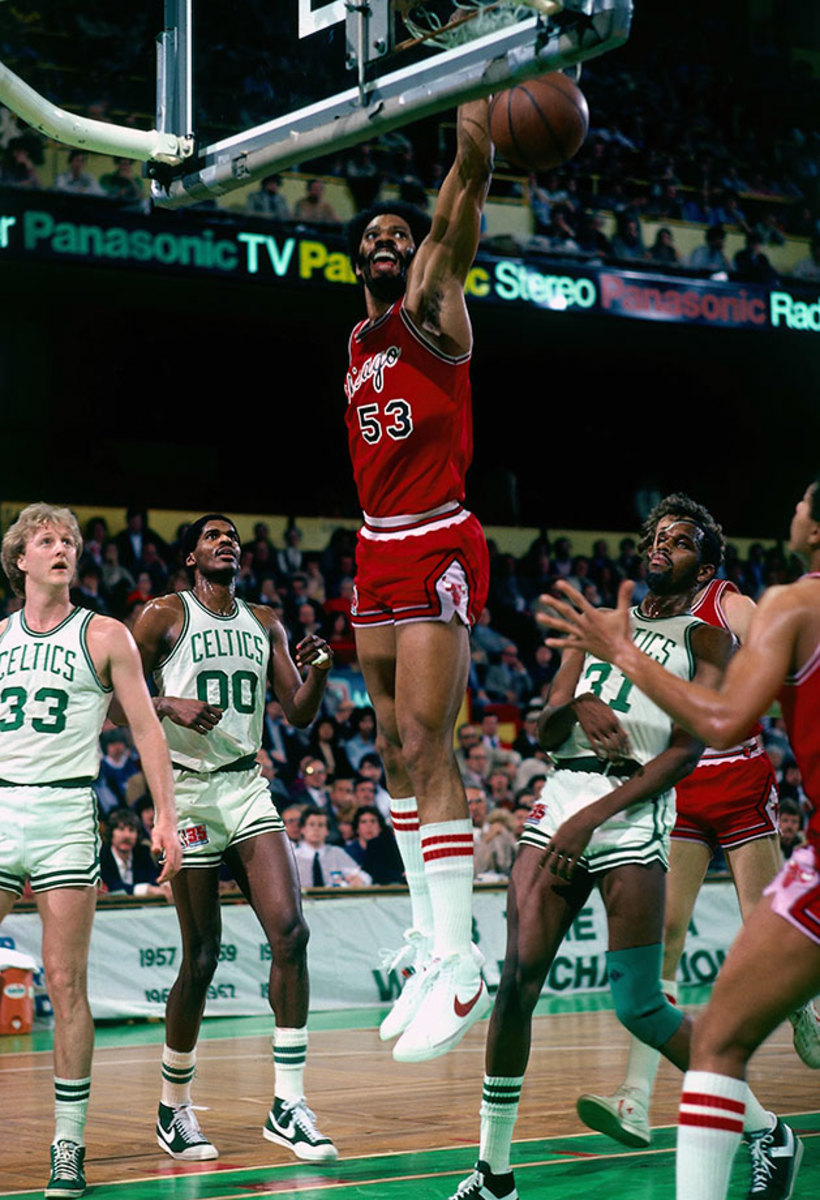
Still the NCAA’s all-time leader in rebounds per game, Gilmore made five All-Star appearances in the ABA. The Chicago Bulls made Gilmore the No. 1 overall pick in the 1976 dispersal draft as part of the NBA-ABA merger. Gilmore appeared in six NBA All-Star games. He is still the NBA’s career leader in field goal percentage at 59.9%. — Runner-up: Darryl Dawkins
54 — Horace Grant
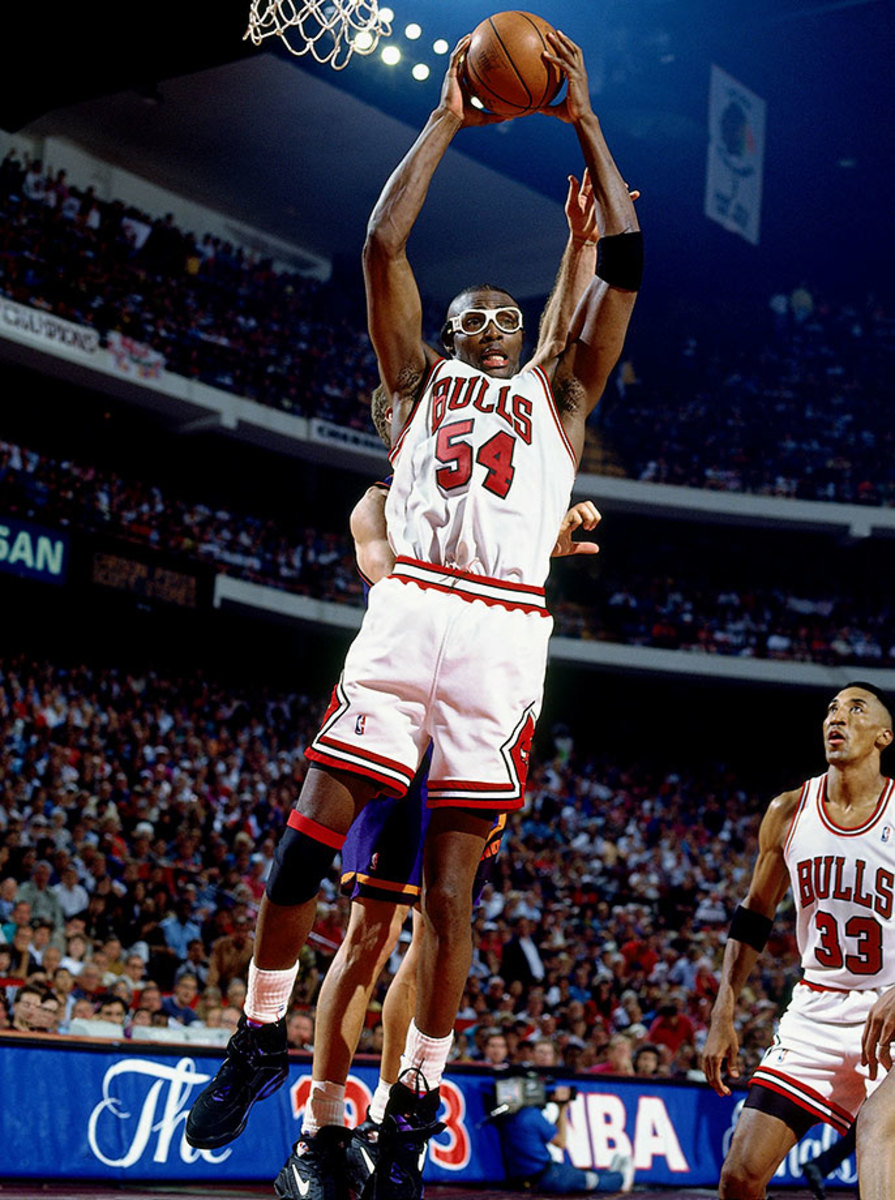
The Bulls drafted Grant five picks after Scottie Pippen in 1987, two moves that would greatly add to the cast around Michael Jordan and lead to Chicago’s first three-peat. Grant left the Bulls after an All-Star season in 1994. He never quite hit that peak again, but Grant was an effective two-way player and would earn another ring with the Lakers in 2001.
55 — Dikembe Mutombo
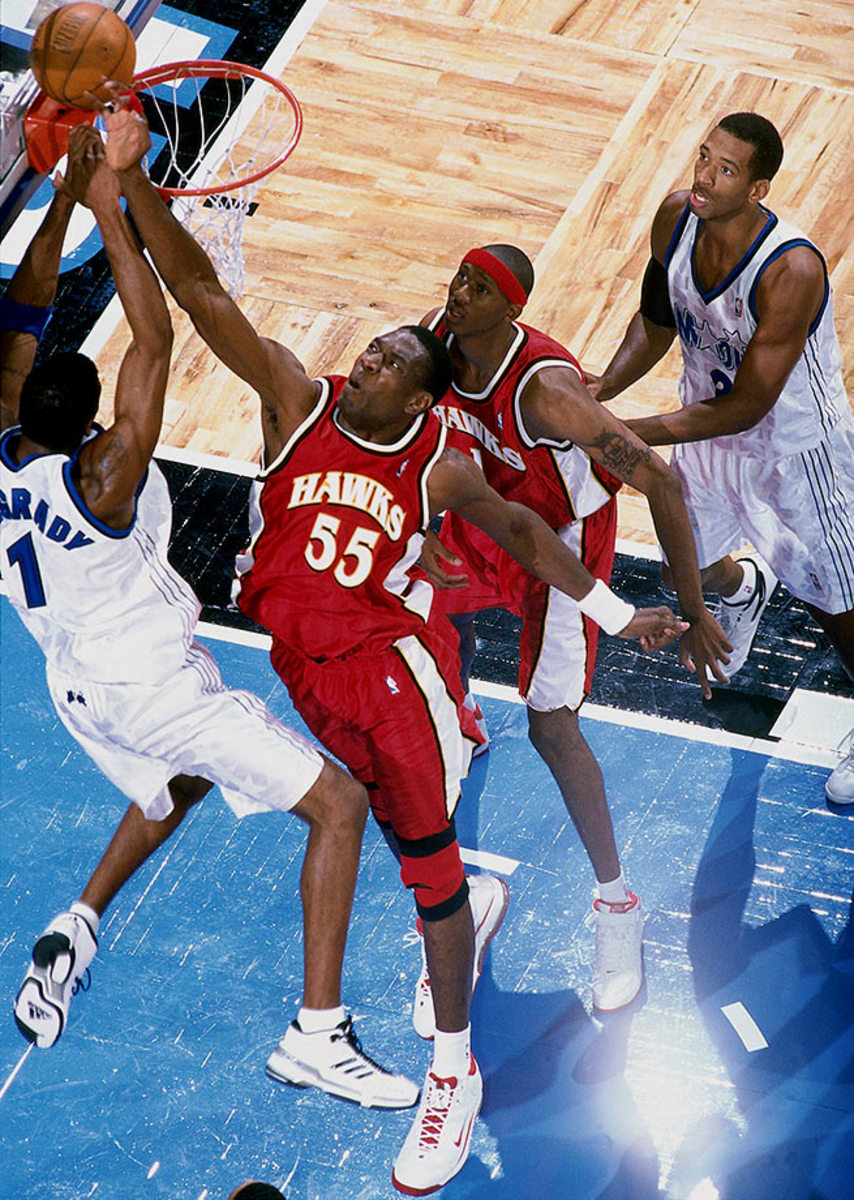
His full name, Dikembe Mutombo Mpolondo Mukamba Jean-Jacques Wamutombo, is almost as long as his stellar 18-year career. Mutombo ranks second all-time in NBA history in career blocks, was an eight-time All-Star and earned Defensive Player of the Year honors four times. He reached the playoffs in 13 seasons. — Runner-up: Kiki Vandeweghe
56 — Francisco Elson
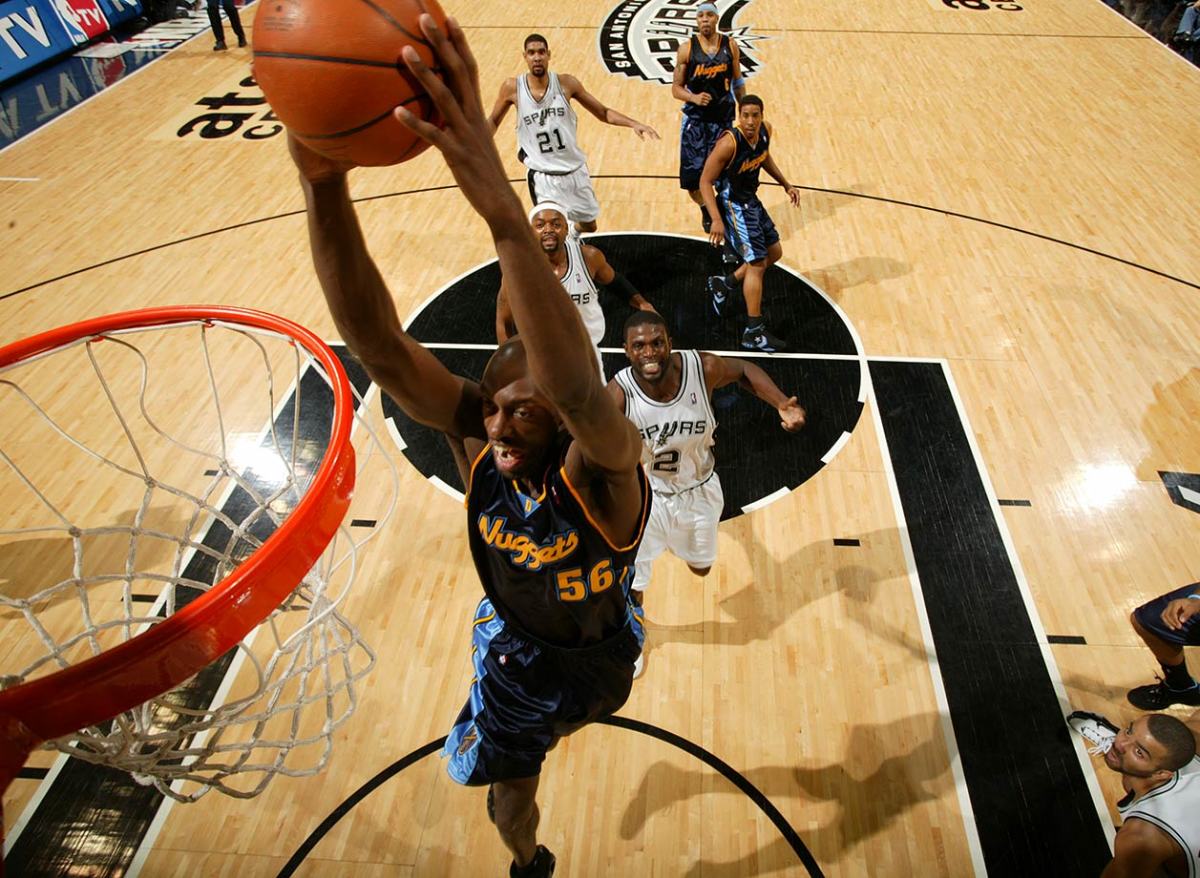
Hailing from the Netherlands, Elson was a second-round pick who would never make a major impact at the NBA level. He did start 54 games for Denver in 2006 and gain some fame for scuffling with Kevin Garnett in the playoffs that year. He won a title with San Antonio in 2007, starting 41 games that season.
57 — Hilton Armstrong
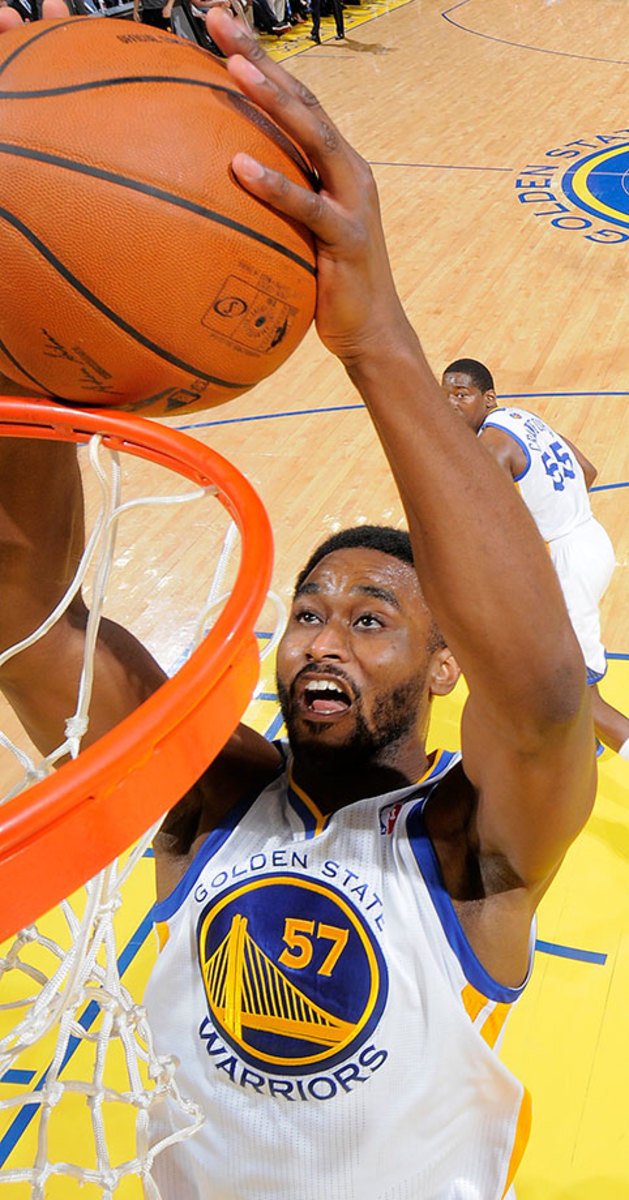
The UConn product and 12th overall pick in the 2006 NBA draft, Armstrong is the only player in NBA history to have worn #57. Armstrong donned the number in the 2013-14 season, in which he appeared in 15 games for the Golden State Warriors. Armstrong’s best year came in 2008-09, when he averaged 4.8 points and 2.8 rebounds for the New Orleans Hornets.
61 — Bevo Nordmann
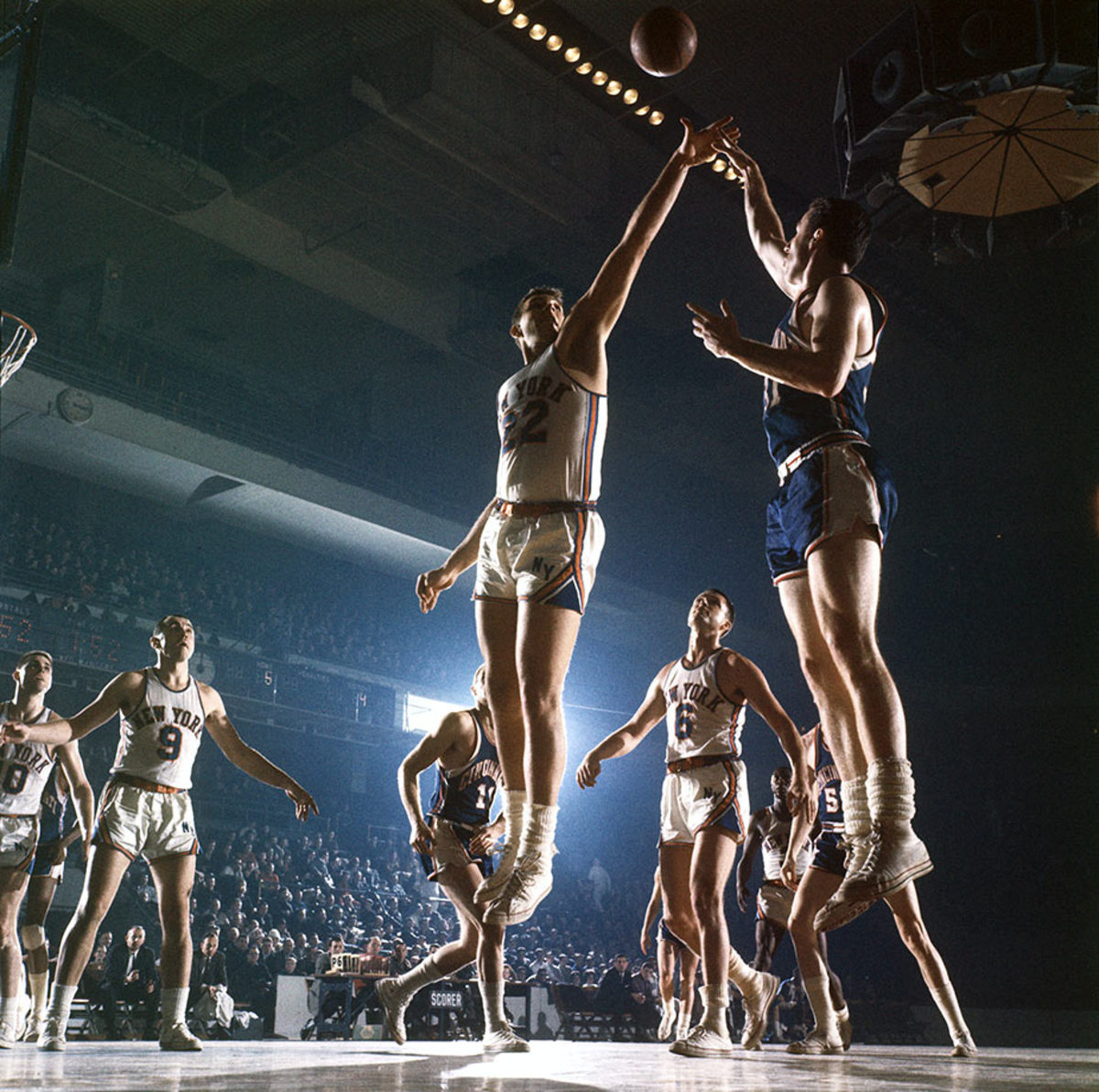
After the Cincinnati Royals selected him with the second pick in the third round of the 1961 NBA draft, Nordmann played just four seasons in the NBA. He wore No. 61 in his rookie season in 1961-62. Nordmann averaged 7 points and 6 rebounds for the St. Louis Hawks and New York Knicks (pictured here wearing No. 22) in the 1962-63 season. — Runner-up: Dave Piontek
62 — Scot Pollard
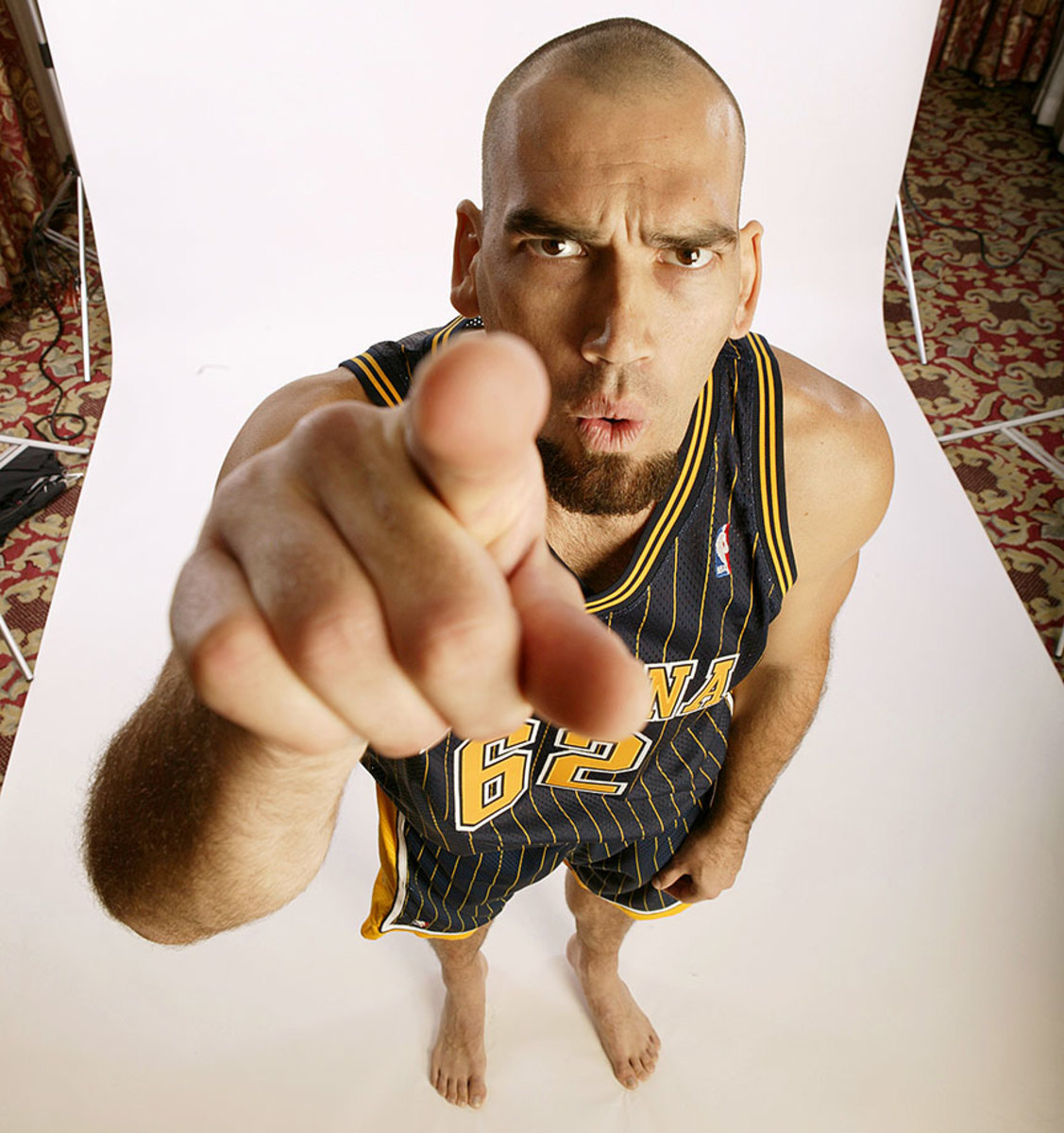
Pollard was notorious for his tough defensive play and variety of wild hairstyles, and not necessarily in that order. Still, he appeared in the playoffs in nine of his 11 seasons and made his greatest impact backing up Vlade Divac with the Kings in the early 2000s, occasionally filling in at power forward when Chris Webber was hurt.
70 — Frank Selvy
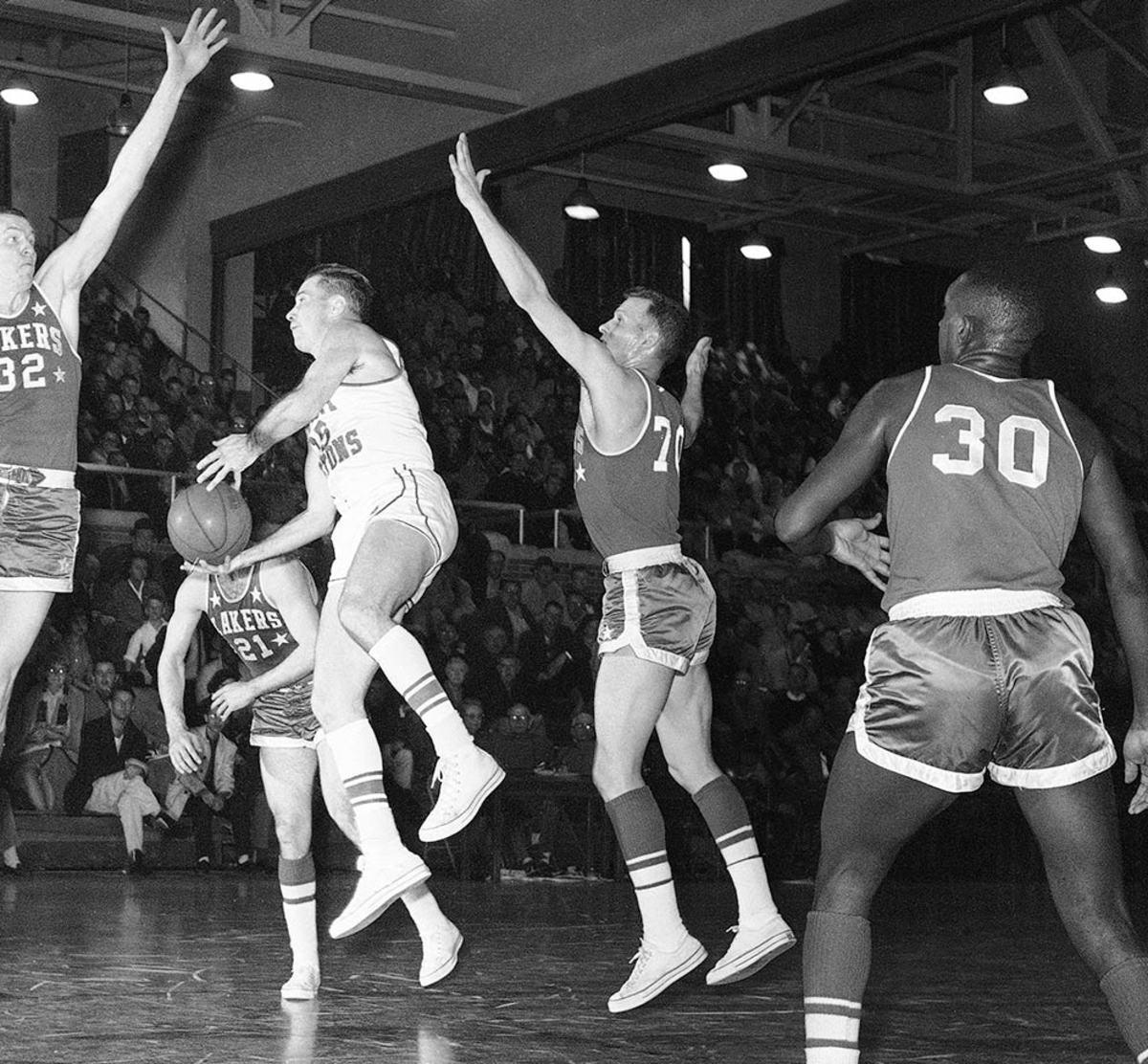
Selvy holds the NCAA Division I record for points in a game with 100 (yes, you read that right). He was the first overall pick in the 1954 NBA draft and averaged 10.8 points per game in ten seasons. Selvy was a two-time NBA All-Star and a teammate to Elgin Baylor and Jerry West with the Lakers.
71 — Willie Naulls
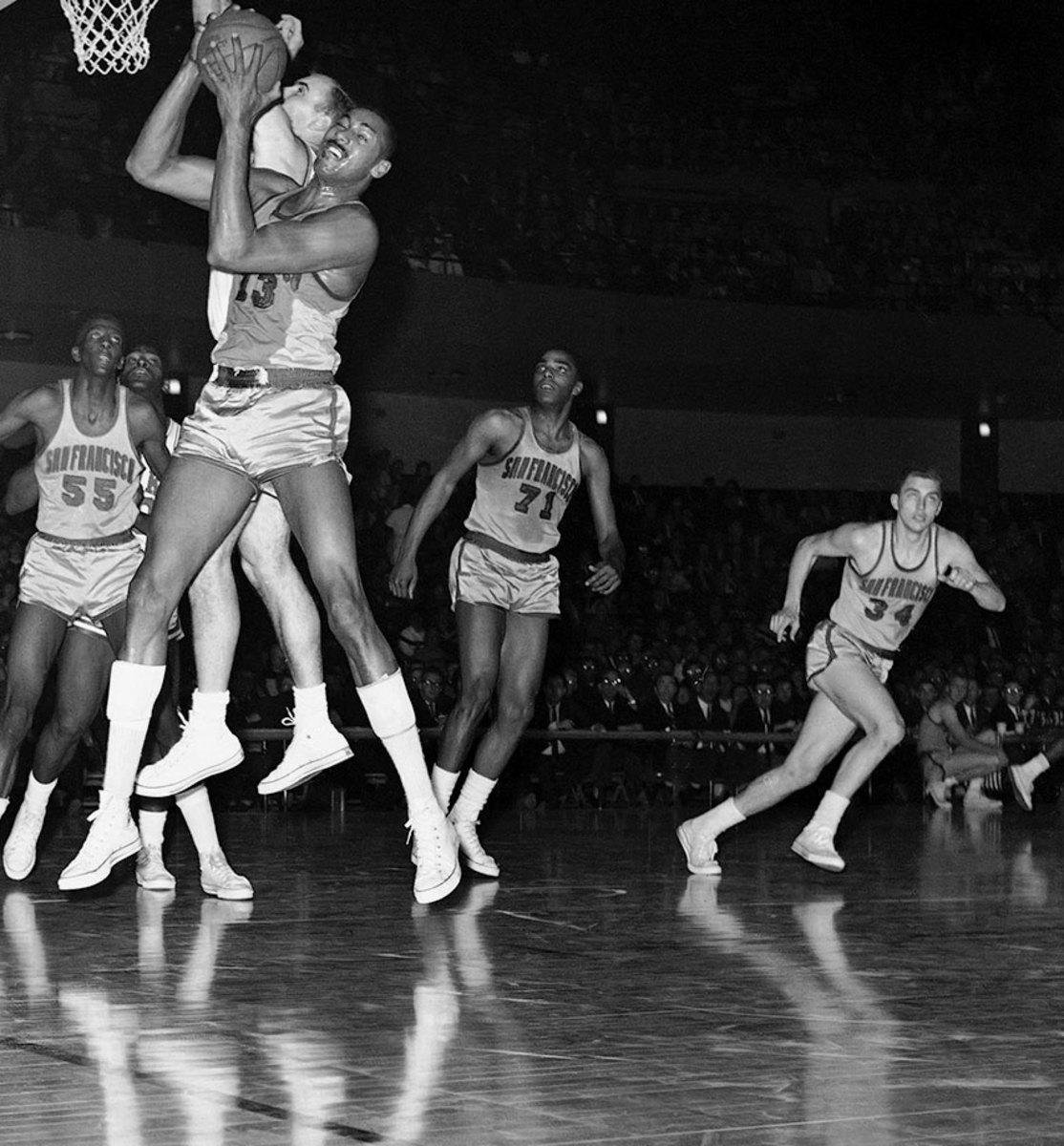
A four-time All-Star, Willie Naulls starred for the New York Knicks during the late 1950s and early 1960s. From 1959 to 1962, Naulls averaged over 20 points and 10 rebounds before game. He wore No. 71 for the Golden State Warriors for 47 games in the 1962-93 season after the Knicks traded him for Tom Gola. — Runners-up: McCoy McLemore, Bob Wiesenhahn
72 — Jason Kapono
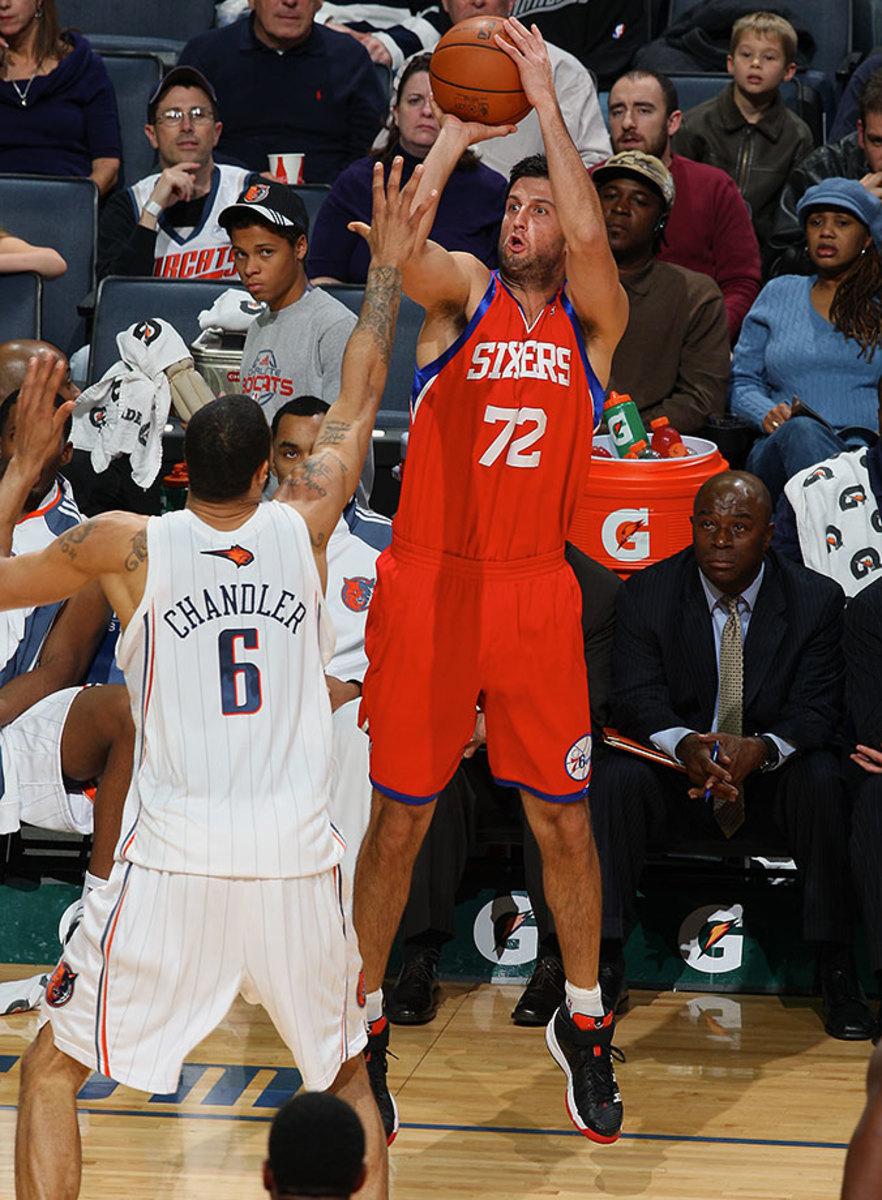
Kapono was the second-to-last pick of the 2003 NBA draft and had a relatively nice nine-year career as a role player known for his shooting ability. He led the league in three-point percentage with a 51.4% clip in 2006-07 as a member of the Heat, the year following Miami’s title win. He also outshot Dirk Nowitzki and Gilbert Arenas to win the shootout at All-Star weekend that year and would successfully defend that title in ‘08.. Kapono holds the distinction of blocking the first shot in Bobcats history as a member of Charlotte’s expansion roster.
73 — Dennis Rodman
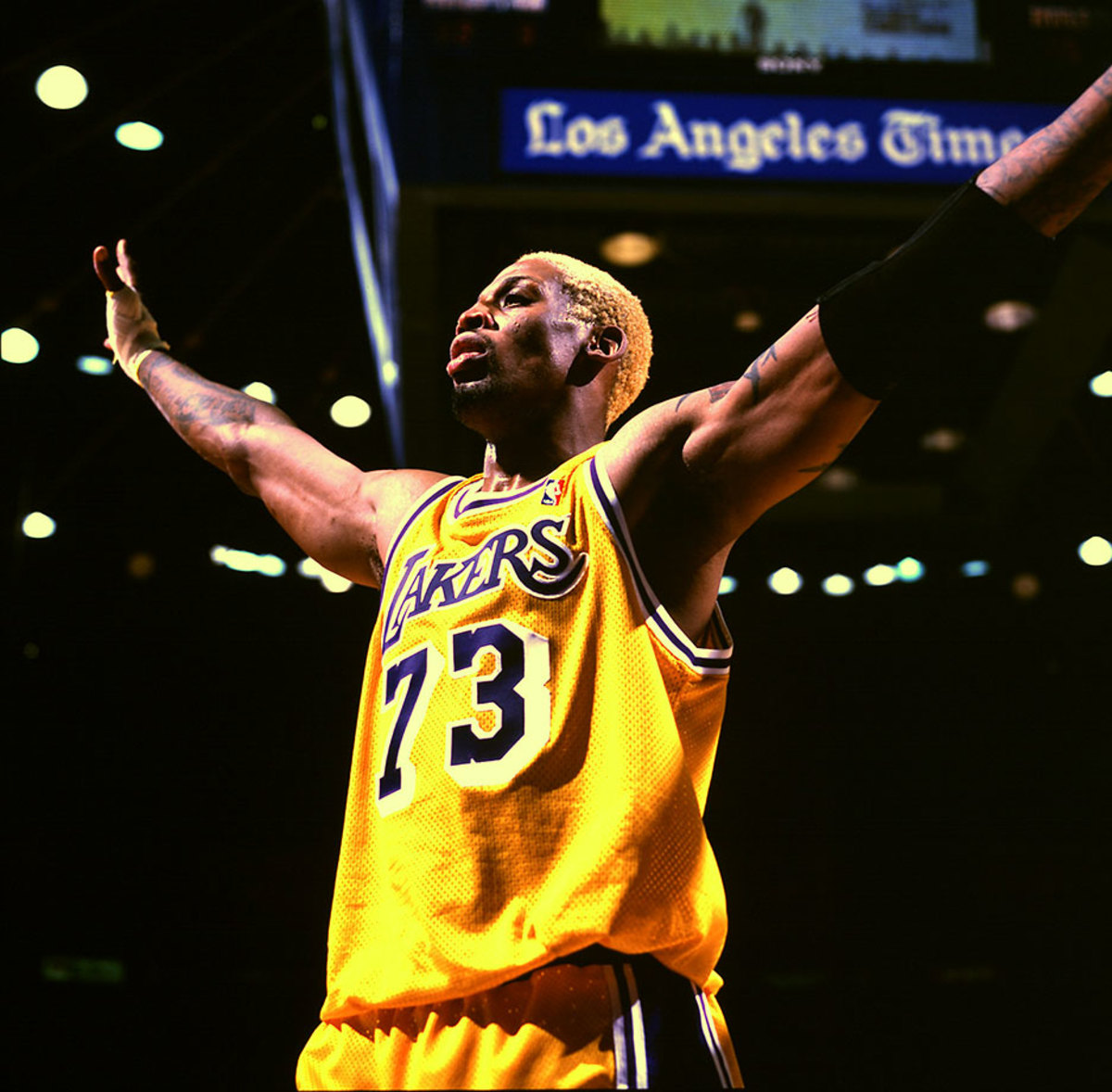
Rodman’s most famous for wearing No. 91, and is the only player to make this list twice, given he became the only player in NBA history to wear No. 73 when he suited up for the Los Angeles Lakers in the 1998-99 season. He’s a five-time NBA champion, winning two as a “Bad Boy” Piston and three with Jordan’s Bulls, and set an NBA record by leading the league in rebounding for seven straight seasons (1991-98).
76 — Shawn Bradley
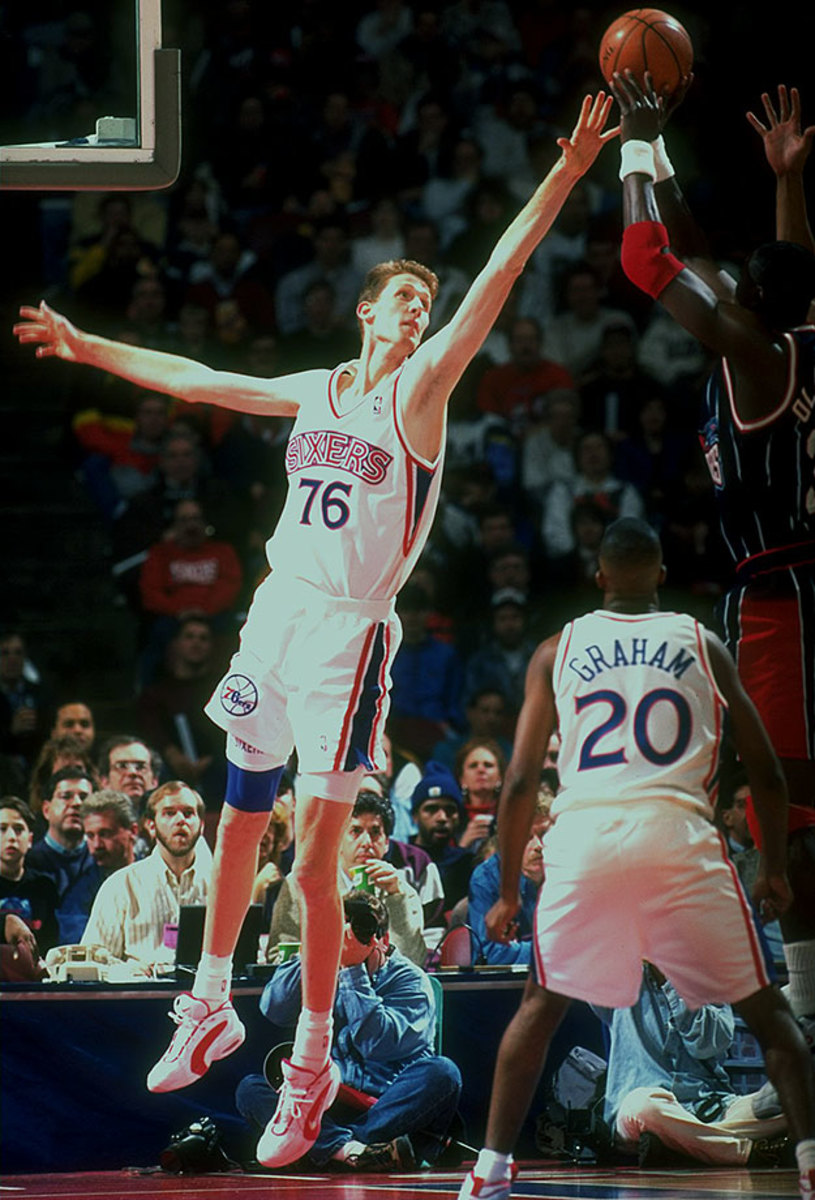
Standing 7’6”, Bradley’s height made him an NBA commodity and he enjoyed a solid career functioning primarily as one of the league’s best shot-blockers. He averaged three or more blocks per game in each of his first six seasons while also rebounding effectively and scoring when needed. Bradley also took a memorable turn as a supporting character in Space Jam.
77 — Gheorghe Muresan
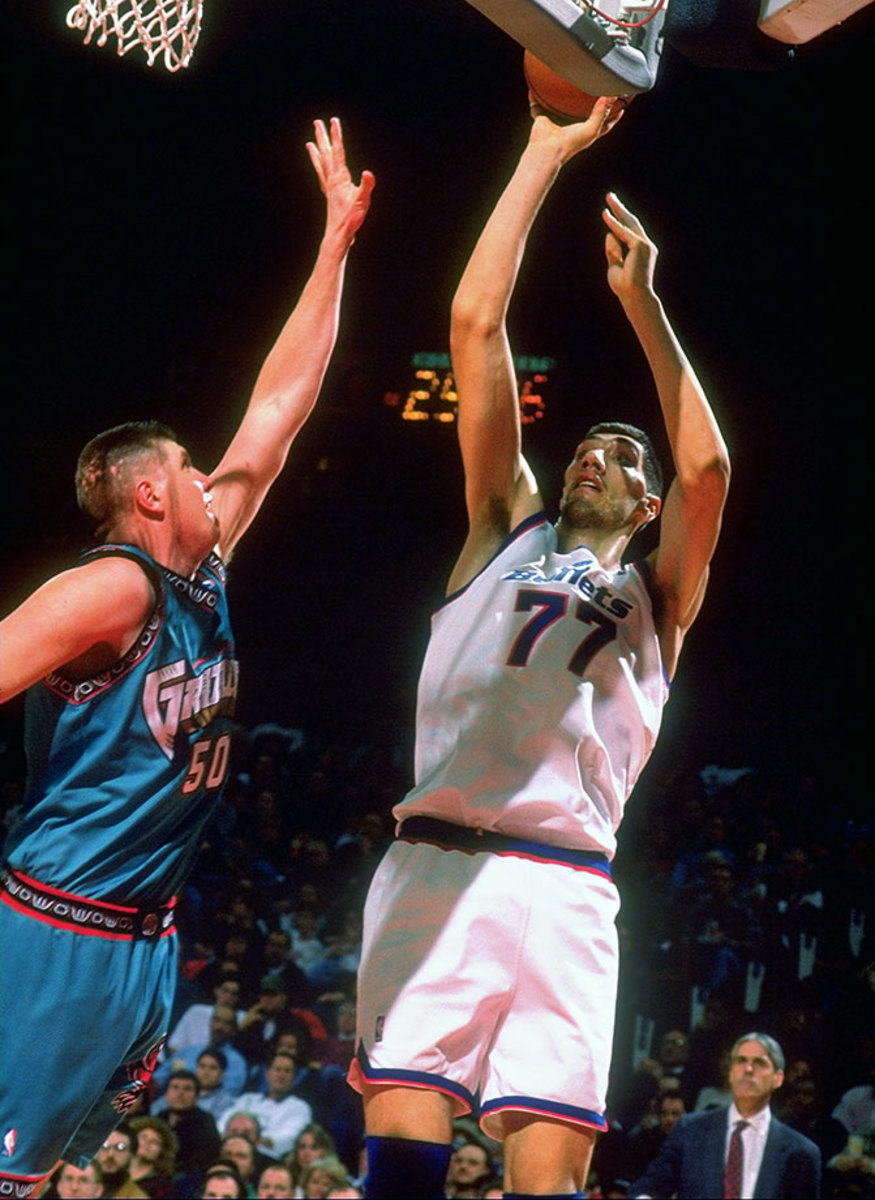
At 7’7”, Muresan is the tallest player in the NBA history, along with the late, great Manute Bol. Muresan earned the 1995-96 Most Improved Player award after averaging 14.5 points, 9.6 rebounds, 2.2 blocks per game while making a league-leading 58.4% of his field goals. — Runners-up: Vladimir Radmanovic, Jake Voskuhl
83 — Craig Smith
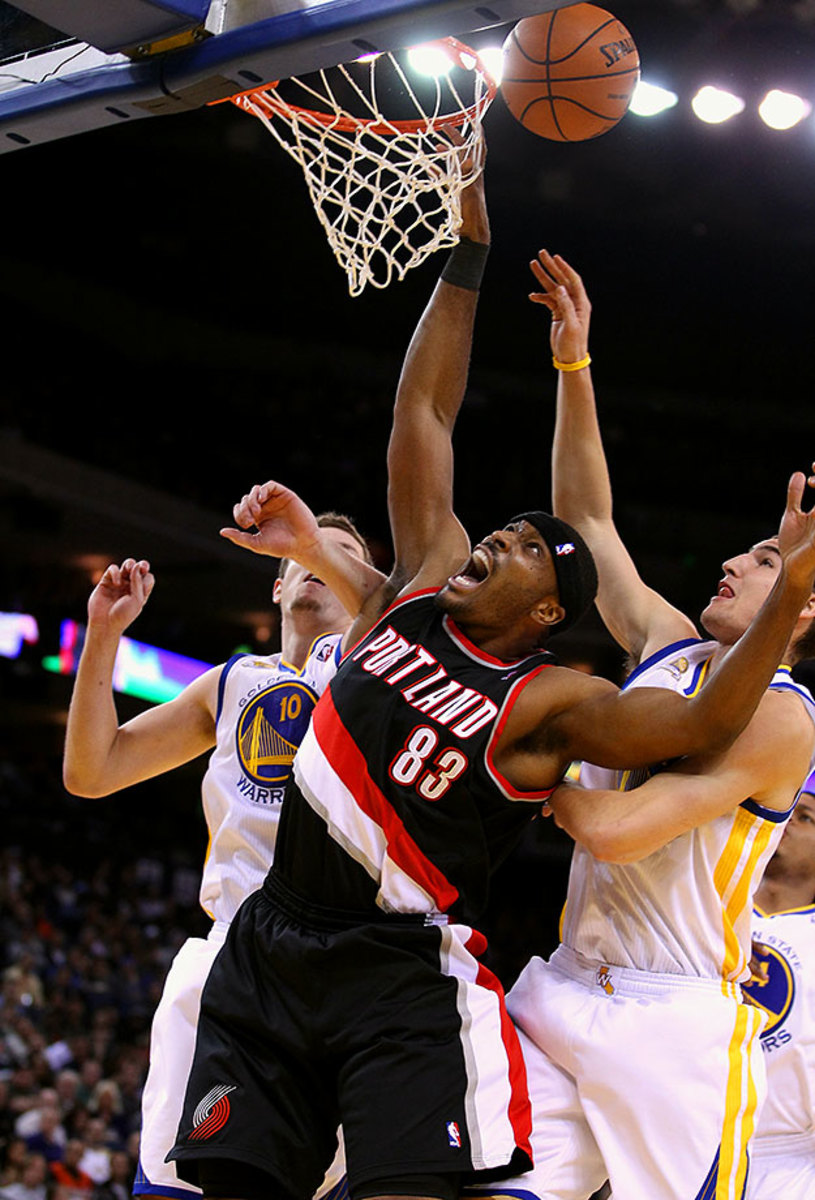
The 36th overall pick in the 2006 NBA draft, Smith is the only player to wear No. 83 in league history. Smith wore the number when he appeared in 47 games for Portland in the 2011-12 season. His best season came in 2008-09, when he averaged 10.1 points and 3.8 rebounds per game for Minnesota.
84 — Chris Webber
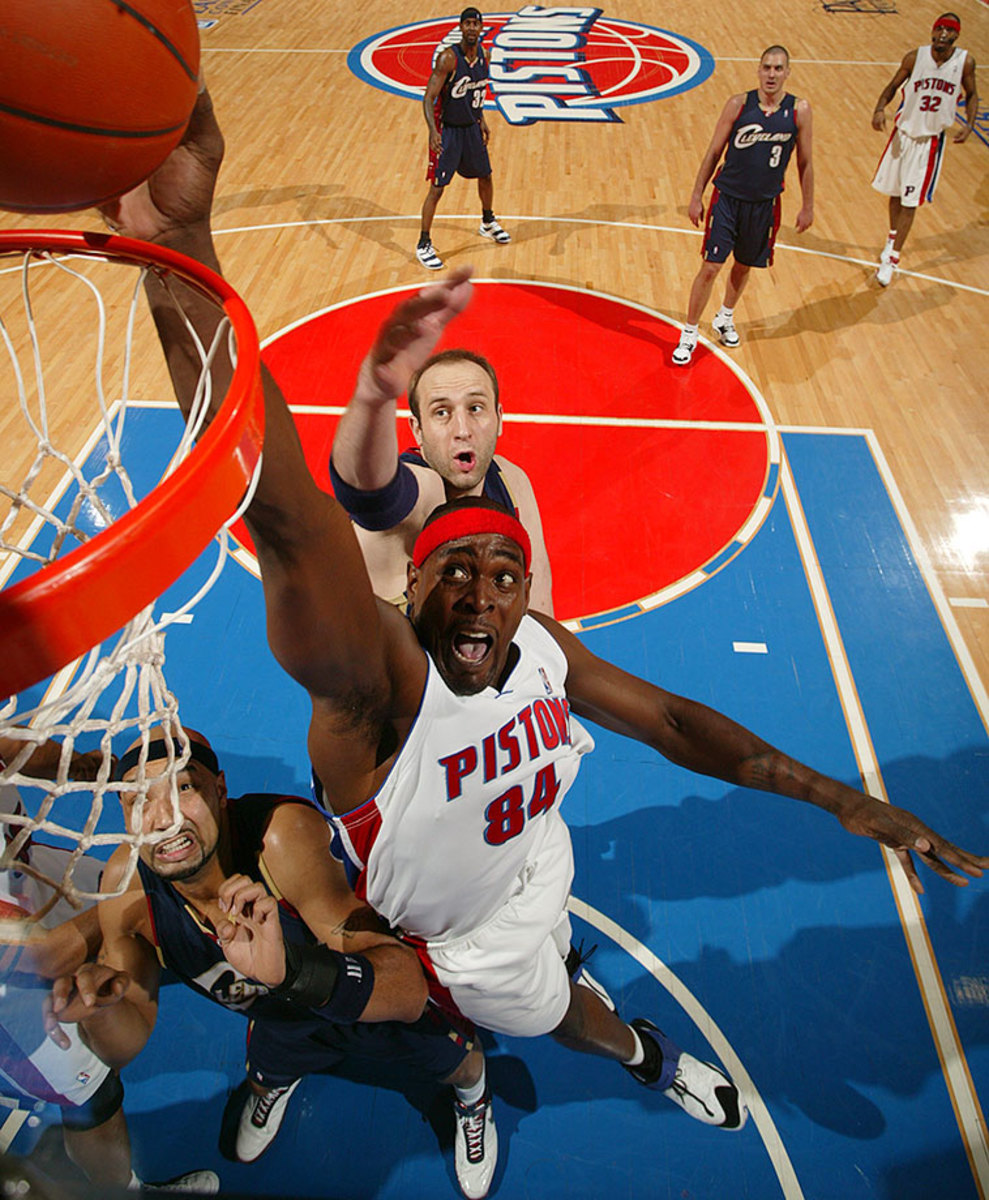
C-Webb only donned No. 84 after his prime, in his lone part of a season with Detroit after being traded in 2007. But Chris Webber was a dominant force before a serious knee injury in the 2003 playoffs, one of the NBA’s best post passers and dynamic power forwards. He was a five-time All-Star, averaging 20.7 points and 9.8 rebounds in 15 seasons. But the hopes of the entertaining Kings teams of the early 2000s went down when Webber did, and he would retire without a title to his name.
85 — Baron Davis
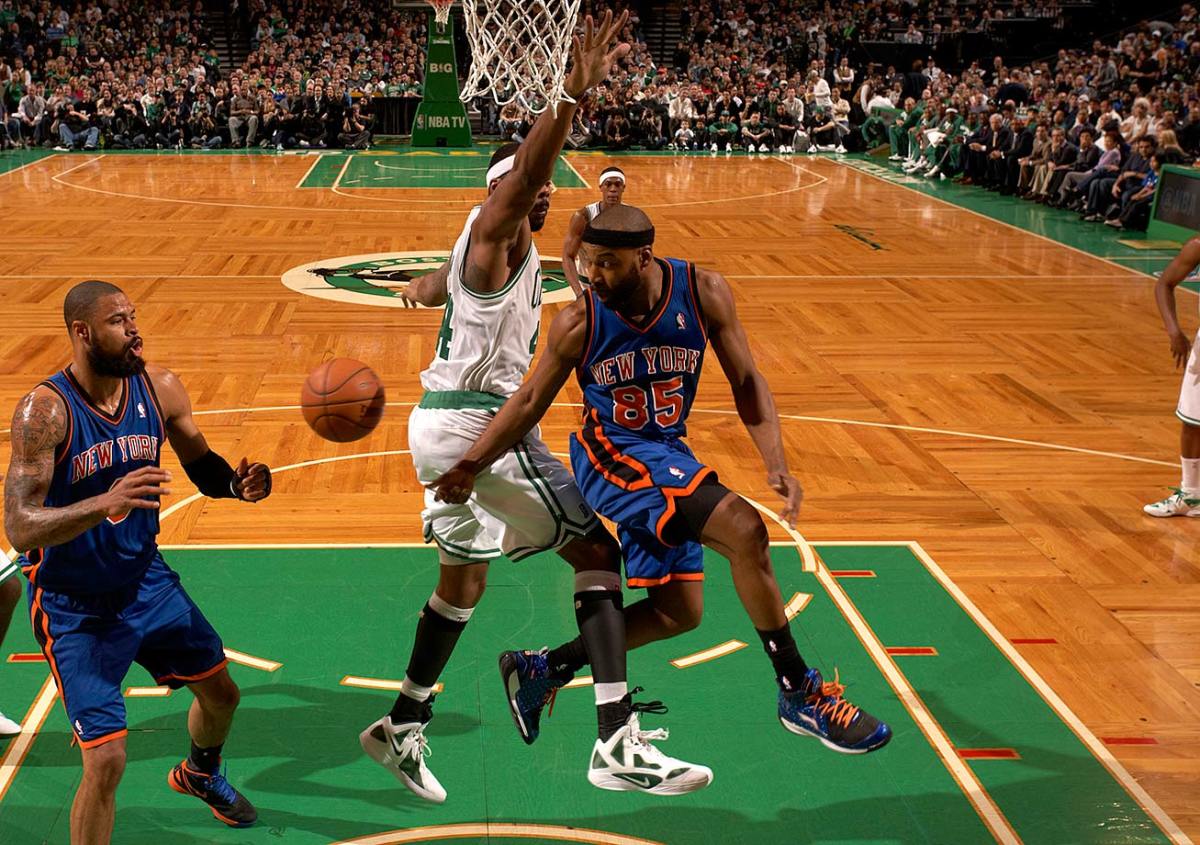
After the Hornets selected him third overall in the 1999 NBA draft, Davis became a two-time All-Star. He most notably led the eight-seeded Warriors to a 4-2 first round upset of the top-seeded Mavericks. He’s the only player in NBA history to wear No. 85, doing so for both the Cavaliers and Knicks.
86 — Semih Erden
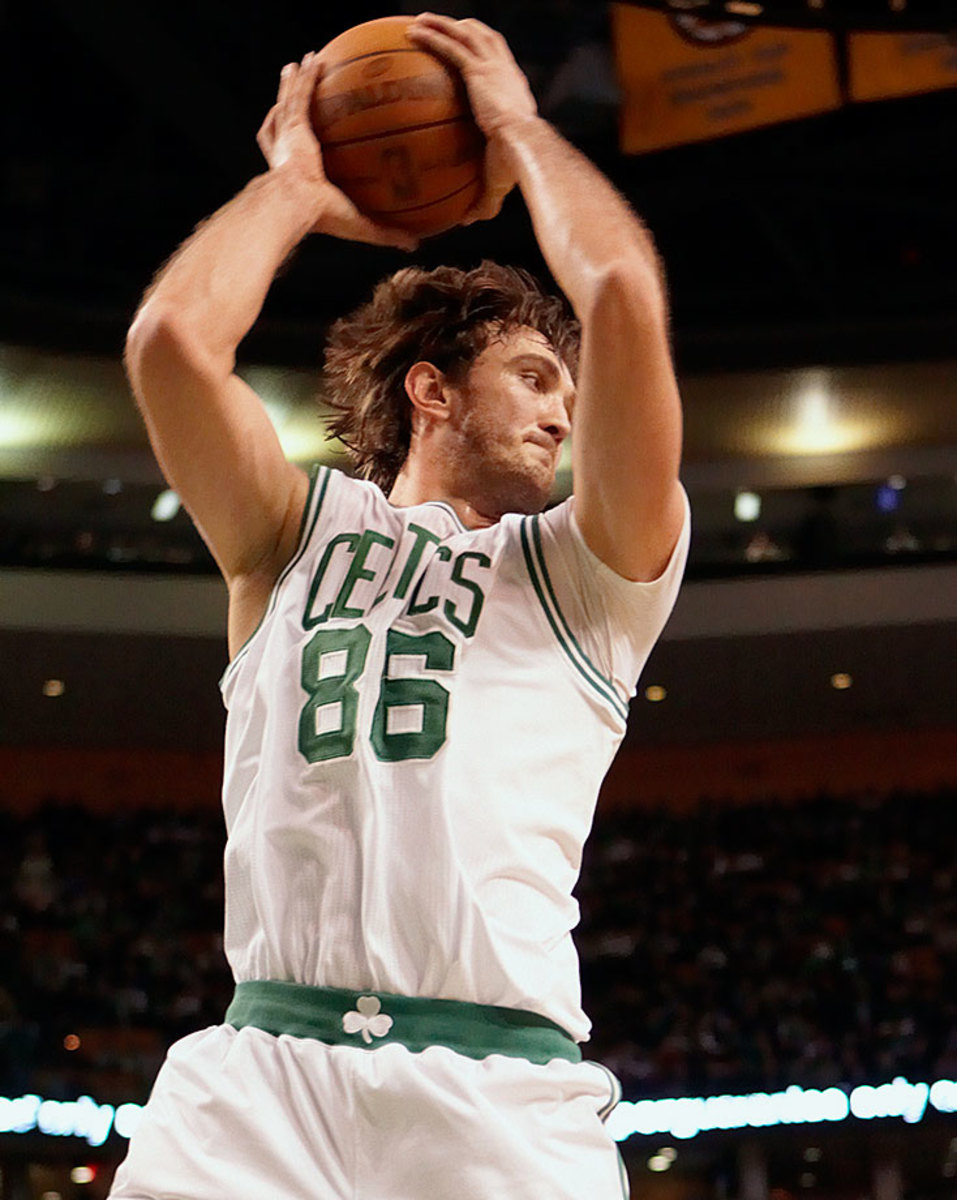
Erden, a 7-foot Turkish center, played three NBA seasons and played in just 69 games. He started nine games for the Cavaliers in 2011-12 and headed back overseas the next season, playing in his native country ever since. — Runner-up: Chris Johnson
88 — Nicolas Batum
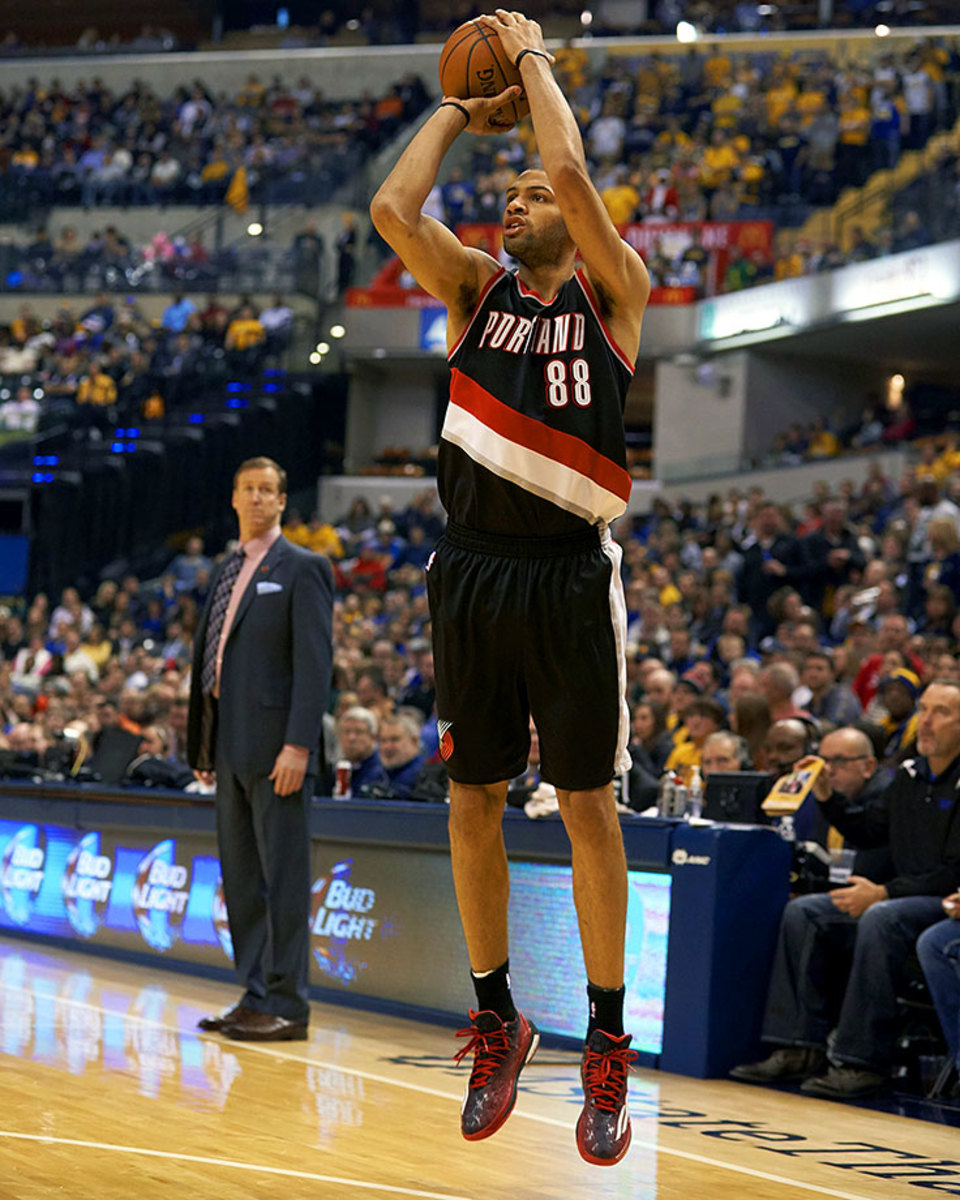
Batum, a late first-round pick, was traded to Portland from Houston for the rights to Darrell Arthur and Joey Dorsey on draft day 2008. His career’s been solid, with a well-rounded game and good size and ball skills. But 2012-13 was a highlight year for Batum, when he averaged 14.3 points, 5.6 rebounds and 4.9 assists. The Frenchman was traded to Charlotte in the off-season and will start fresh as a Hornet this fall. — Runner-up: Antoine Walker
89 — Clyde Lovellette
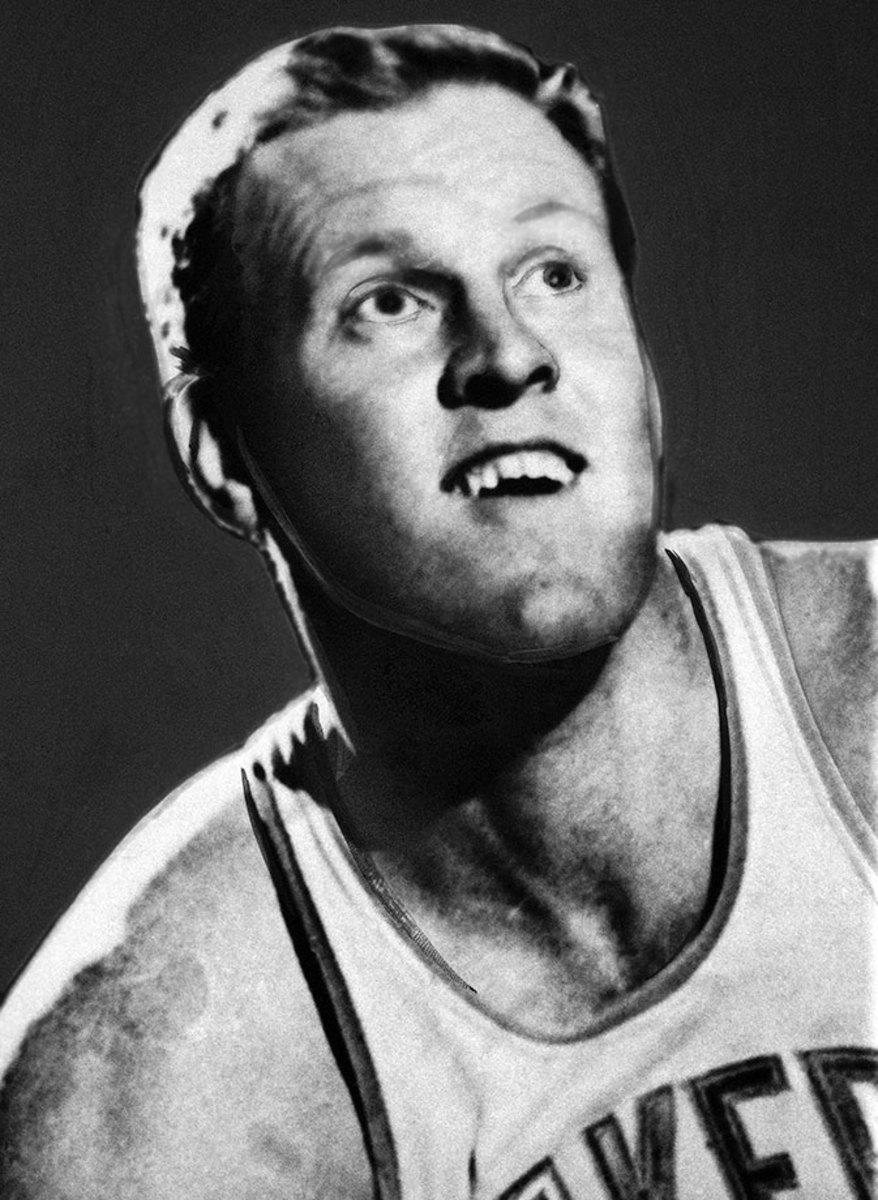
The ninth overall pick in the 1952 NBA draft, Lovellette wore No. 89 in his rookie season for the Minneapolis Lakers. A four-time All-Star, Lovellette averaged 17 points and 9.5 rebounds per game during his 11-year career. Lovellette was part of three NBA championship teams. — Runner-up: Louis Amundson
90 — Drew Gooden
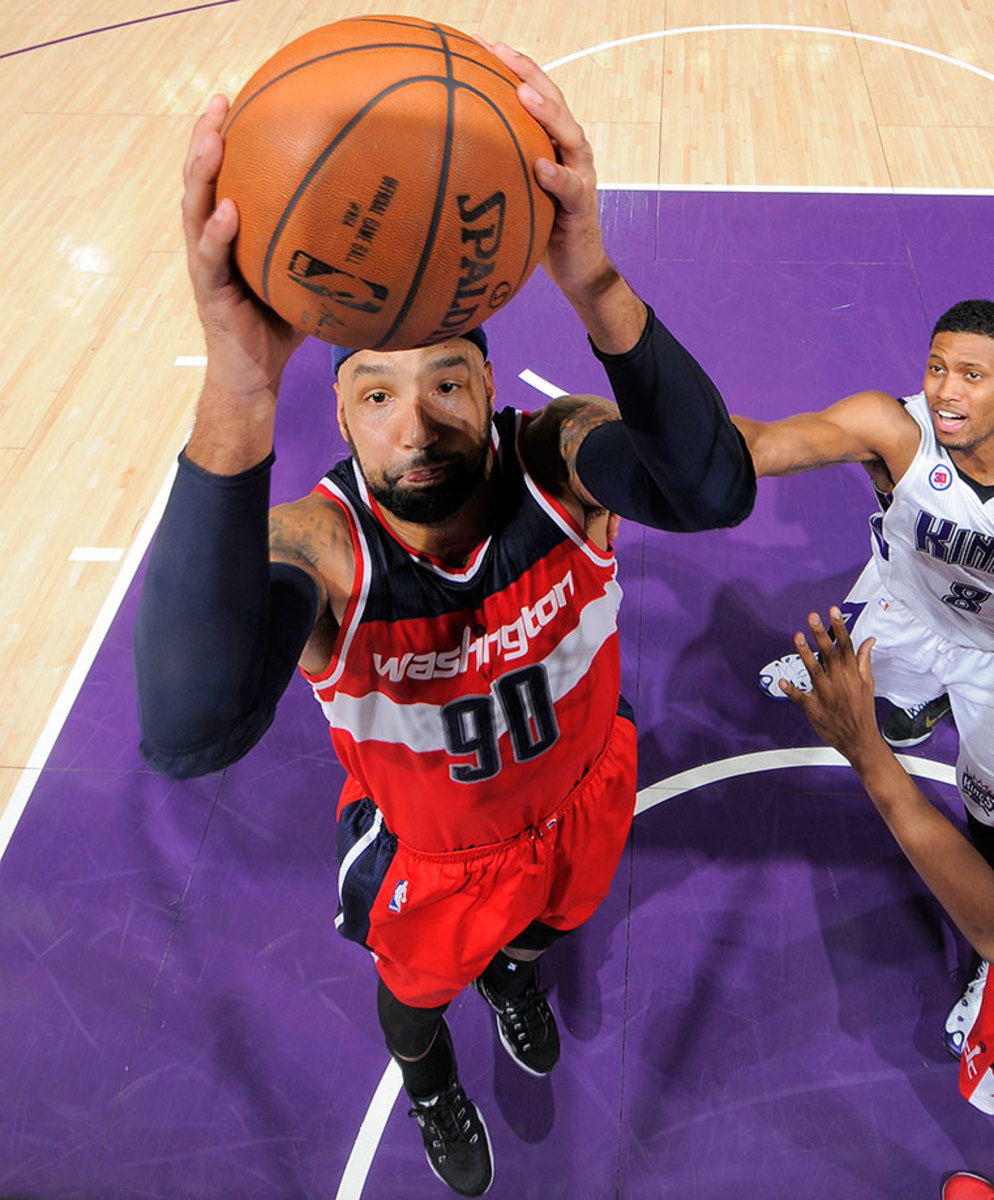
A number of NBA stops haven’t kept Gooden from posting decent production, though he has not quite justified his fourth overall selection in 2001. He came into a role with the Wizards last season and averaged double figures in scoring every season up until 2012.
91 — Dennis Rodman
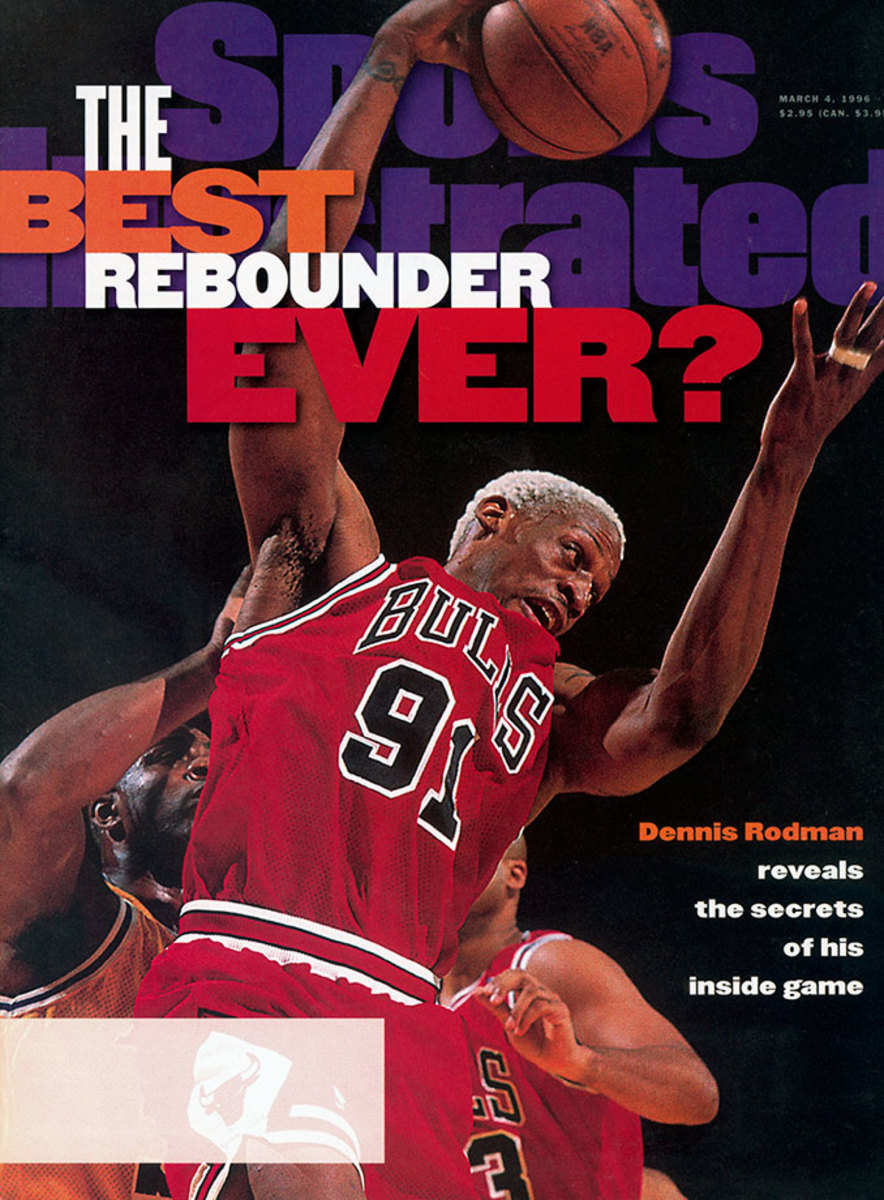
Rodman, appearing for the second time on this list, retired with a reputation as one of the NBA’s greatest rebounders ever, not to mention a strong defender and enormous off-court presence with a penchant for dying his hair on the regular. He won five titles, was Defensive Player of the Year twice, made seven All-Defensive first teams and two All-Star teams, and became one of America’s most polarizing athletes in the process.
92 — DeShawn Stevenson
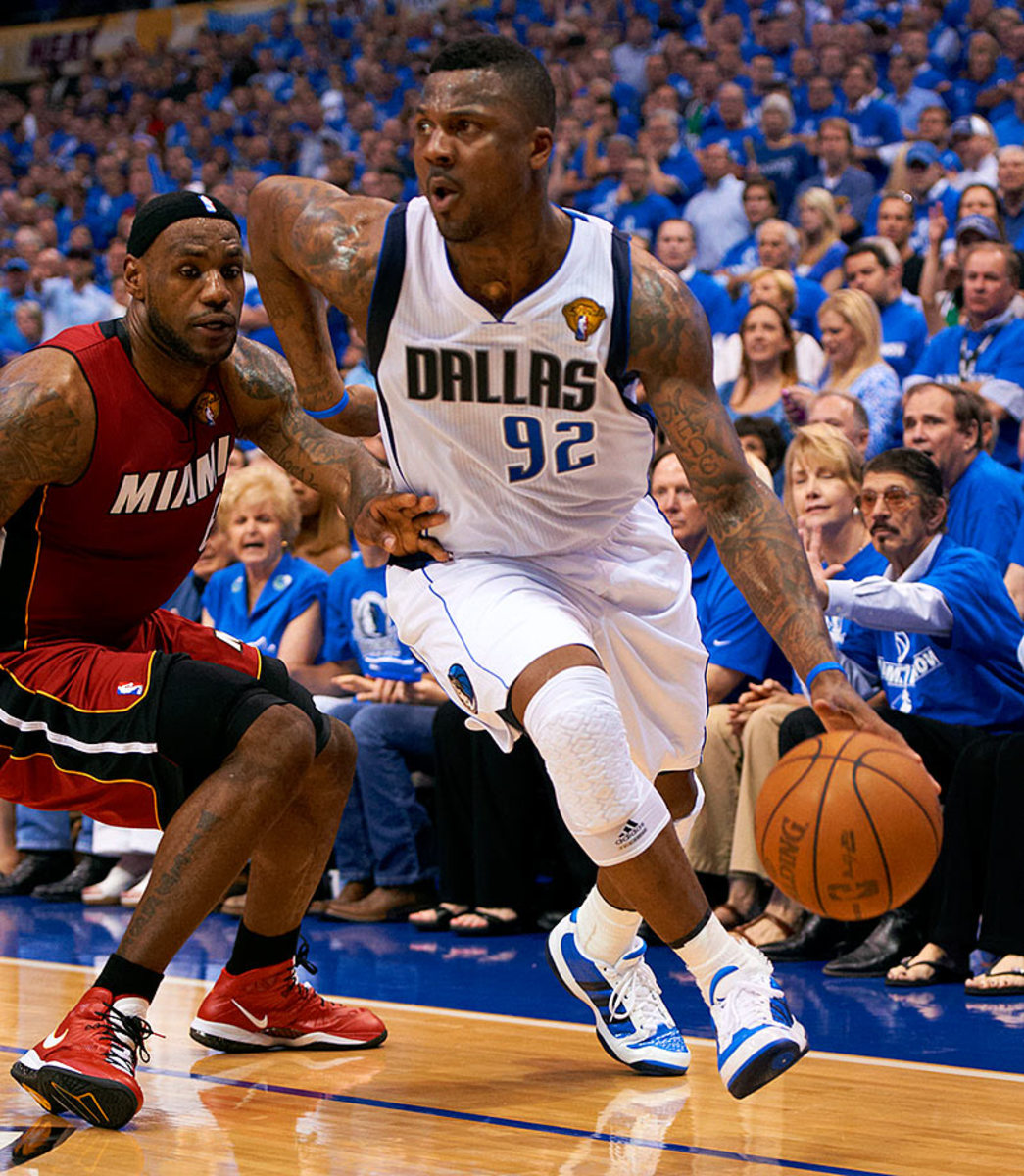
Stevenson never came close to his prep-star hype, but bounced around supplying average production much of his career. He had a moment for the Mavericks during their 2011 title run, famously proclaiming himself the “LeBron stopper.” And hey, Dallas topped Miami. For all we know, he still holds that title.
93 — Metta World Peace (Ron Artest)
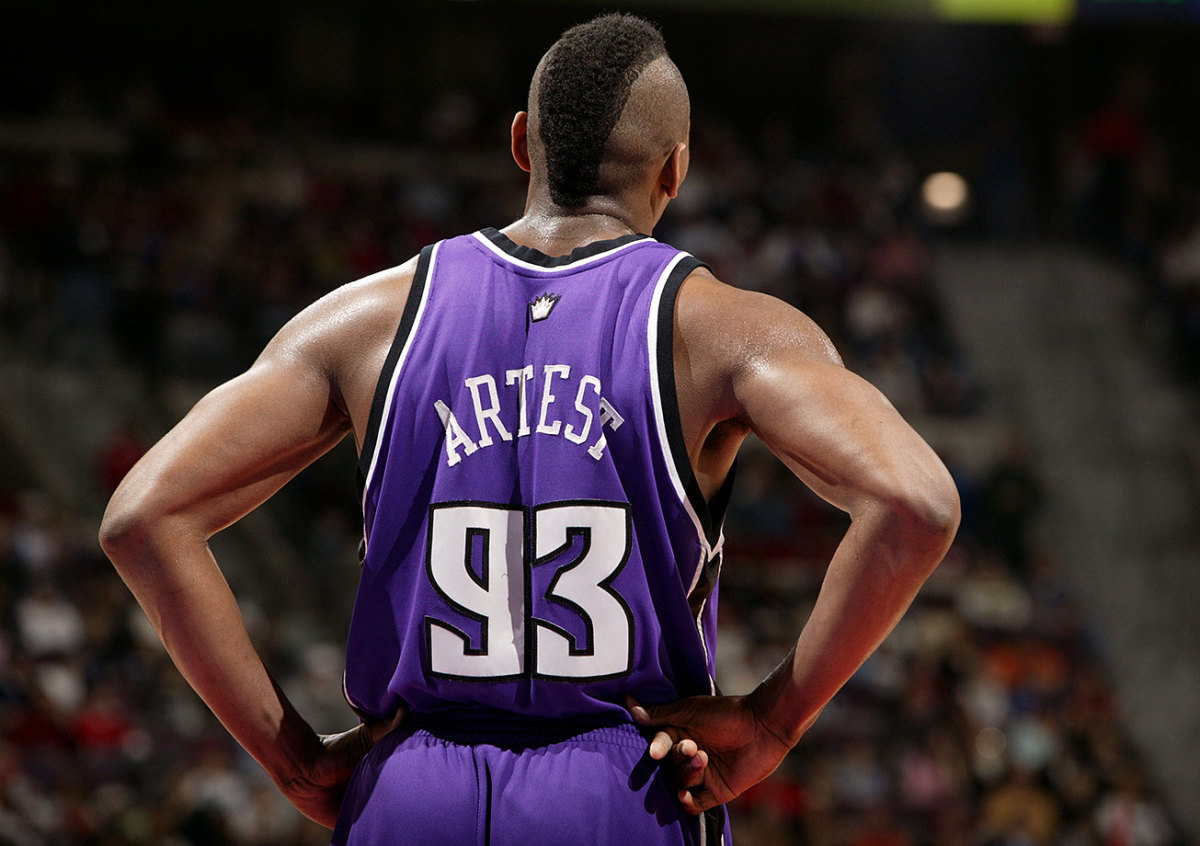
Before changing his name to Metta World Peace, Ron Artest wore No. 93 from 2006-08 with the Sacramento Kings. Artest donned seven different numbers in his career, and his personality and antics both on and off the court have overshadowed just how good he was in his prime. An elite, versatile defender for many years, Artest was averaging 24.6 points per game in 2005 before being suspended for the “Malice at the Palace” incident and missing the entire season.
94 — Evan Fournier
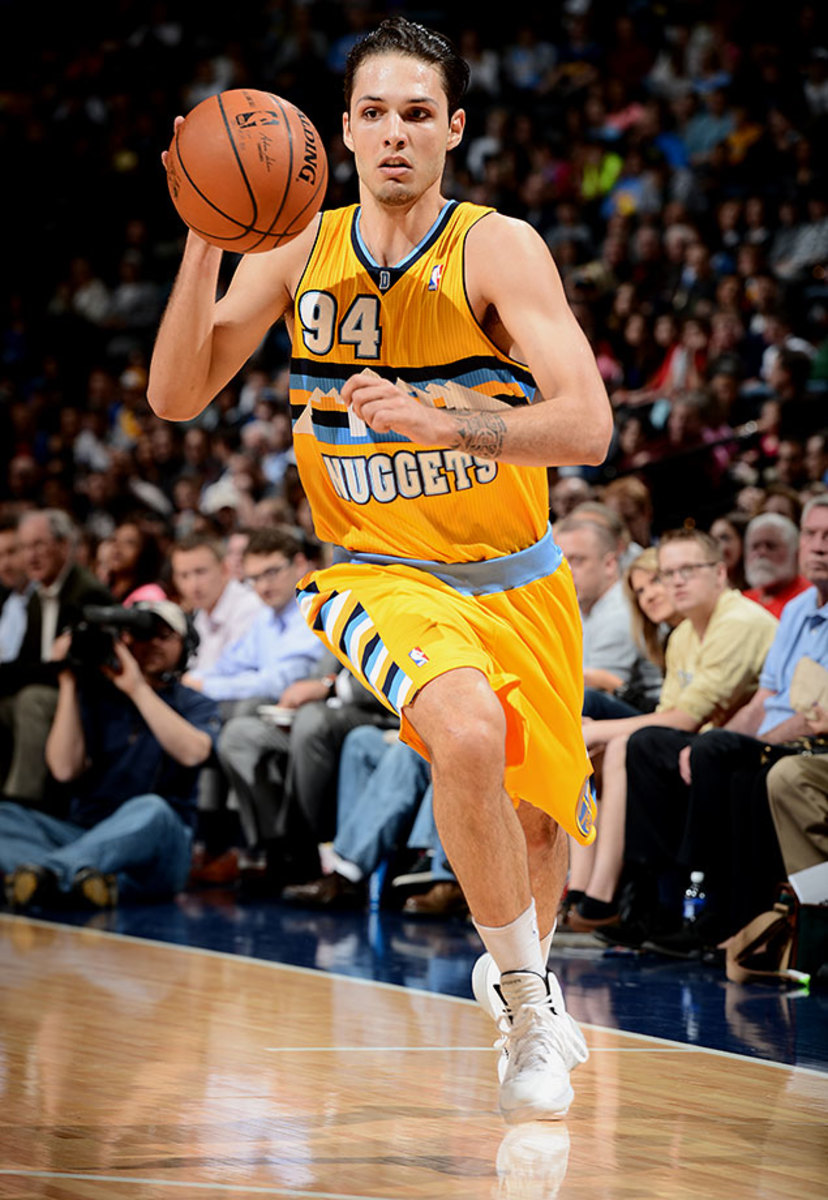
The French guard took a step forward last year at age 22, averaging 12 points per game for the Magic. He’s become a member of the French national team as well. The best may still be to come.
96 — Metta World Peace (Ron Artest)
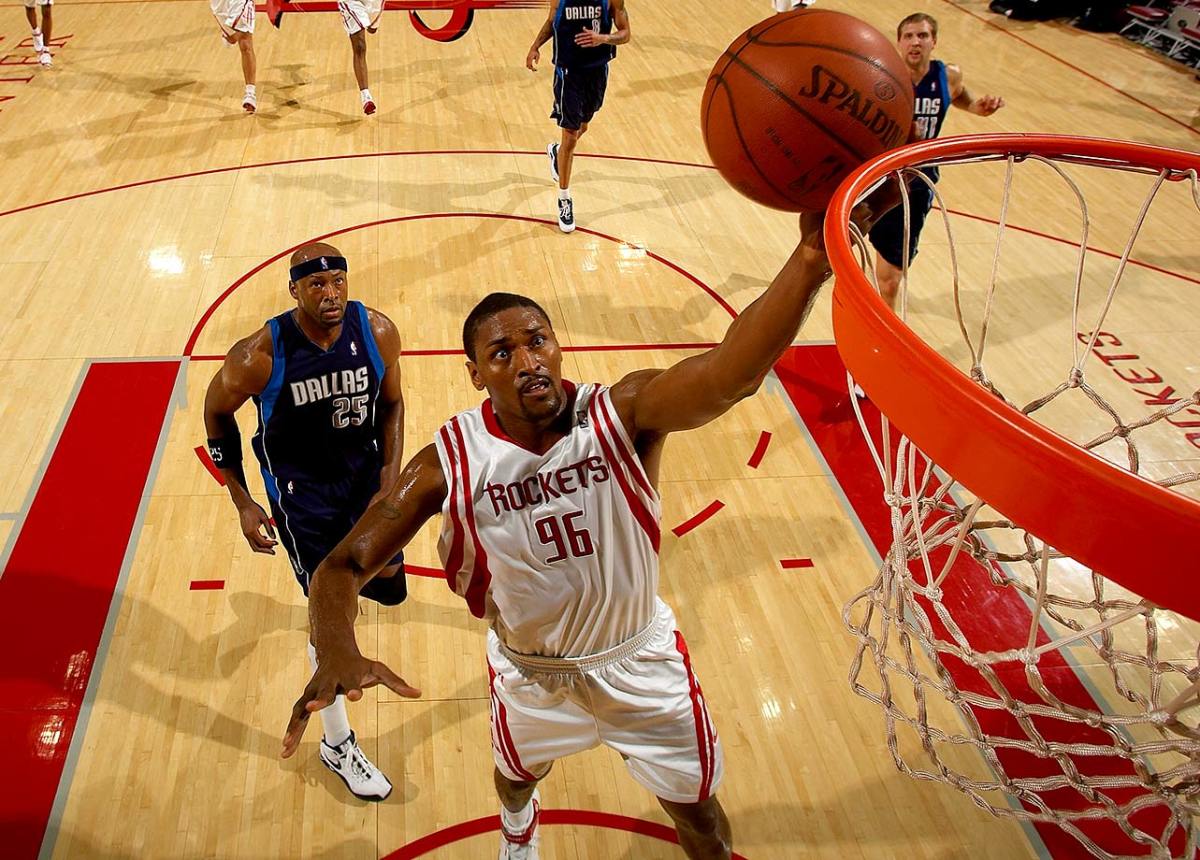
Not surpisingly, a player who donned seven different numbers in his career would appear twice on this list. Metta World Peace, then Ron Artest, wore No. 96 in the 2008-09 season with the Houston Rockets. He led the team in three-pointers and steals, finishing second in scoring behind Yao Ming. He won a title with the Los Angeles Lakers the following season.
98 — Jason Collins
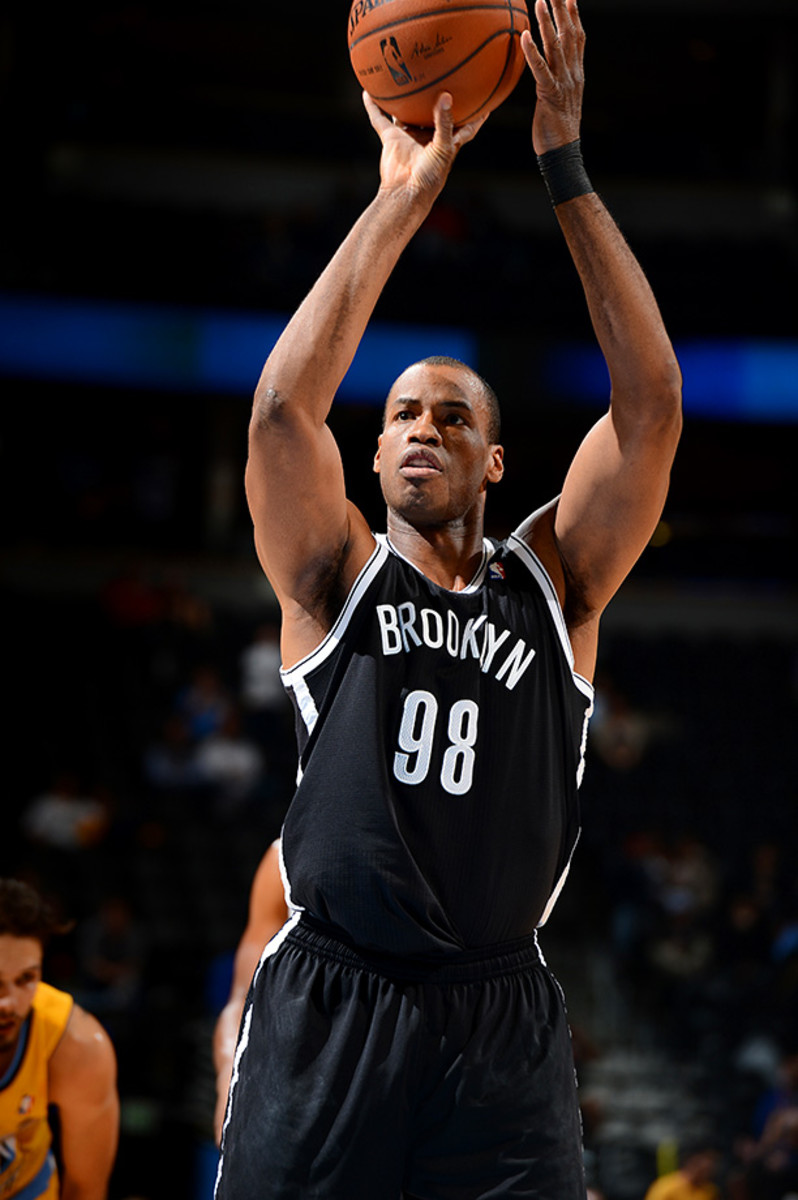
Collins never lived up to his first-round selection, but carved out a niche as a defensive-minded reserve center and hung around for 13 seasons. He averaged 3.6 points and 3.7 rebounds for his career. Collins became the first openly gay NBA player in 2014 and chose number 98 to honor Matthew Shepard, who was murdered in a 1998 hate crime.
99 — George Mikan
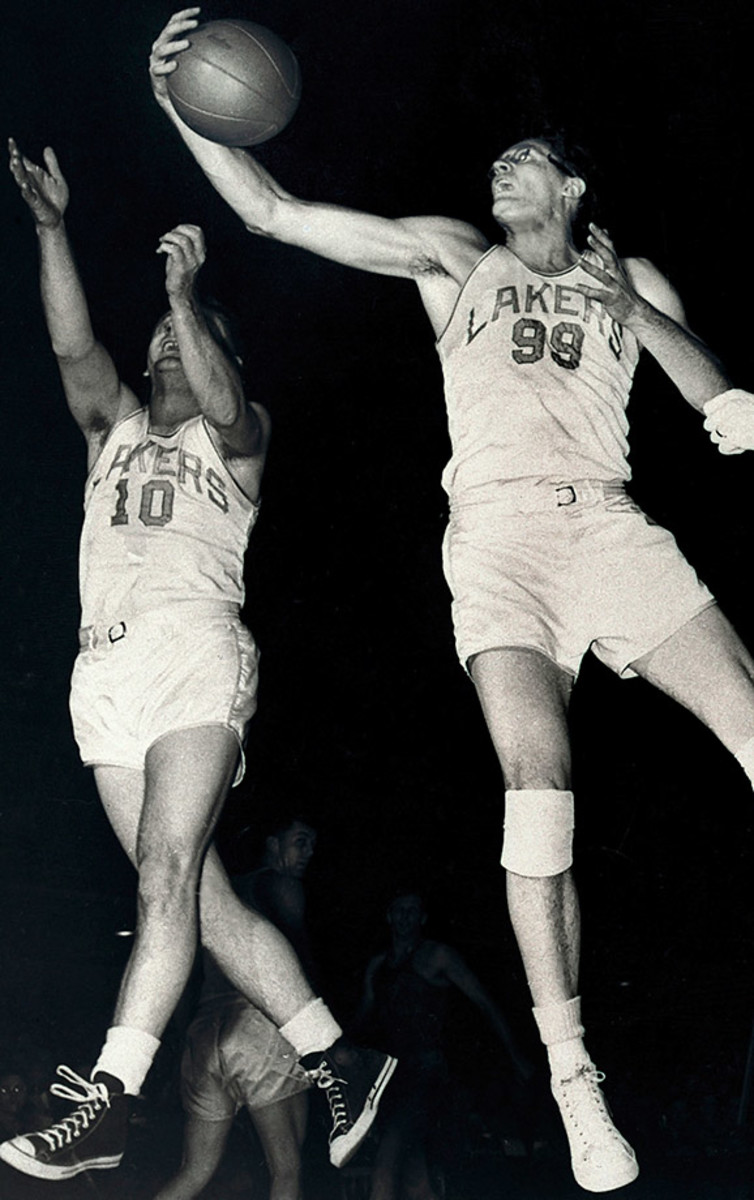
One of the game’s original superstars, Mikan was quite literally a giant among men at 6’10” in the 1940s and 1950s. He led the Lakers to four NBA championships and one BAA title before becoming an NBA franchise. Mikan was a four-time All-Star and was named one of the 50 greatest players in NBA history in 1996.
